Cornrows have long been a staple hairstyle within various cultures around the world. Valentine's Day is approaching. You can choose a fashionable hairstyle that's exclusive to you. Known for their neat appearance and intricate patterns, cornrows are a versatile and protective hairstyle that both men and women can adorn. However, for individuals experiencing thinning hair, the decision to wear cornrows comes with a fair amount of hesitation and concern. The question arises: Can you get cornrows with thinning hair without causing further damage? This article explores this very topic, weighing the pros and cons and offering guidance for those with thinning locks who wish to try out this popular hairstyle.
Understanding Thinning Hair
Thinning hair is the slow loss of hair density, which can eventually lead to baldness if not treated. It can be caused by a number of variables, including heredity, hormonal changes, medical disorders, and even particular hair styling techniques. Dandruff, psoriasis, and dermatitis are all potential causes of thinning hair.
Choosing the appropriate hairstyle is critical for persons with thinning hair. While some styles might conceal hair loss and help manage thinning hair, others can yank on the hair and exacerbate the problem.
Pros and Cons of Cornrows for Thinning Hair
Pros of Cornrows for Thinning Hair
Protective Style: Cornrows can protect your hair from the daily wear and tear of styling practices that may exacerbate thinning, such as heat styling or rough combing.
Low Manipulation: Once cornrows are installed, they require minimal handling, which reduces the risk of mechanical damage from daily styling efforts, a significant benefit for hair that is already thinning and fragile.
Encourages Growth: With proper installation and maintenance, cornrows can protect the hair from breakage, potentially allowing for better hair growth.
Versatility: Even with thinning hair, cornrows offer various styling options, from straight-back braids to intricate patterns, allowing for creativity and personal expression.
Convenience: Cornrows can be a time-saving solution for those with busy lifestyles, as they can last several weeks with proper care, reducing the need for constant hair maintenance.
Moisture Retention: Properly maintained cornrows can help retain moisture in the hair, as the enclosed braiding can protect the hair from drying environmental factors.
You May Also Like: How to care for cornrow braids >>
Cons of Cornrows for Thinning Hair
Risk of Traction Alopecia: The biggest concern with cornrows for thinning hair is the risk of traction alopecia, which can occur when braids are too tight, pulling on the hair follicles over time and leading to hair loss.
Stress on Hair Follicles: Even braids that are not excessively tight can stress hair follicles, potentially weakening them and leading to increased hair thinning.
Scalp Tension: The tension from cornrows can cause discomfort and may even lead to headaches in some individuals, mainly if the hair is already thin and the scalp is sensitive.
Limited Access to the Scalp: Cornrows can make it difficult to thoroughly wash and treat the scalp, which is crucial for those dealing with thinning hair and scalp issues.
Buildup: Cornrows can trap product buildup and sweat against the scalp, potentially leading to irritation or scalp conditions that could worsen thinning.
Edge Stress: The hair around the edges is often finer and more fragile, making it more susceptible to breakage from tight cornrows.
Long-term Commitment: While being a low-maintenance style, cornrows are a commitment. If they cause any damage, the results can be long-lasting, as hair that is already thinning may take a significant time to recover.
Hygiene Concerns: Keeping the scalp clean when wearing cornrows can be challenging, and poor scalp hygiene could lead to further hair thinning or loss.
Cost of Maintenance: While cornrows themselves are a protective style, they may require investment in specific products or treatments to maintain the health of the hair and scalp, which could be costly over time.
Weighing the advantages and downsides is crucial for anyone choosing cornrows, especially those with thinning hair. It is critical to balance the desire for a specific hairstyle and practical issues such as hair health and maintenance. The best course of action is to consult with a hair care professional who can provide specific suggestions depending on your hair's current condition.
Essential Considerations Before Getting Cornrows
Before obtaining cornrows, people with thinning hair should check with a competent hairstylist or trichologist. This expert studies the condition of the hair and scalp. These professionals can evaluate the state of your hair and scalp and provide personalized suggestions.
Choosing an expert braider is also essential. A good braider understands the proper tension to apply to avoid causing damage to thinning hair. JALIZA Wig Store is a premier destination for those seeking premium wig solutions, meticulously crafted to meet the diverse needs of black women. Our extensive catalog spans an array of styles, materials, and hues, ensuring that every individual can find a wig that aligns with their personal aesthetics and lifestyle requirements. The inclusive range of products on our platform is a testament to our commitment to quality and variety. For a more classic and protective style, our braids wig range offers timeless beauty and a durable design, perfect for anyone looking to maintain their hair's health while sporting a sophisticated look.
.
Alternative Hairstyles for Thinning Hair
Hairstyles that give volume to the hair, such as layered cuts or textured styles, can help persons with thinning hair by creating the illusion of fullness. Several protective hairstyles are gentler on the scalp than cornrows, such as loose twists or boho braids. 
Tips for Cornrows with Thinning Hair
For those with thinning hair wishing to wear cornrows, there are several crucial tips to consider that can help minimize damage and promote healthy hair.
Choose the Right Braider
Select a braider who understands the delicacy required for thinning hair. An experienced braider who can work gently and carefully is essential. They should be able to adjust their technique to ensure that the cornrows are not too tight, which will help reduce the risk of traction alopecia.
Prepare Your Hair
Before getting cornrows, prepare your hair by treating it with strengthening and nourishing products. Use a protein treatment to reinforce the hair strands, and apply a deep conditioning treatment to ensure that your hair is as healthy and resilient as possible.
You May Also Like: Can I keep cornrow braids in for 3 months >>
Communicate Clearly
Have a candid conversation with your hairstylist about your hair concerns. Ensure they know you have thinning hair and discuss the desired braid size and tension. Smaller cornrows can sometimes cause more stress on the scalp, so consider opting for more extensive, looser braids.
Looser is Better
Ask for your cornrows to be braided loosely, especially around the hairline where the hair is most fragile. The braids should be secure but should not pull on the scalp. You shouldn't feel pain or discomfort once your cornrows are in place.
Scalp Care
Maintain a healthy scalp environment by using lightweight oils or sprays designed for scalp nourishment. A healthy scalp promotes healthy hair growth. Avoid excessive amounts of products that can accumulate and clog hair follicles, resulting in additional thinning.Nighttime Care
Protect your cornrows at night. Wear a silk or cotton scarf or pillowcase to lessen friction and stress on your hair while you sleep.
Adhering to these tips can help individuals with thinning hair enjoy the benefits of cornrows while minimizing potential damage. Always prioritize your hair and scalp's health, and be willing to change your haircare routine as needed to keep your hair in good condition.
You May Also Like: How to style cornrow braids >>
Aftercare and Maintenance
Wearing cornrows requires proper treatment, significantly if your hair is thinning. Keep the scalp clean and hydrated, and don't leave the cornrows in for too long to avoid tension and stress on the hair follicles. Cornrows usually are removed after six weeks.
Be aware of any stress indicators on your hair or scalp, such as redness, pimples, or severe irritation, as these may signal that the cornrows are too tight or that it's time to remove them.
Conclusion
Cornrows can be a protective and fashionable alternative for persons with thinning hair, but they should be used with caution. Prioritize the good condition of your hair and scalp by seeking professional guidance, hiring an experienced braider, and choosing looser braids to alleviate tension. Individuals with thinning hair might profit from cornrows without jeopardizing their hair's health with the proper care and upkeep. Remember, embracing your style is crucial, but not at the expense of your hair's health. the cornrow wig collection at JALIZA captures the essence of traditional African hairstyling, reimagined for modern wear with ease and comfort.
Each wig is designed with attention to detail, ensuring that the fit is secure and the appearance, flawless. These options, along with many others, are available to explore on our website, where the perfect blend of fashion-forward design and protective styling awaits. Within our collection, the boho braided wig stands out as a fusion of free-spirited style and intricate design. It is ideal for those who desire a look that's both bohemian and meticulously crafted.


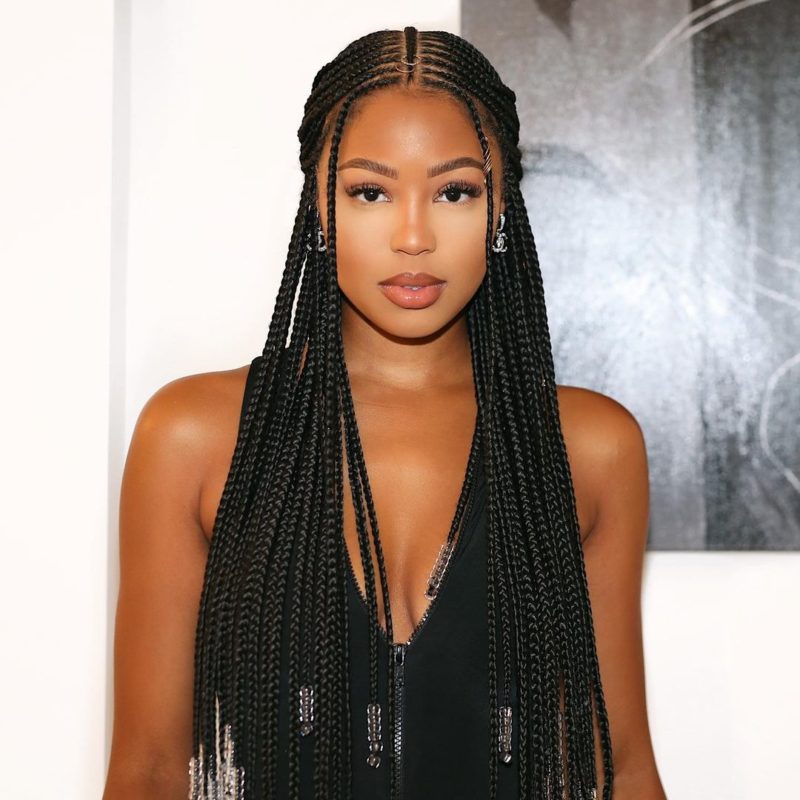
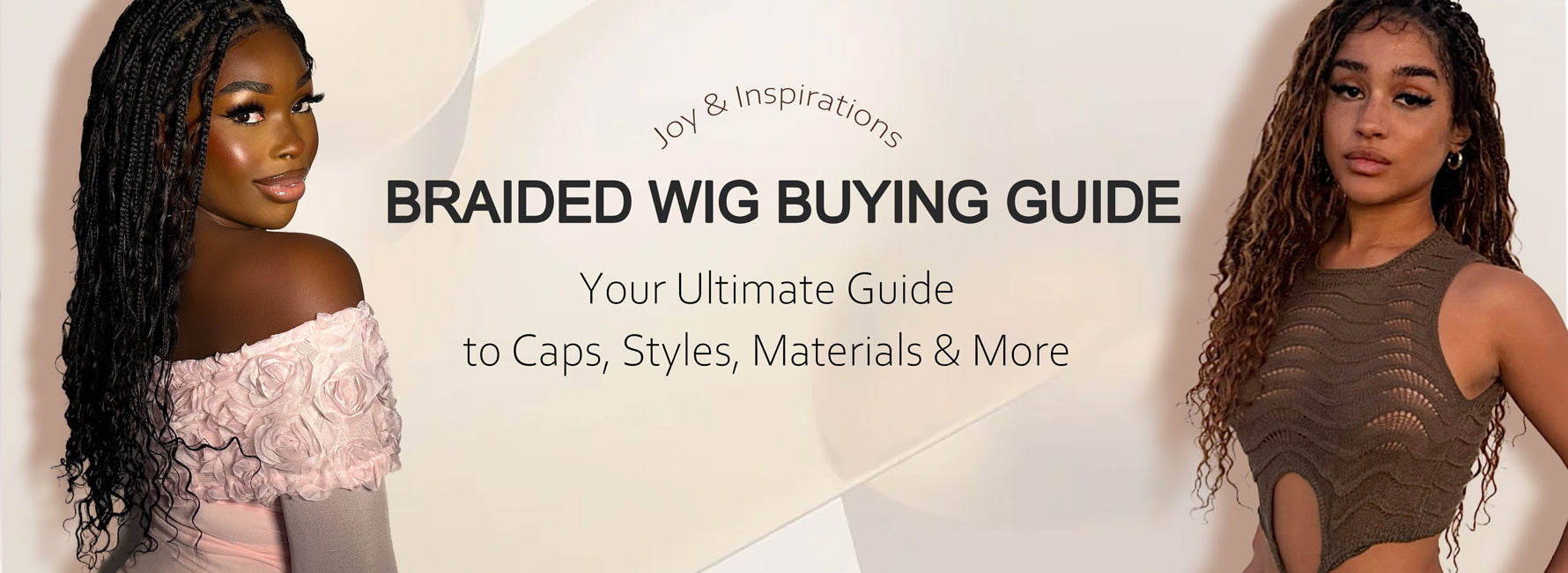
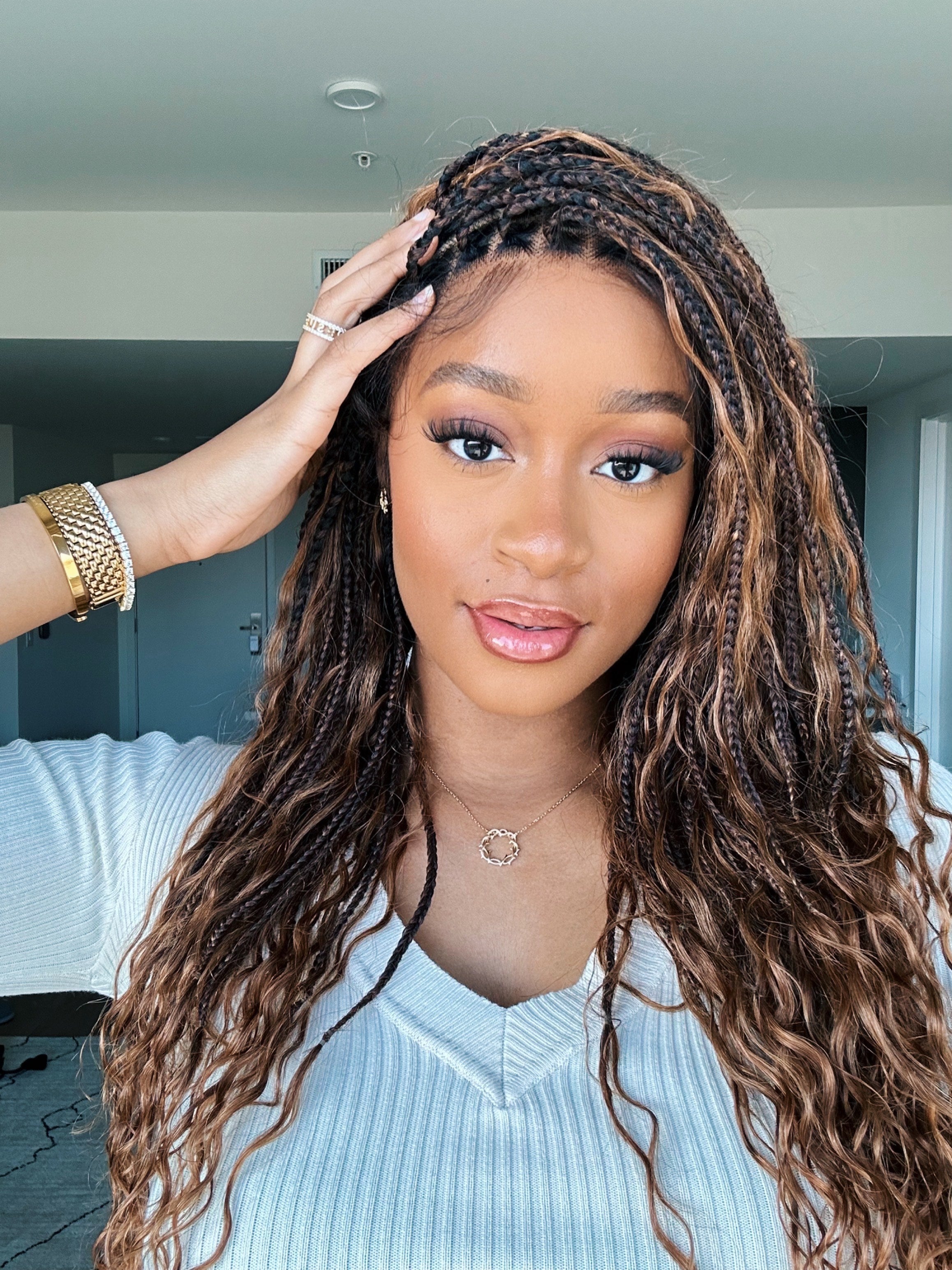

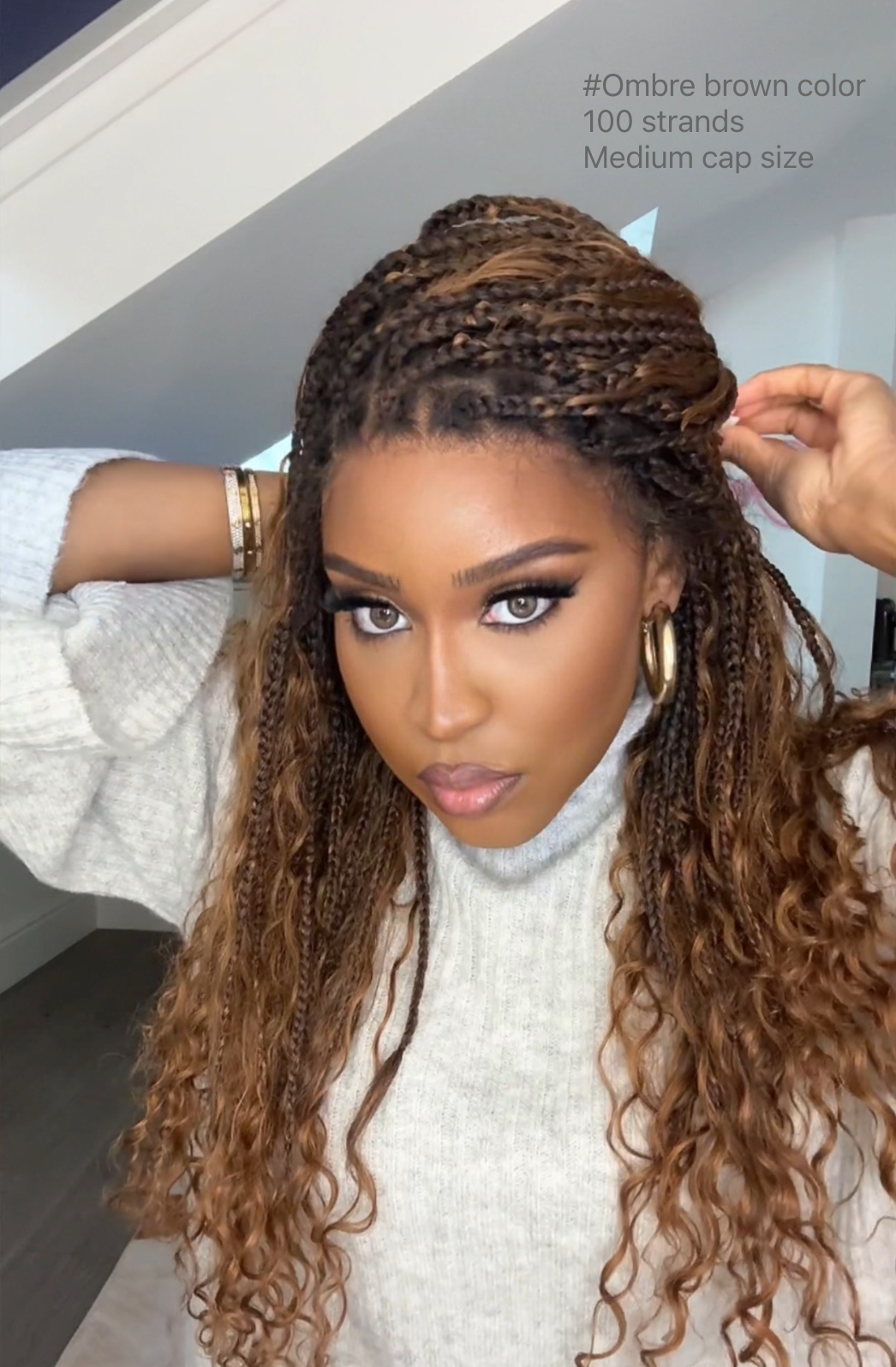
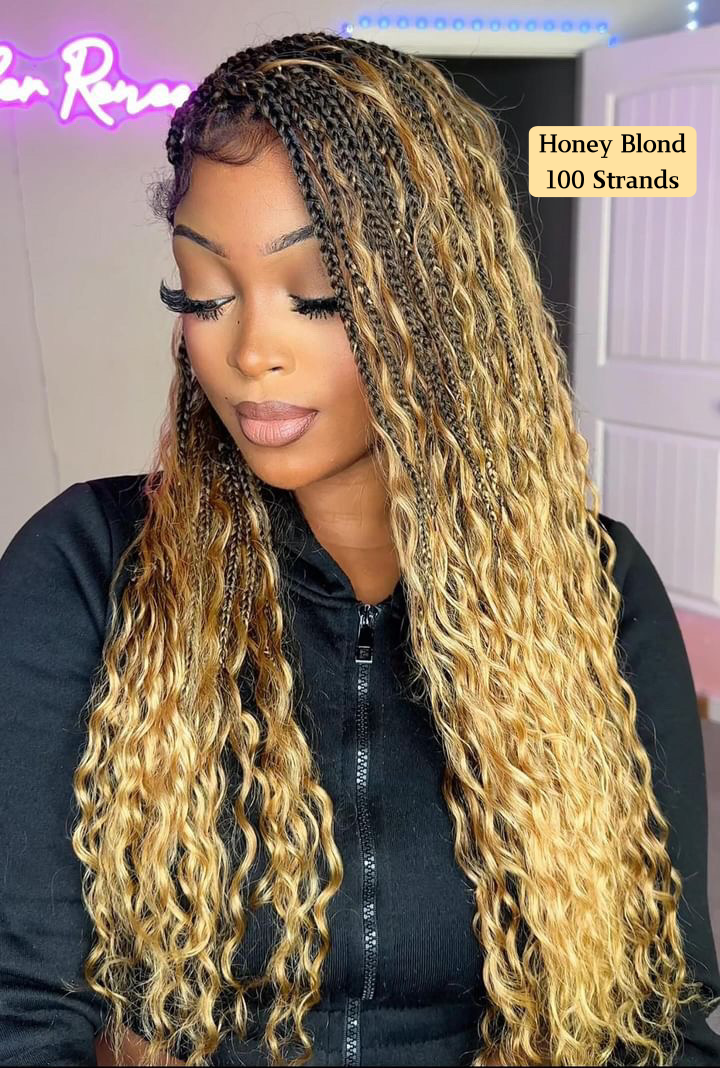
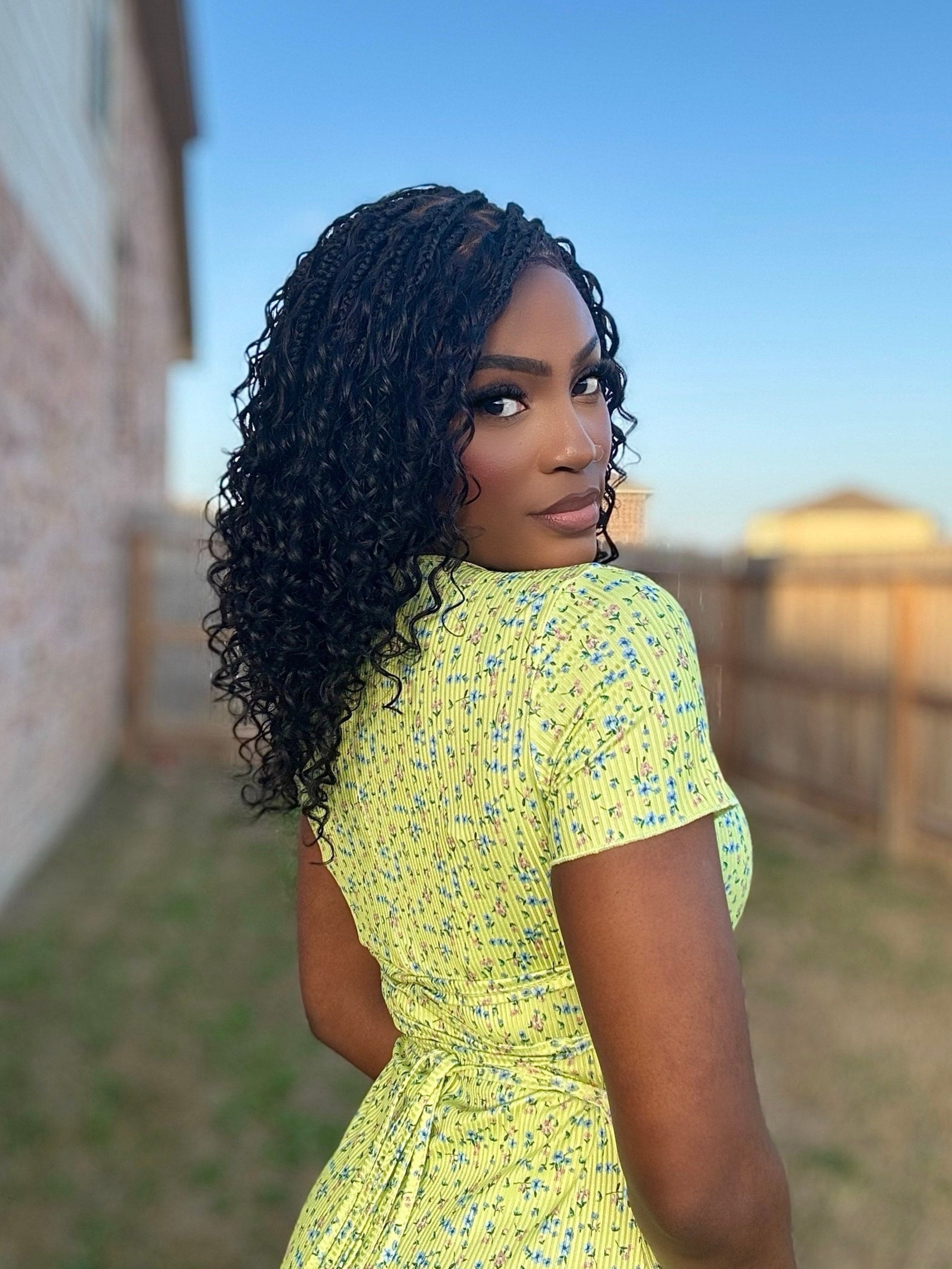
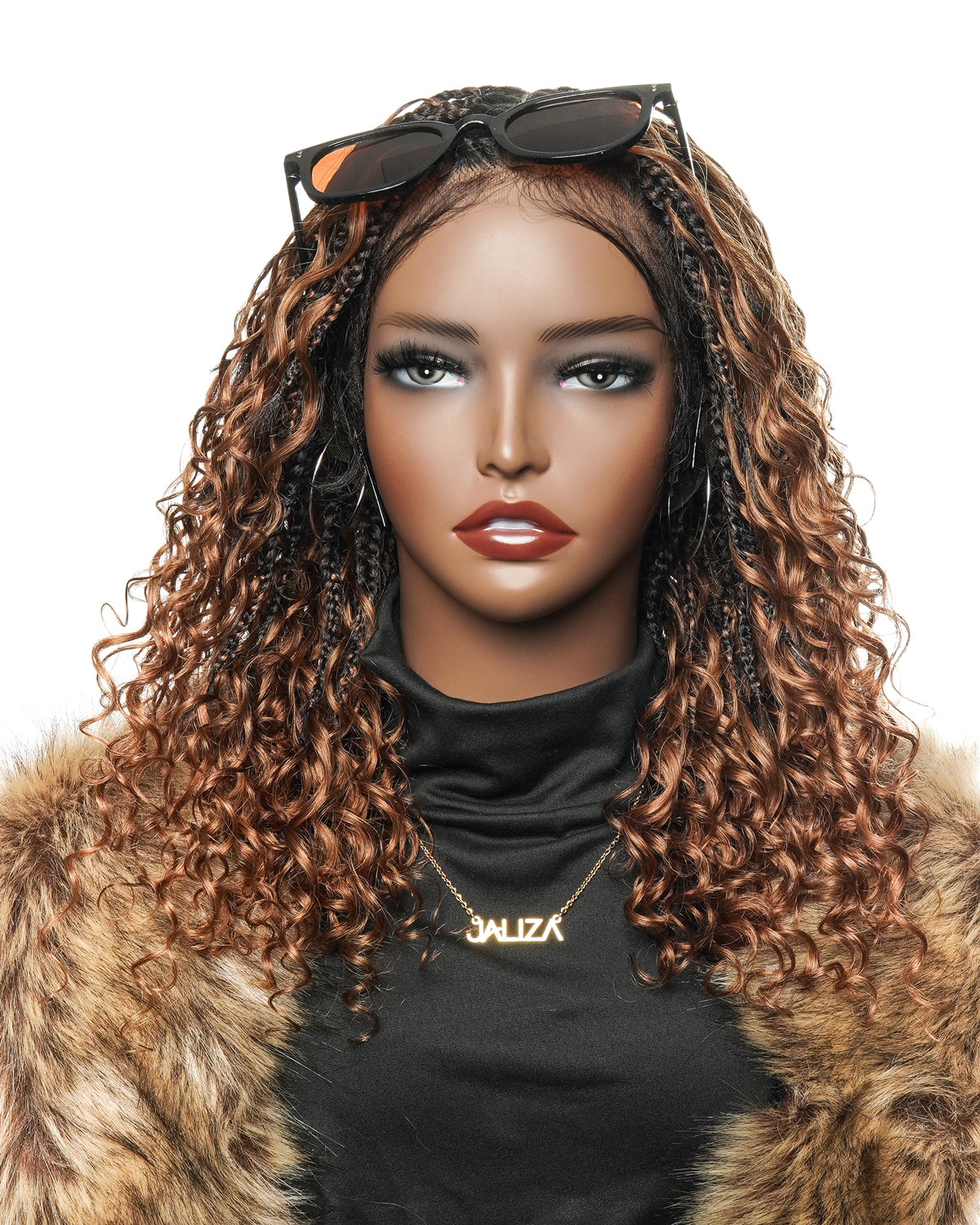
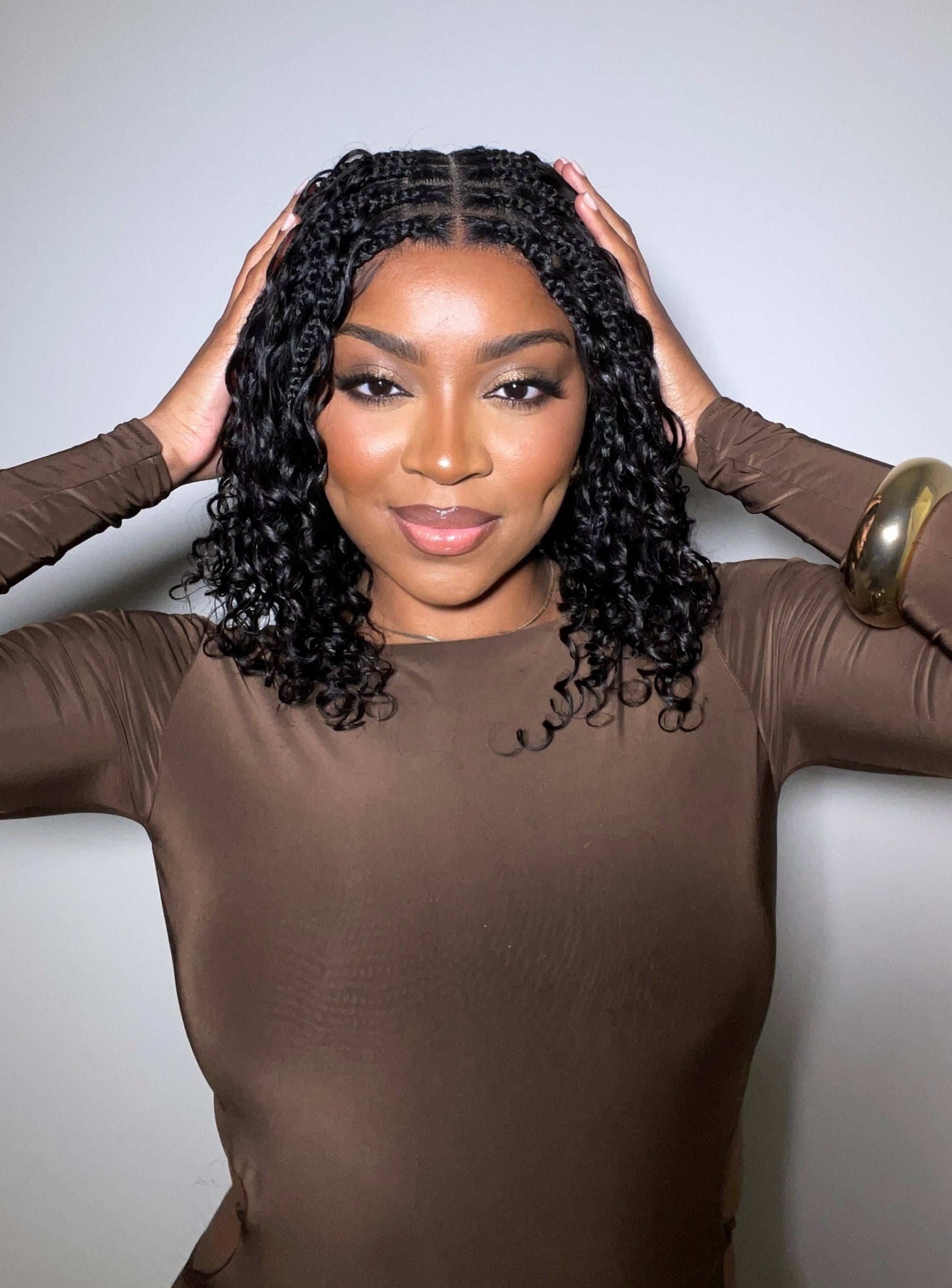
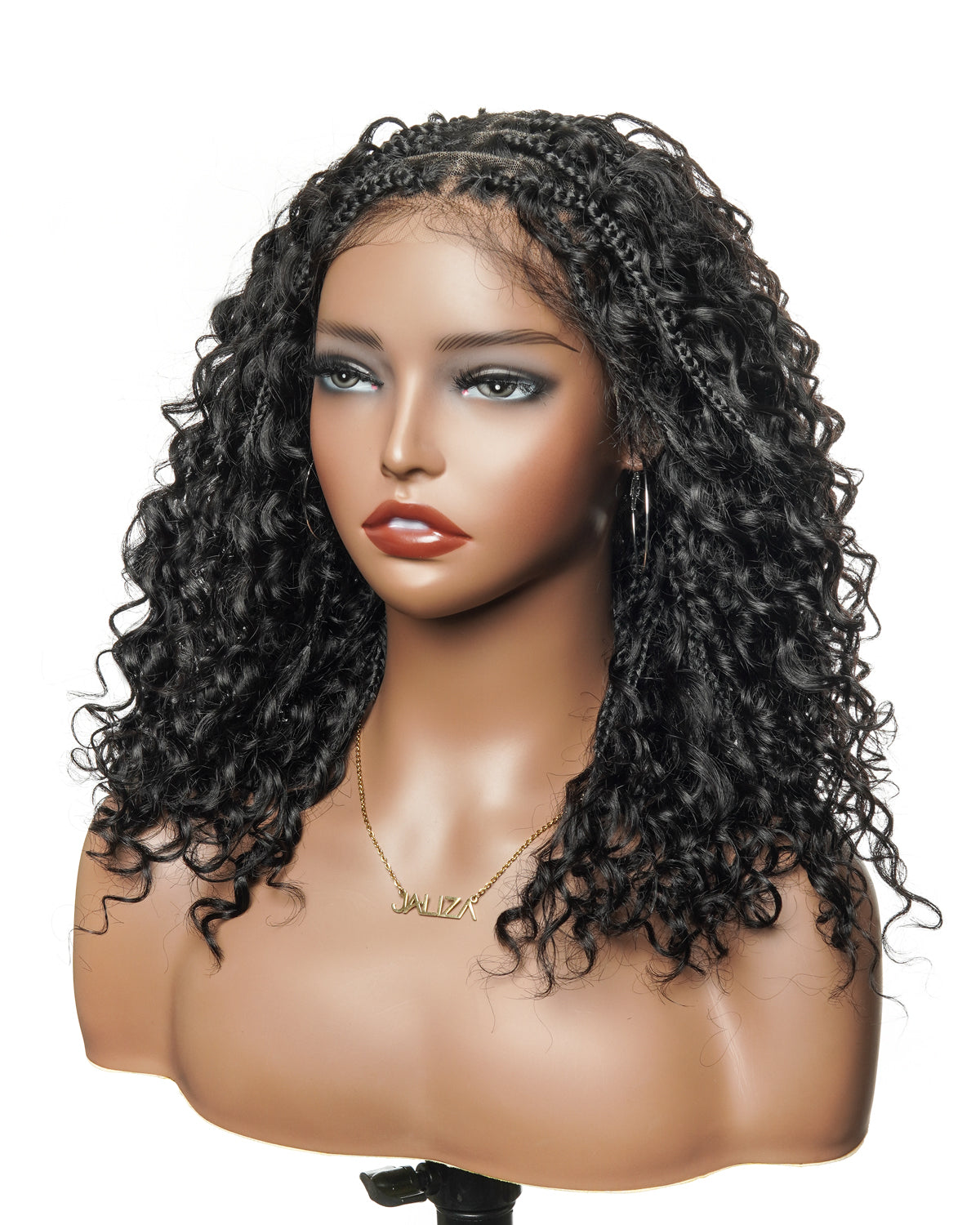




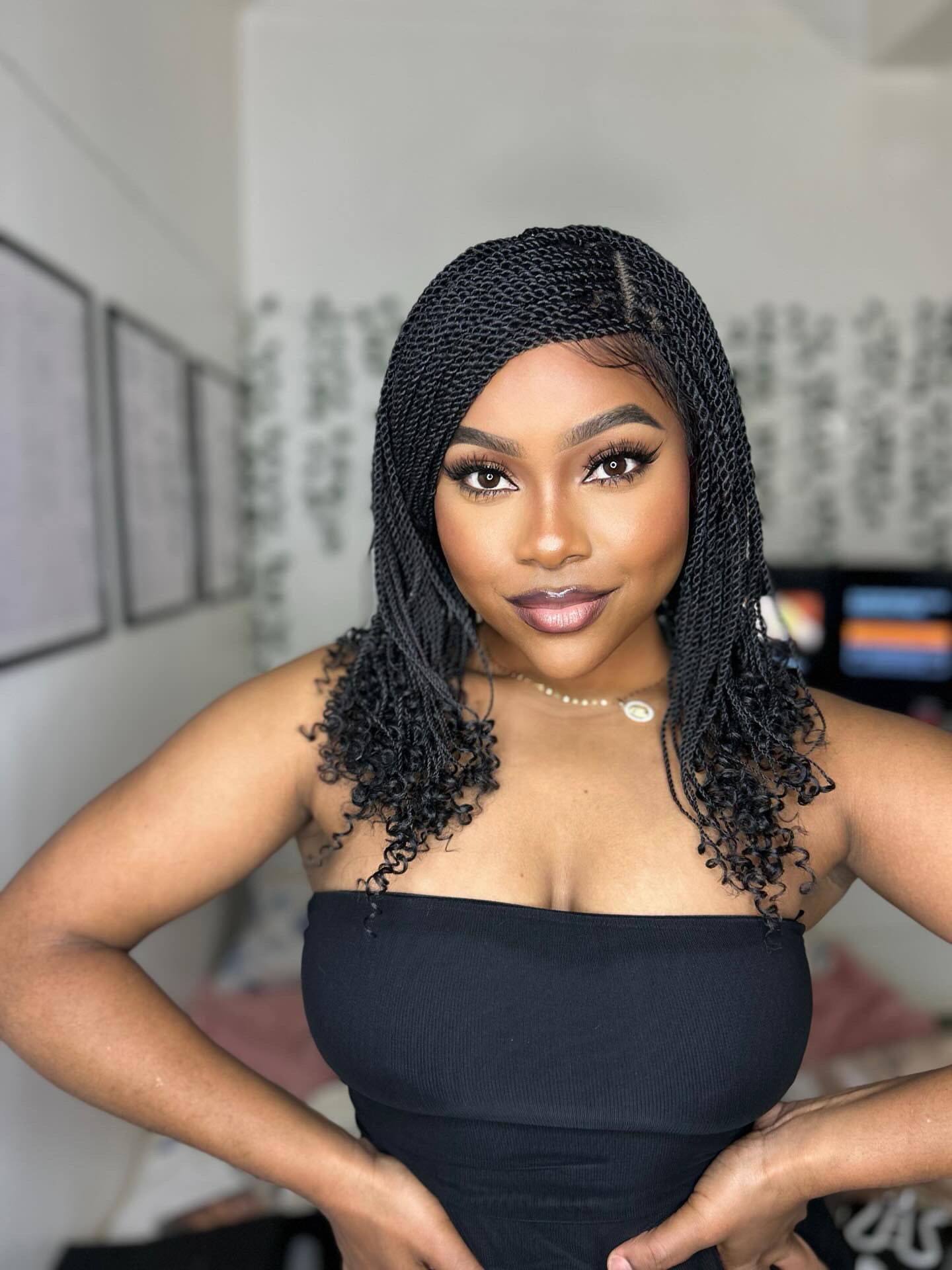
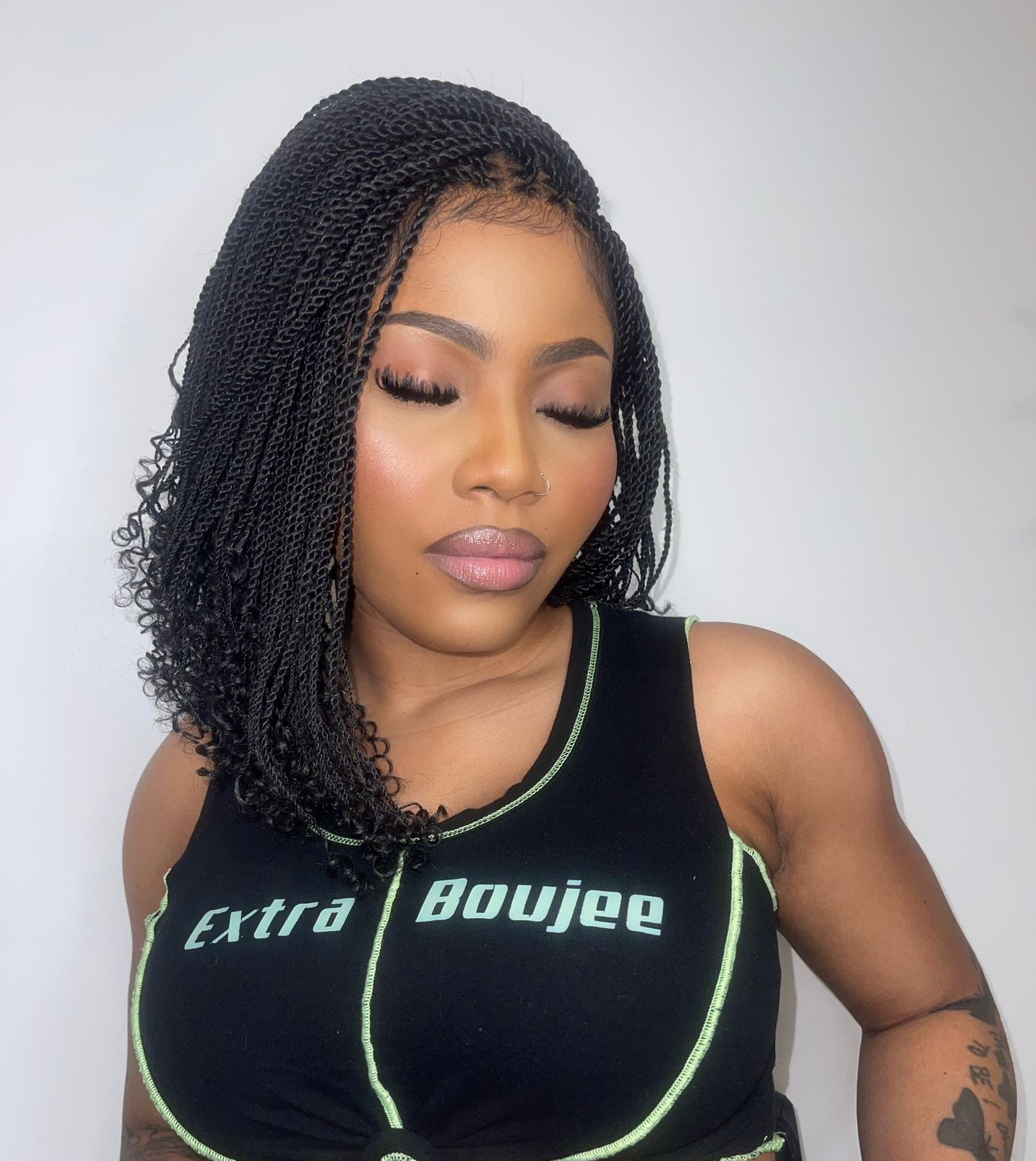
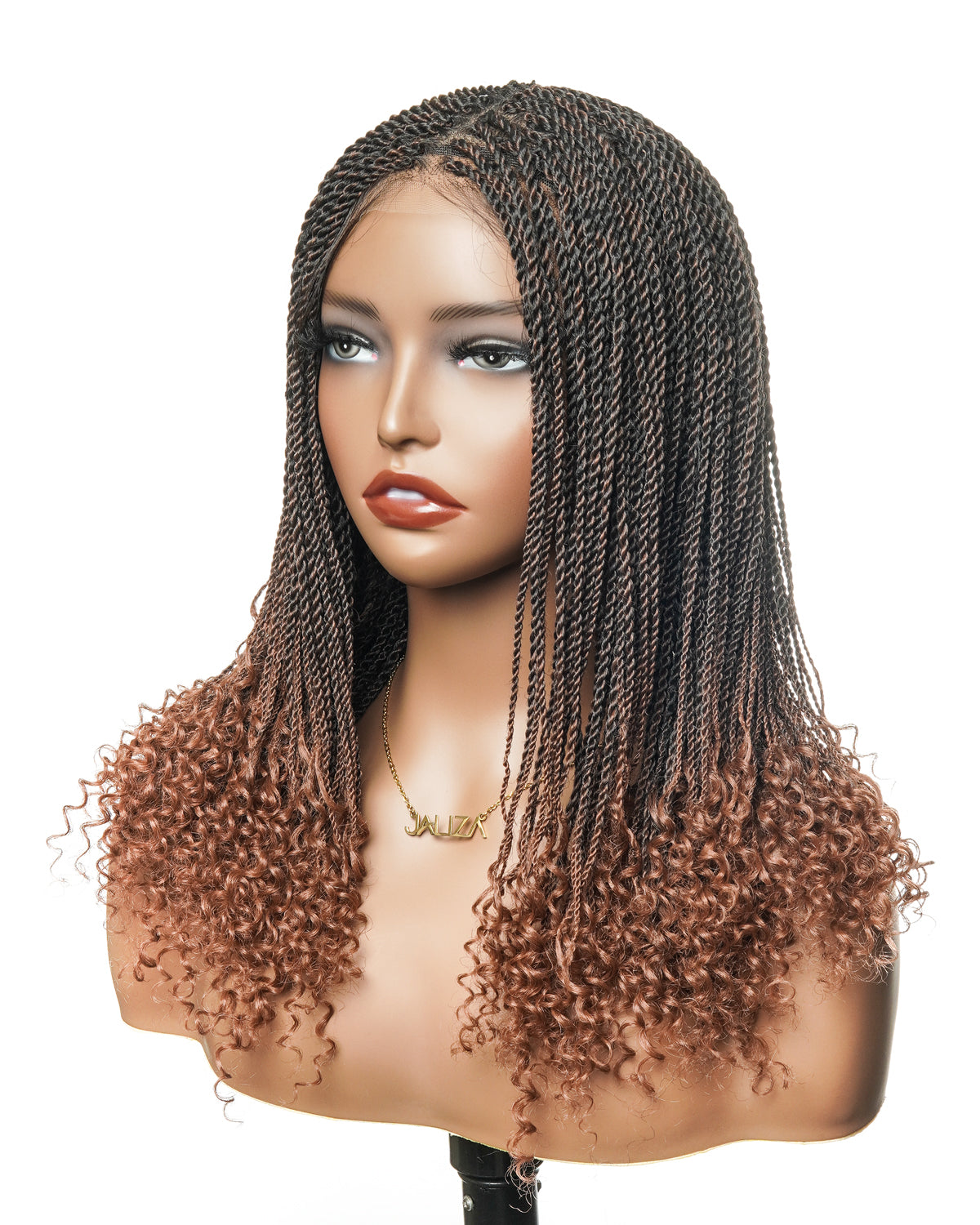
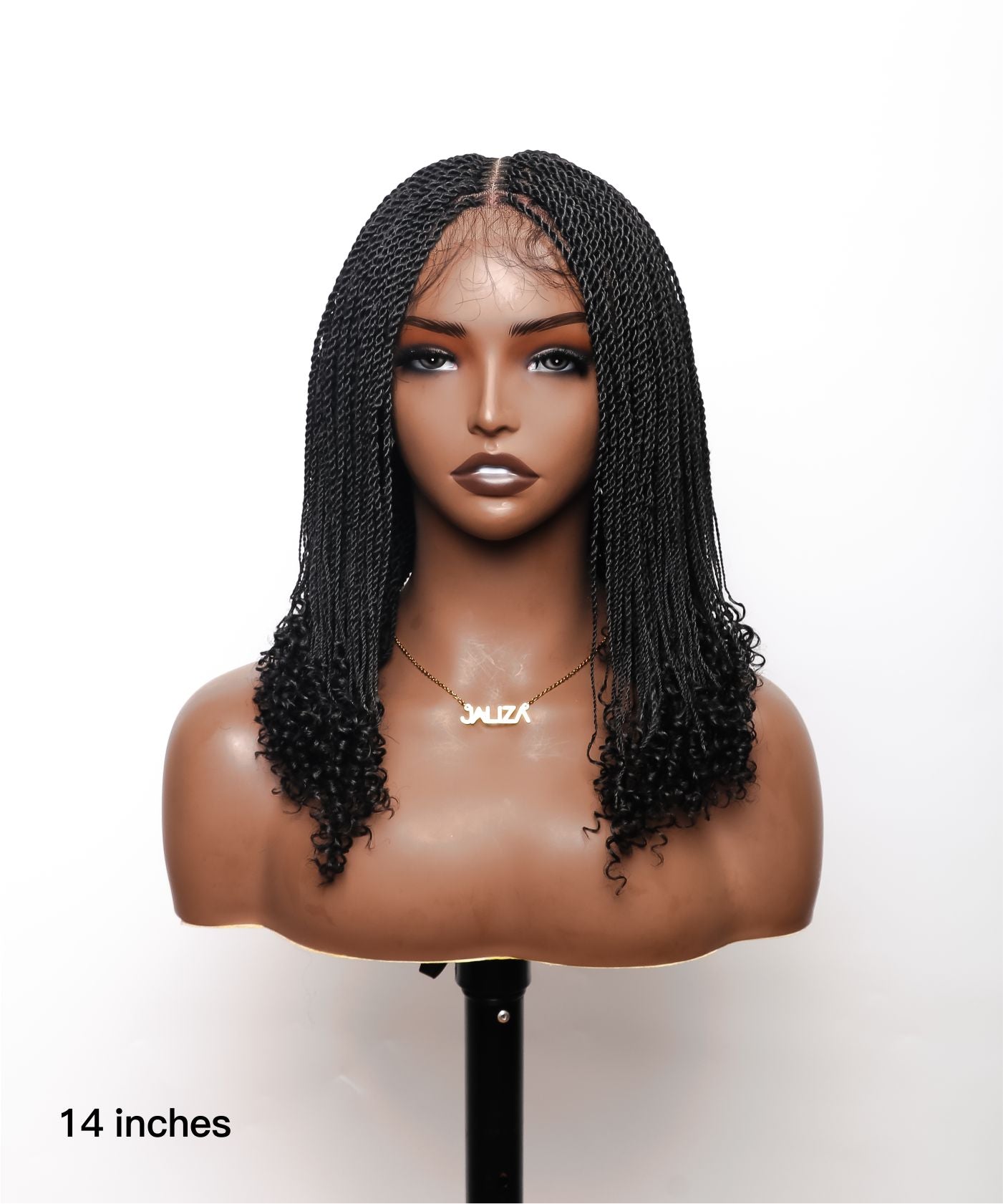
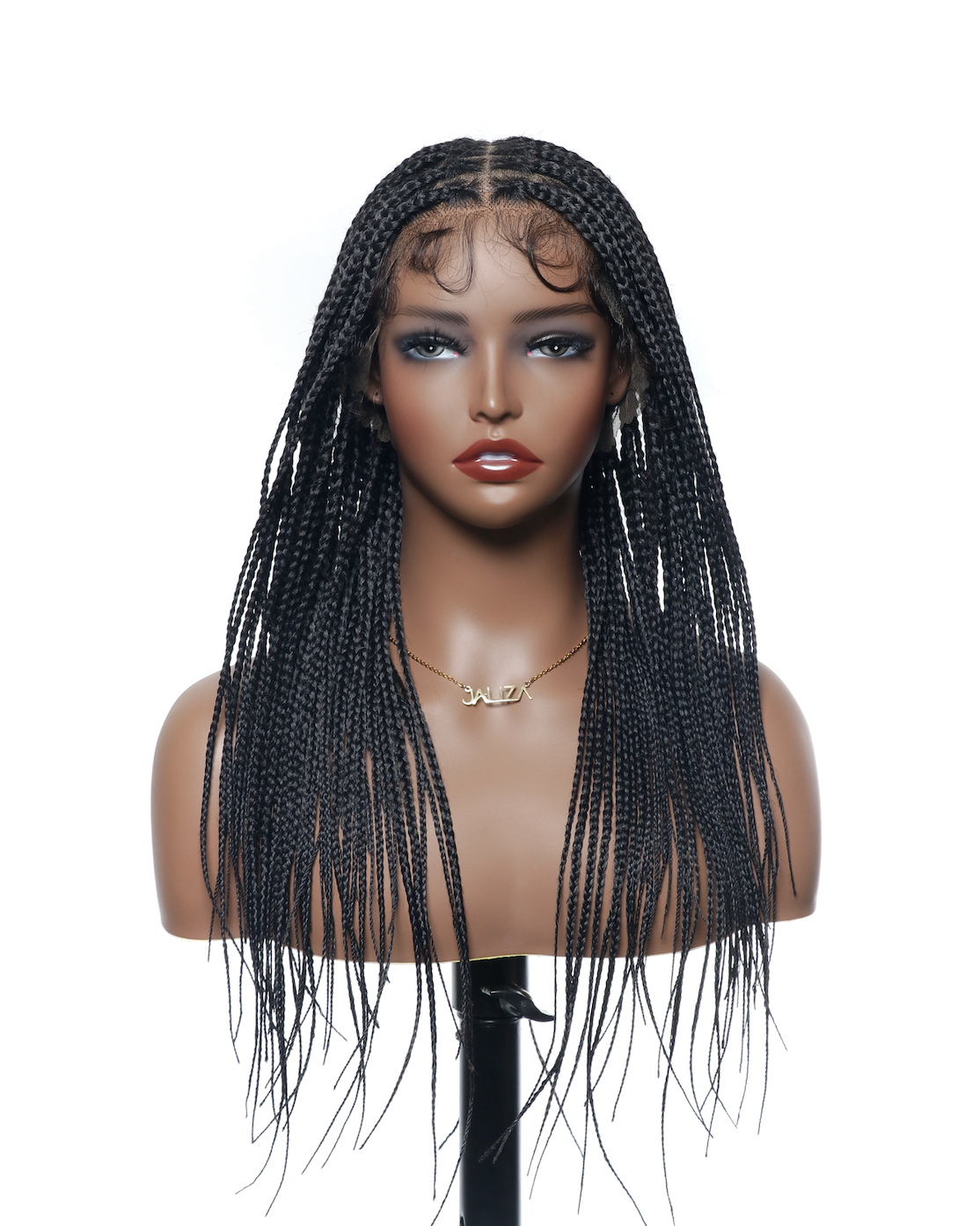
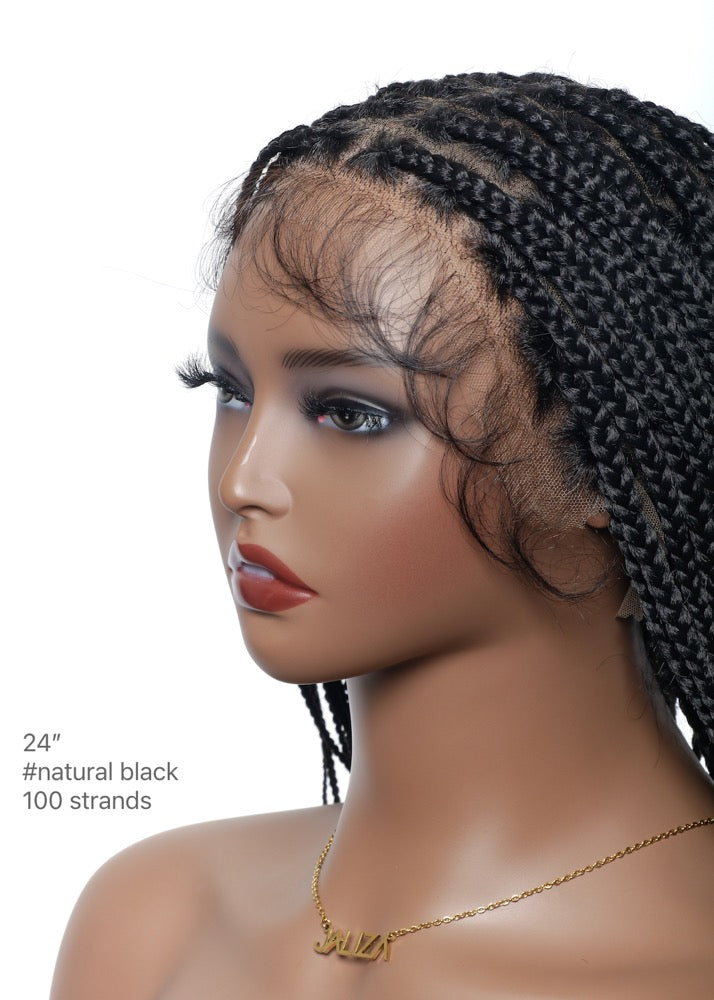

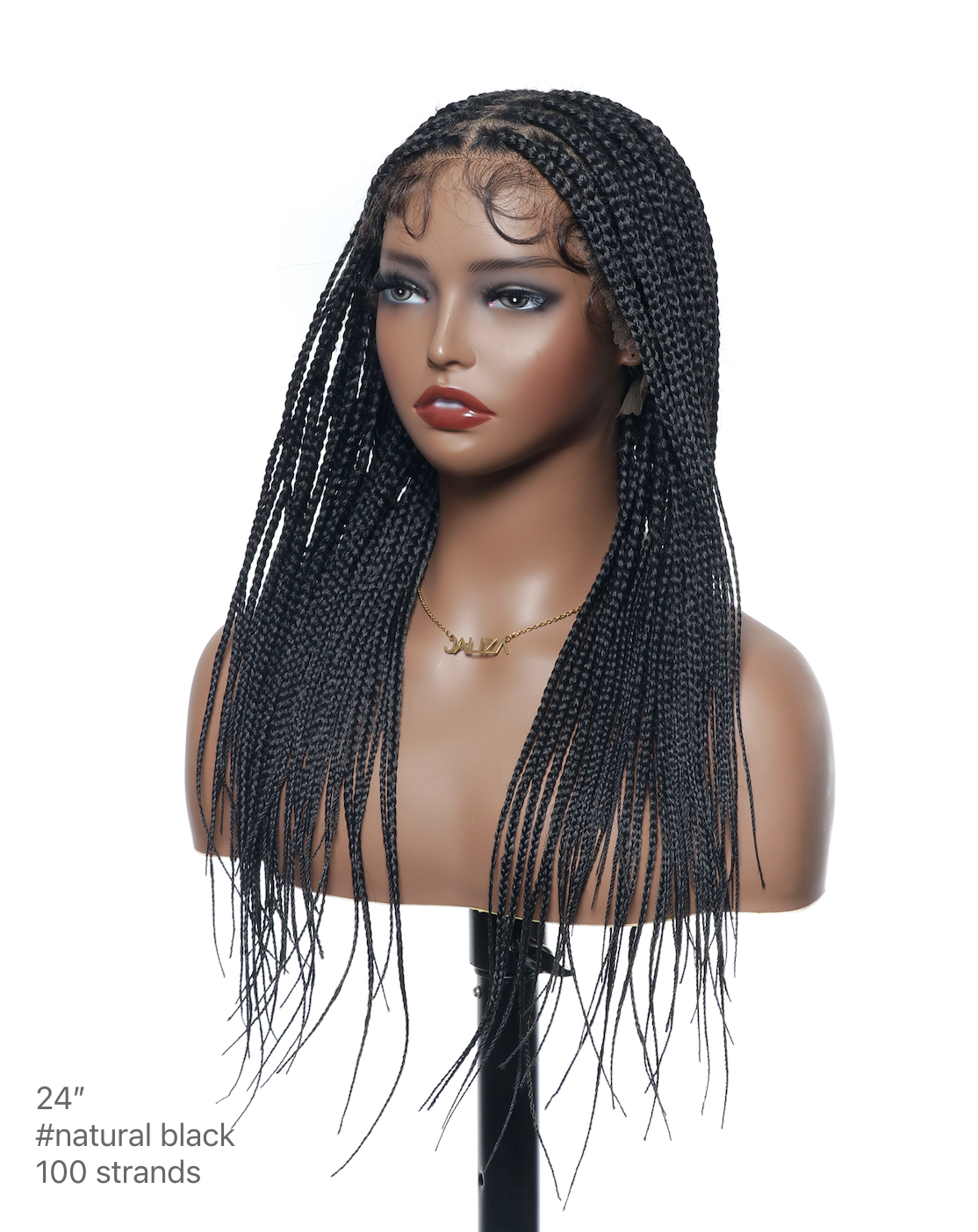
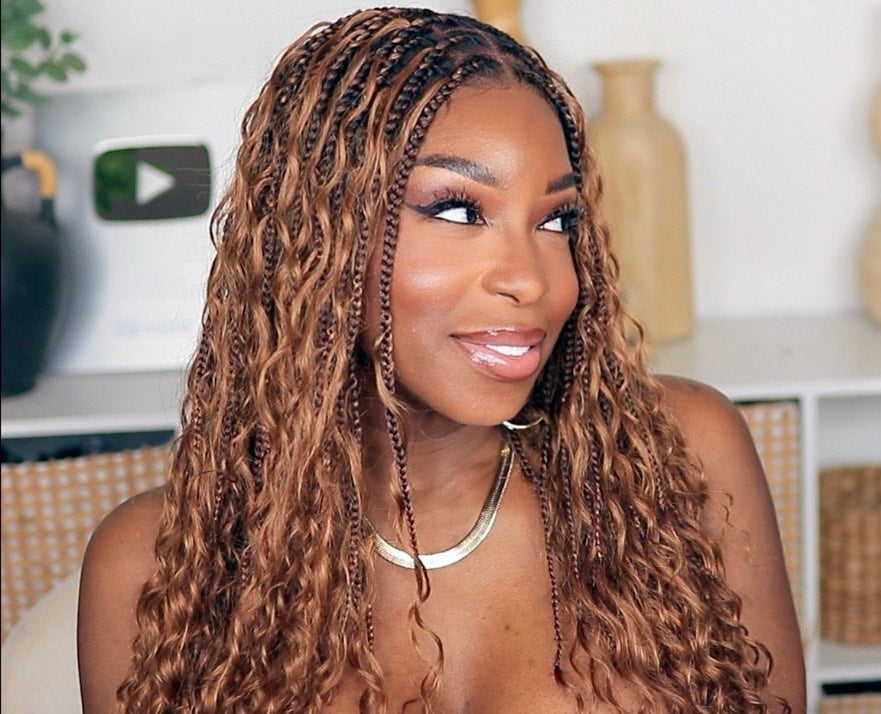
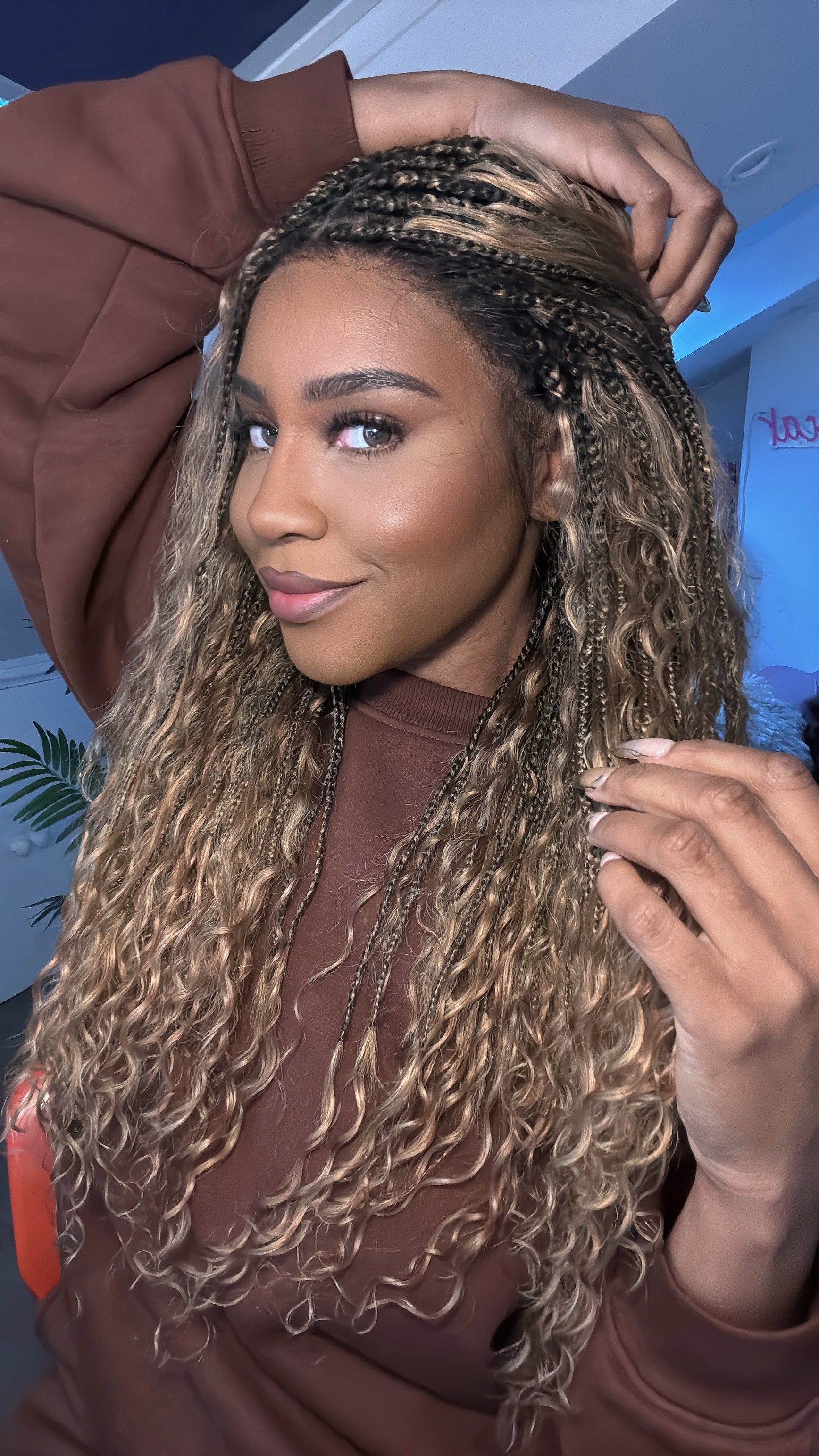
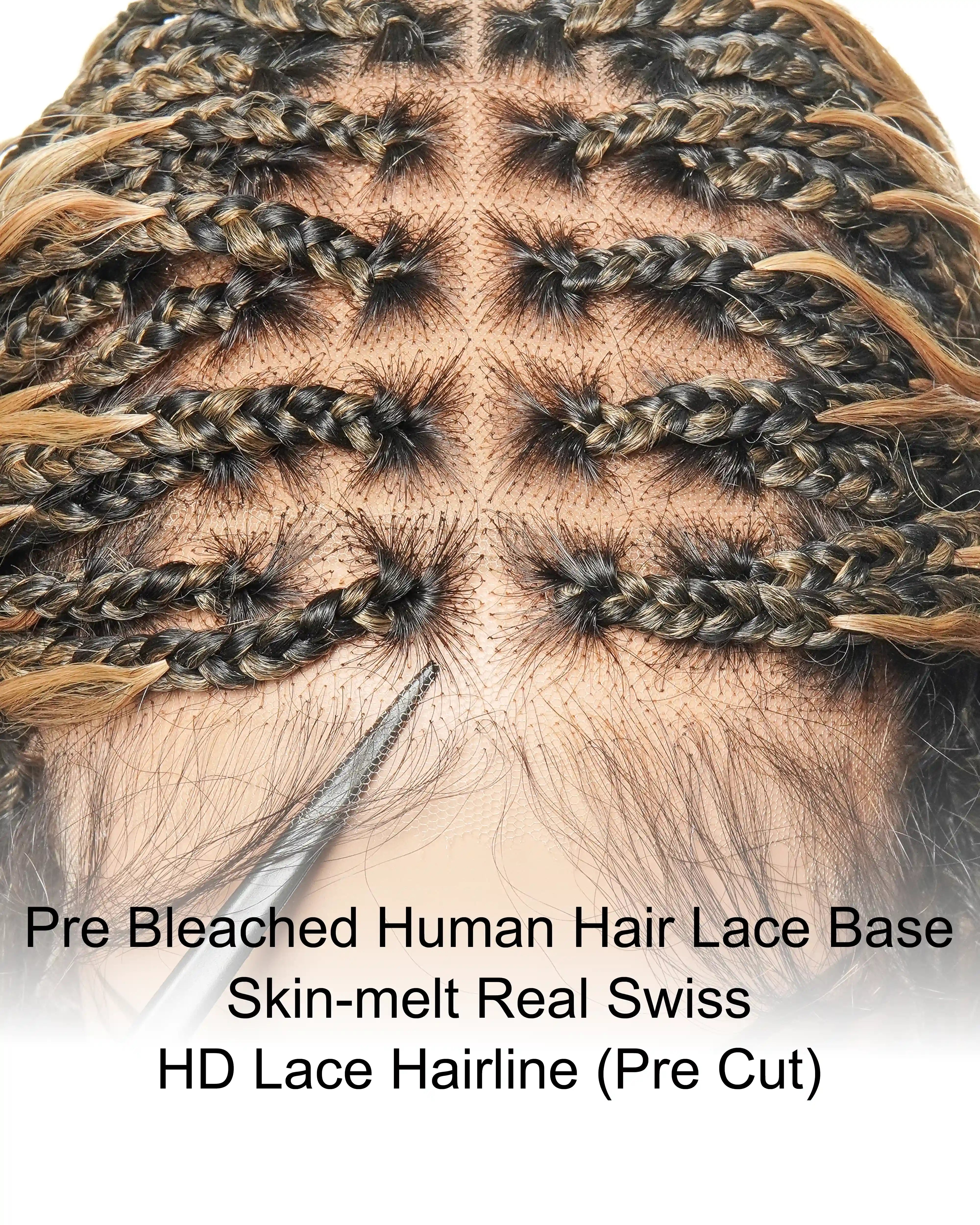




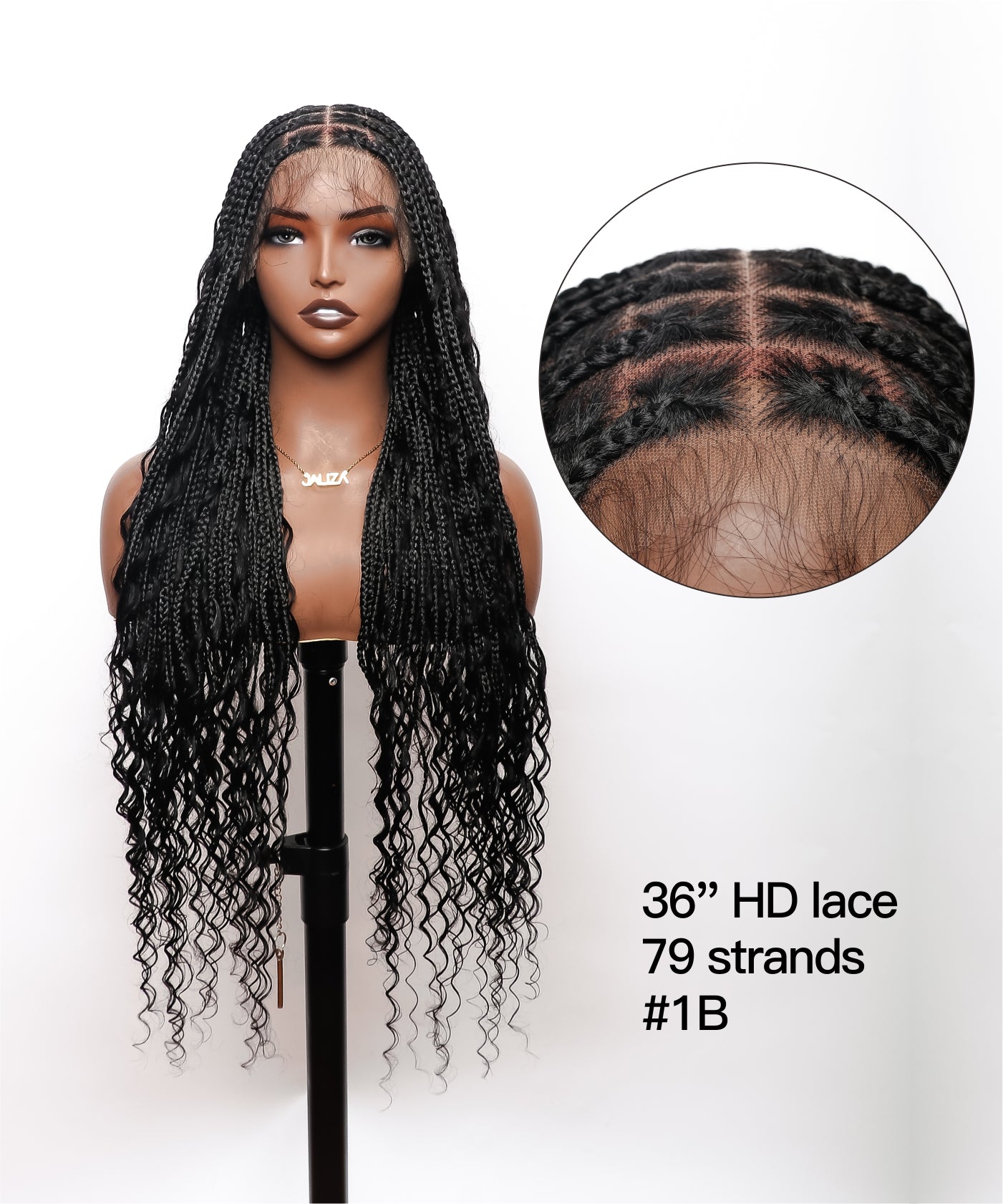
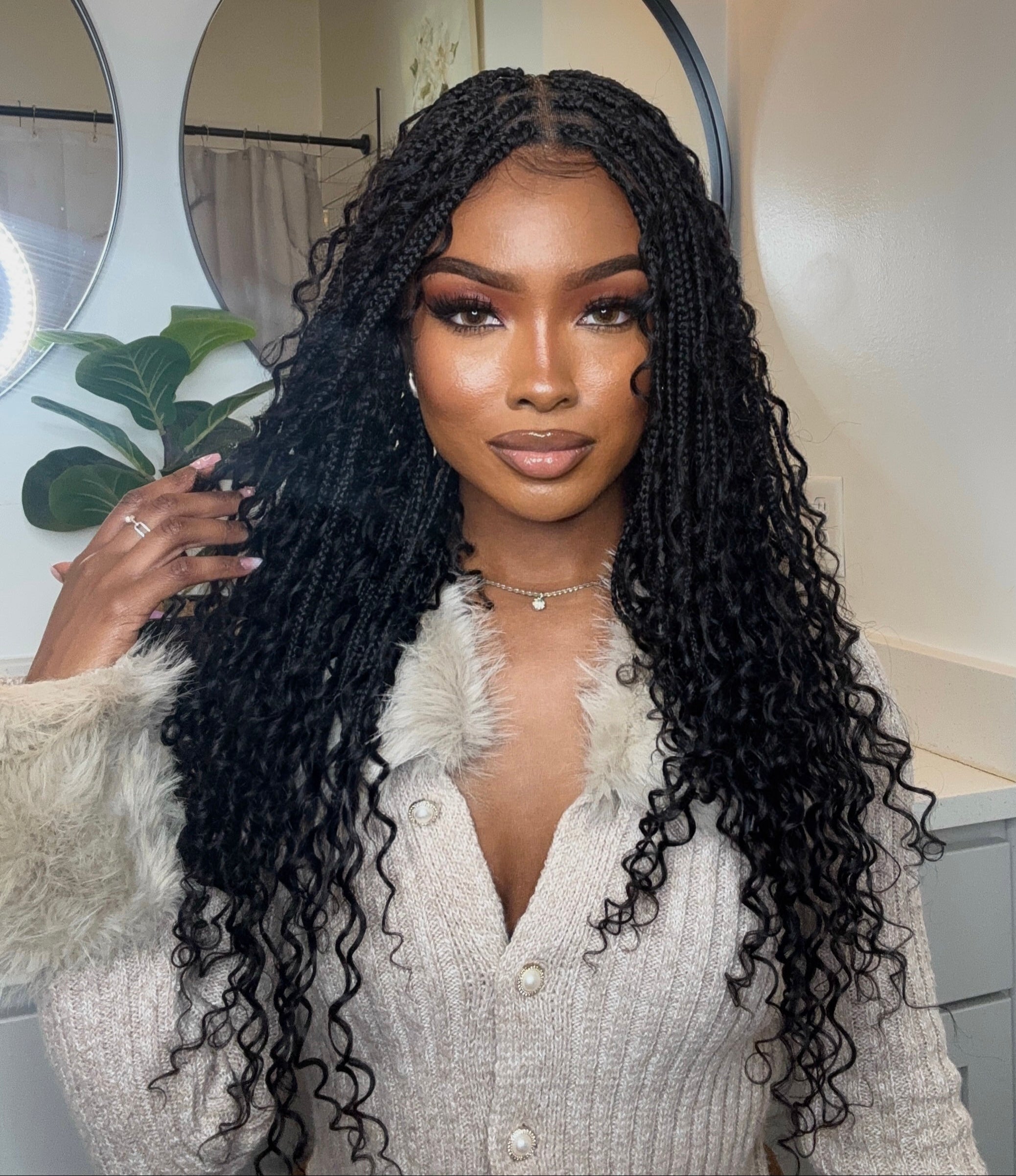
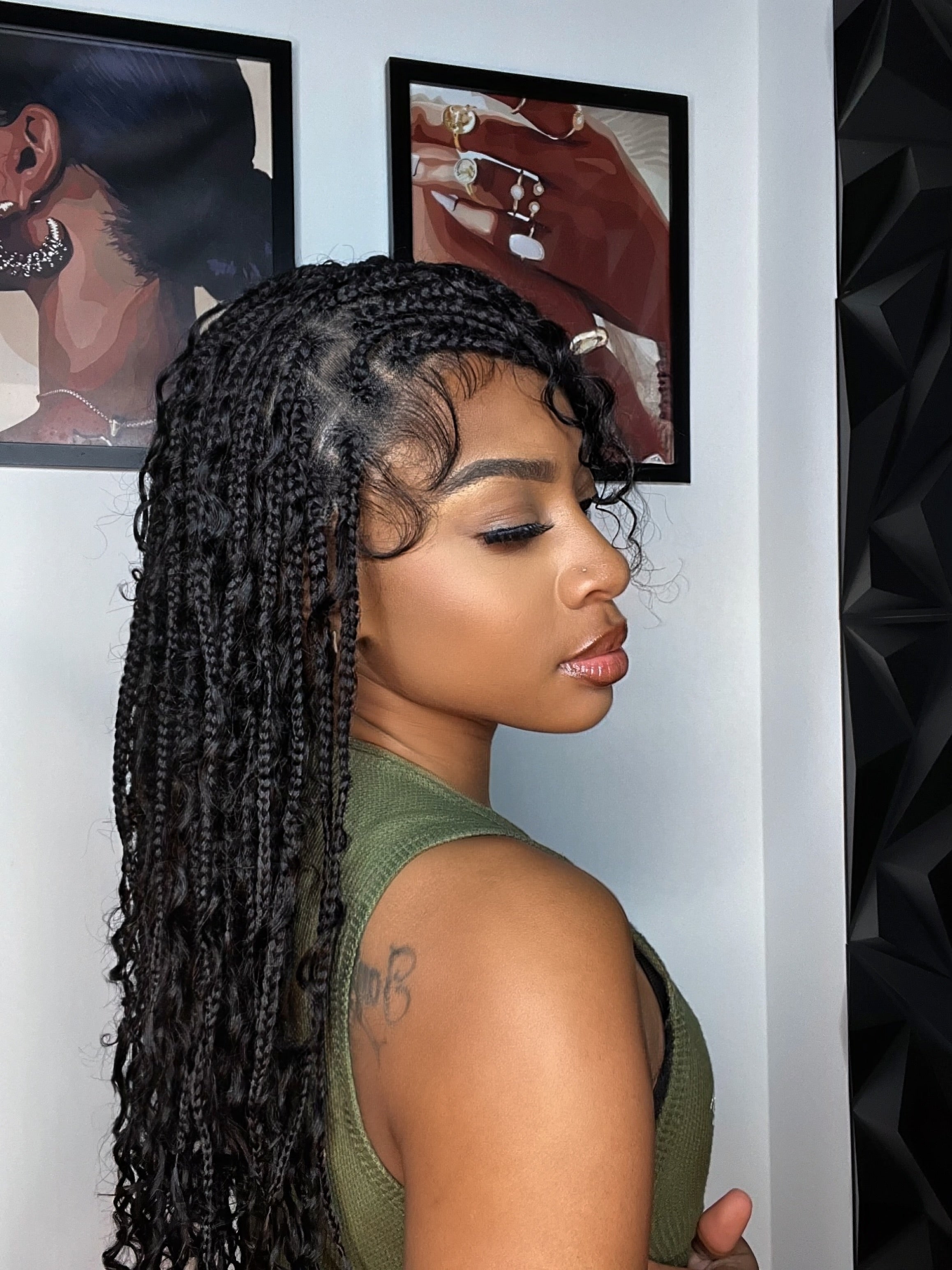
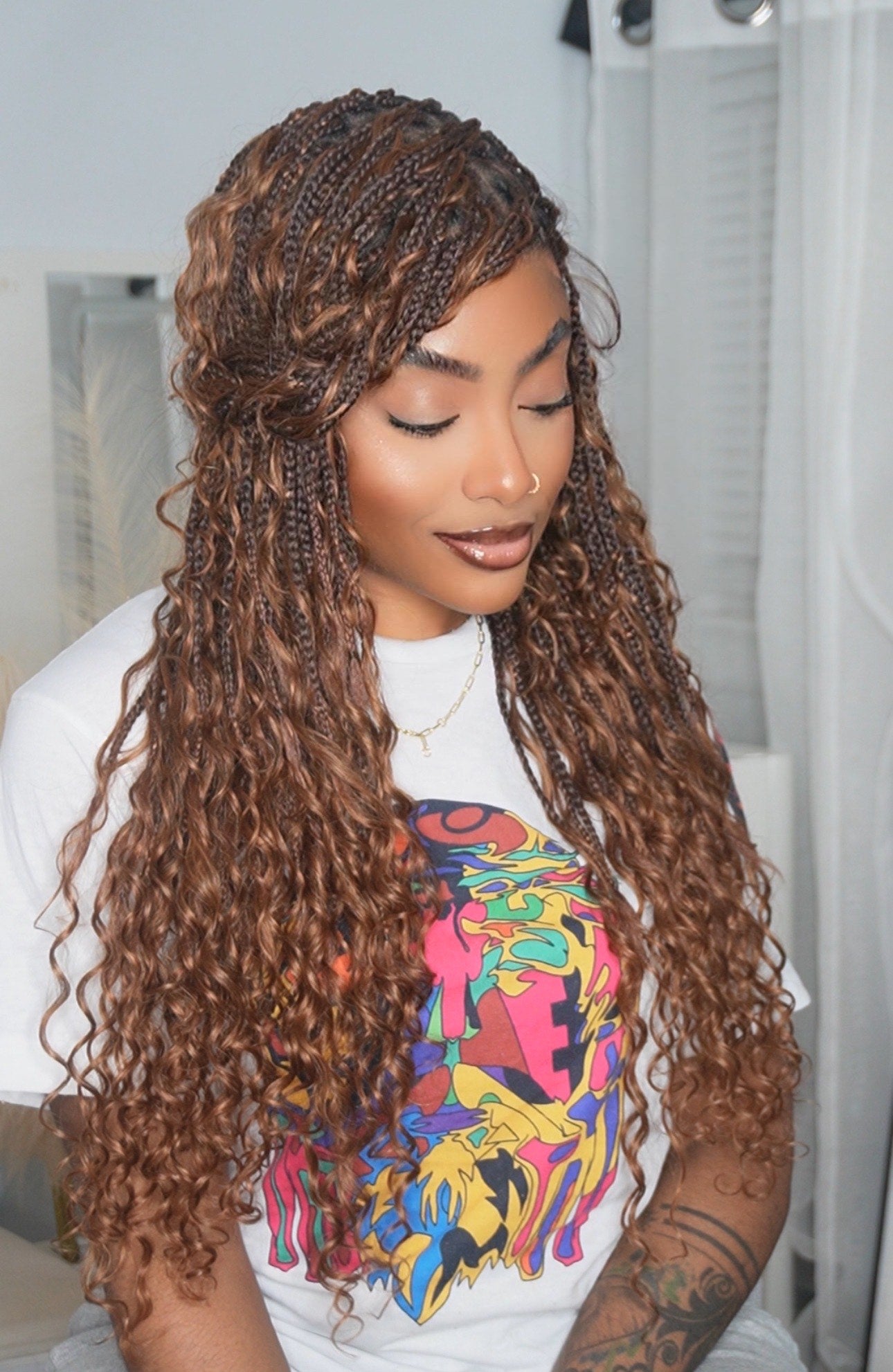
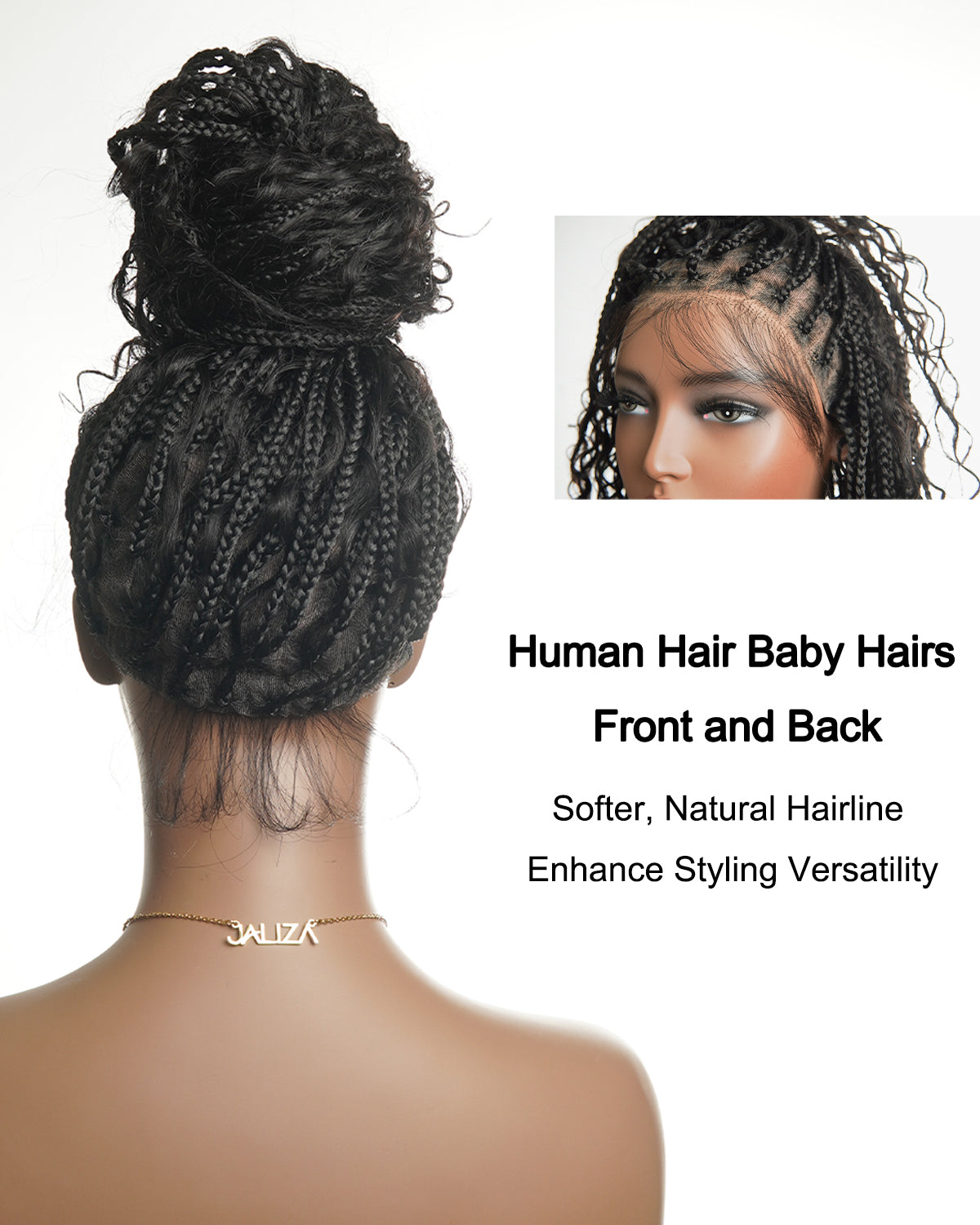
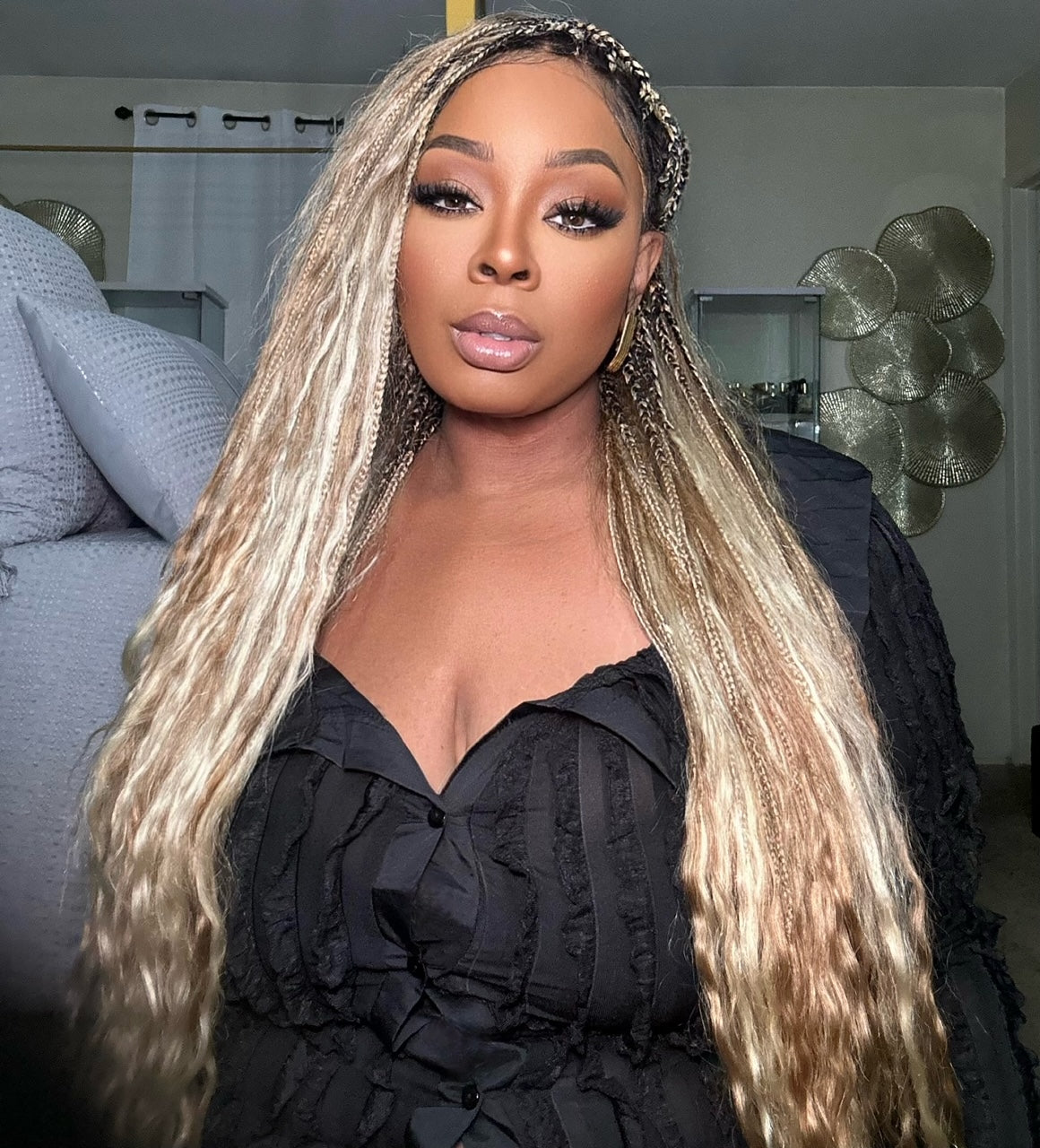

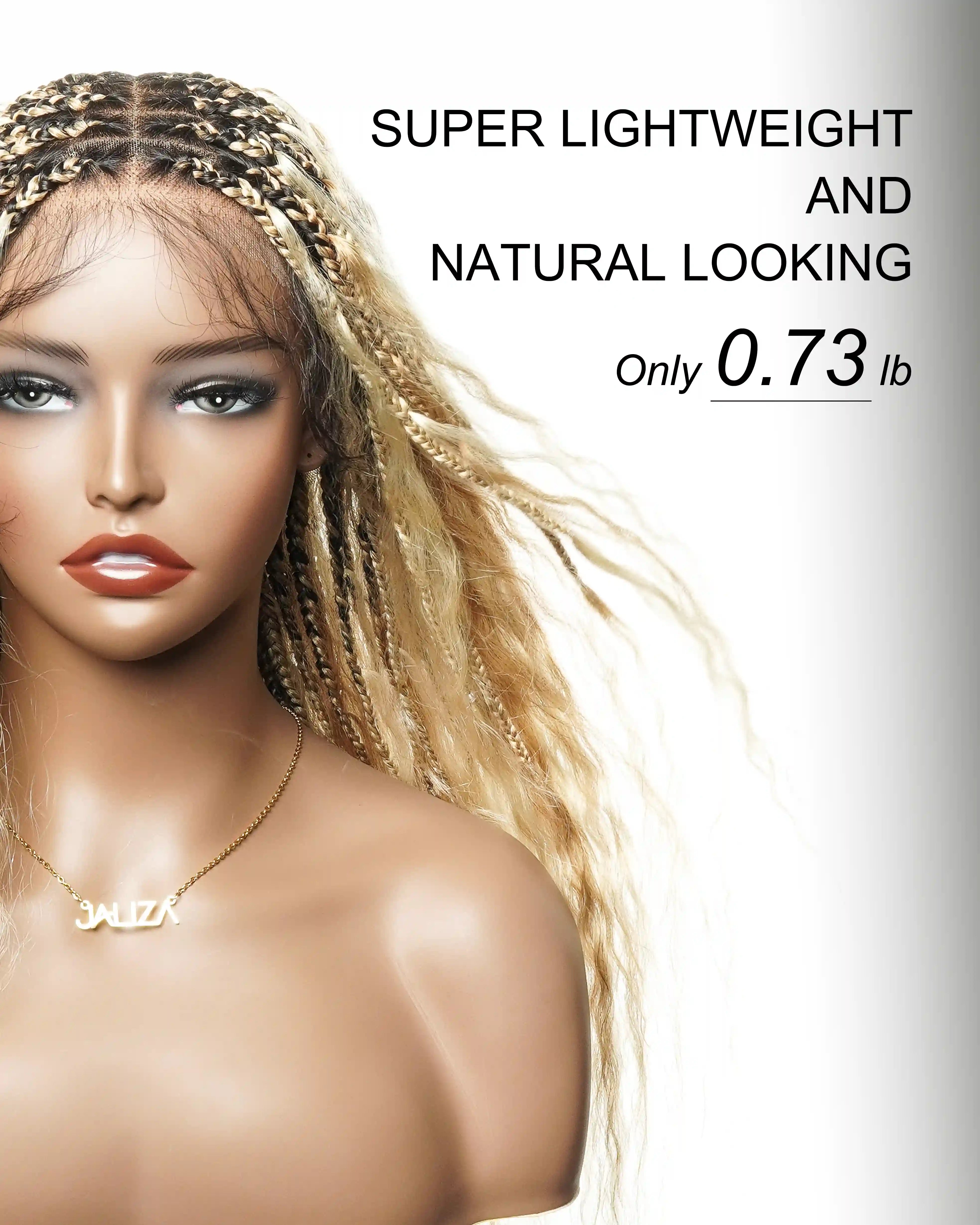
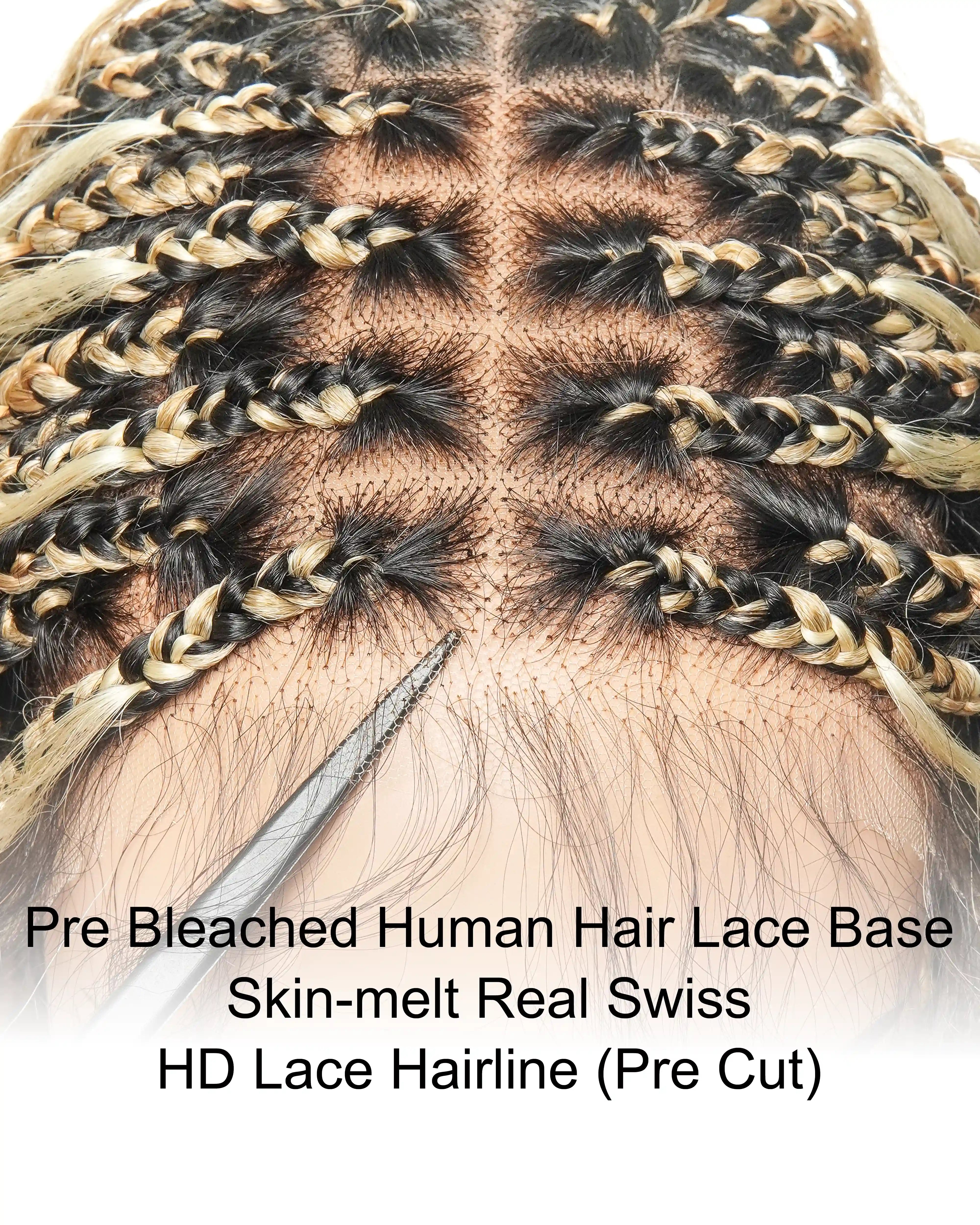




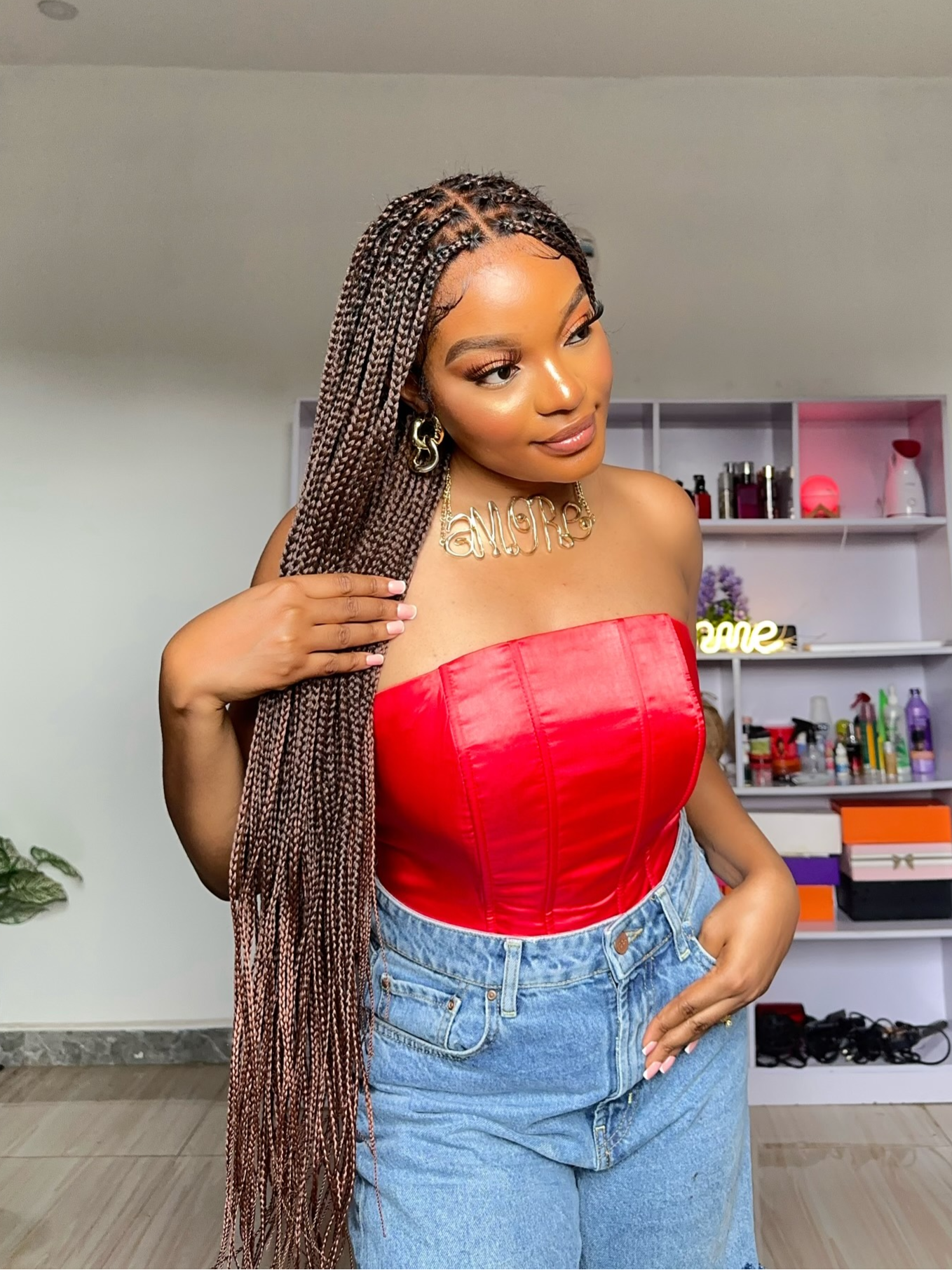

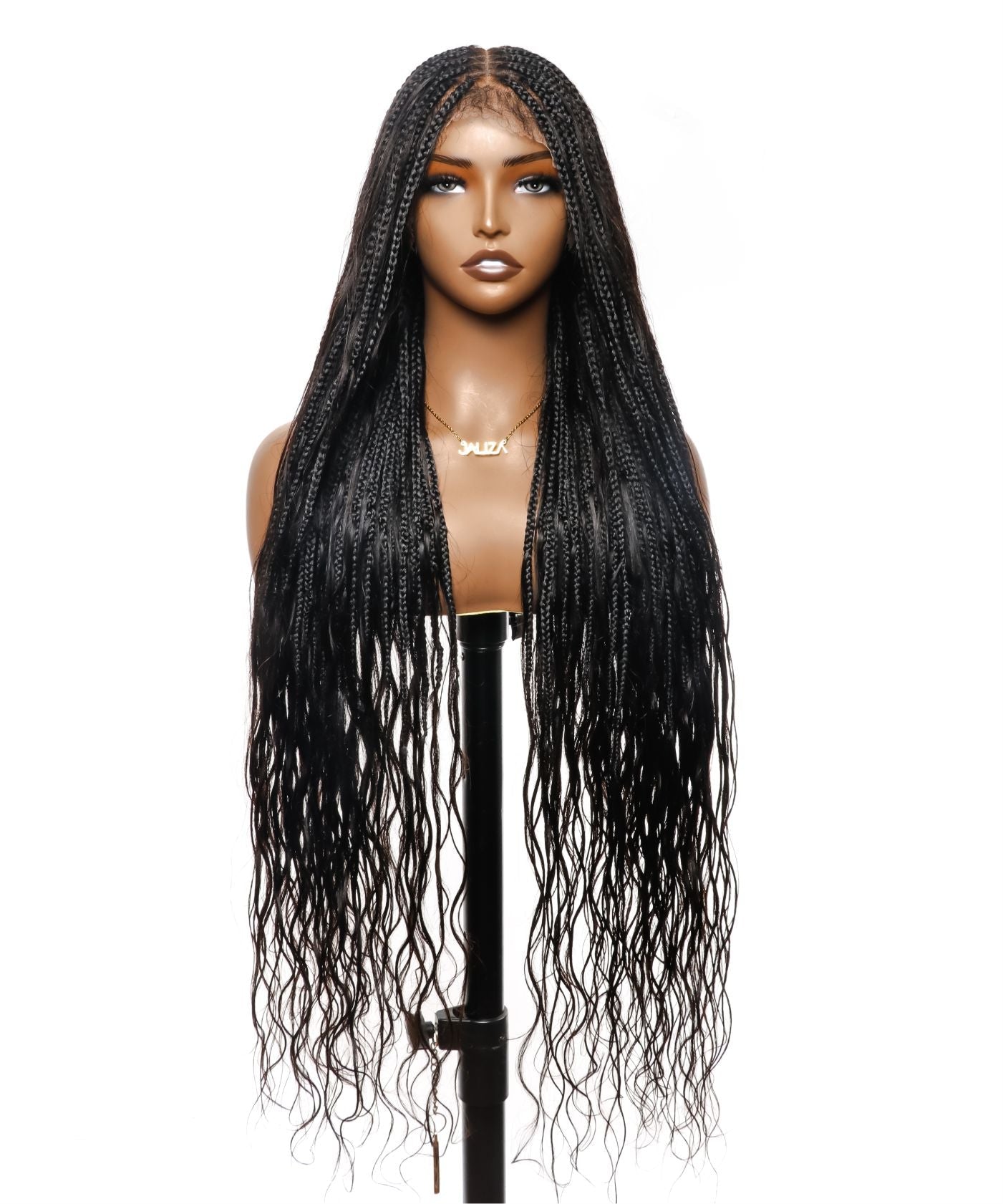
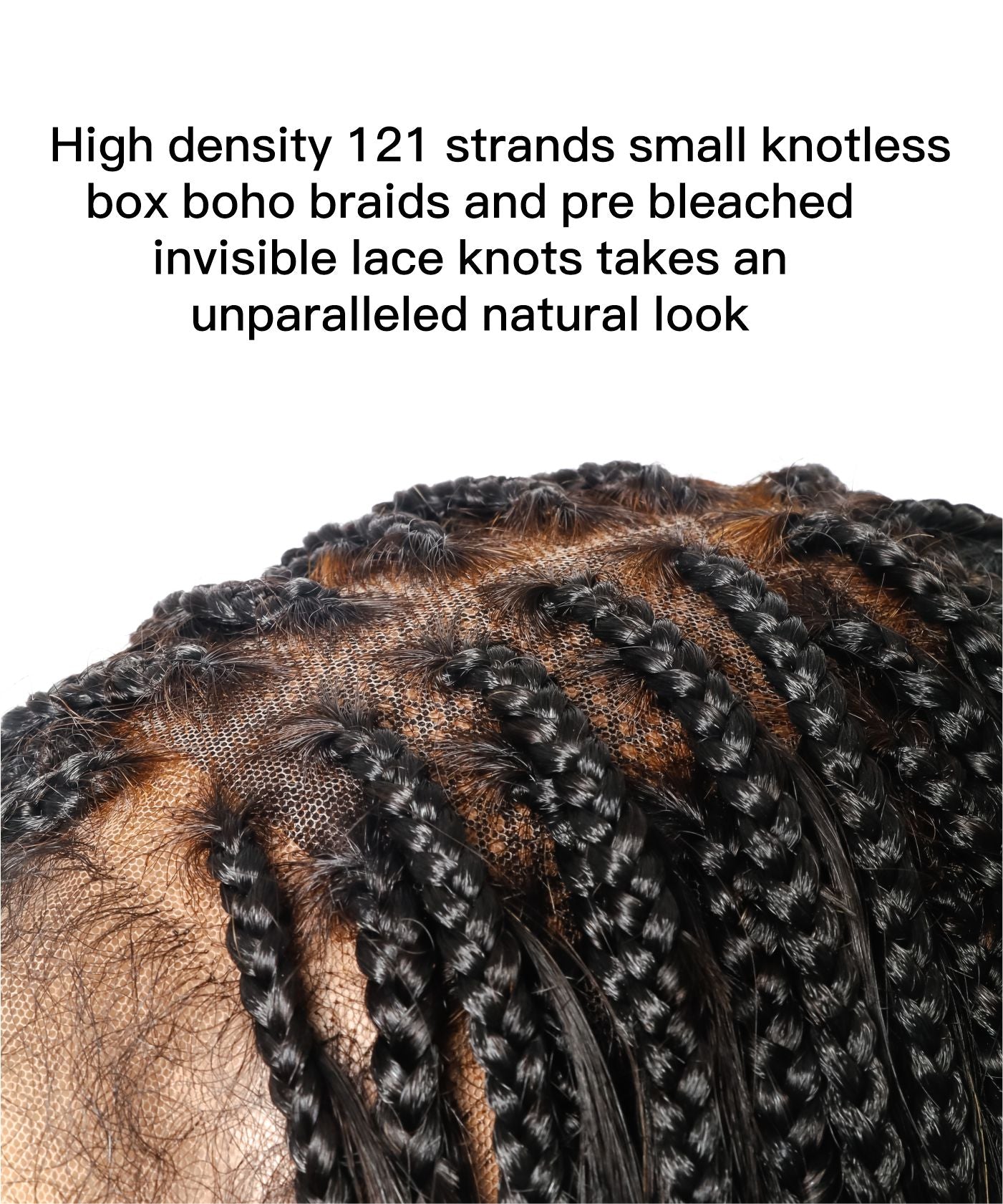
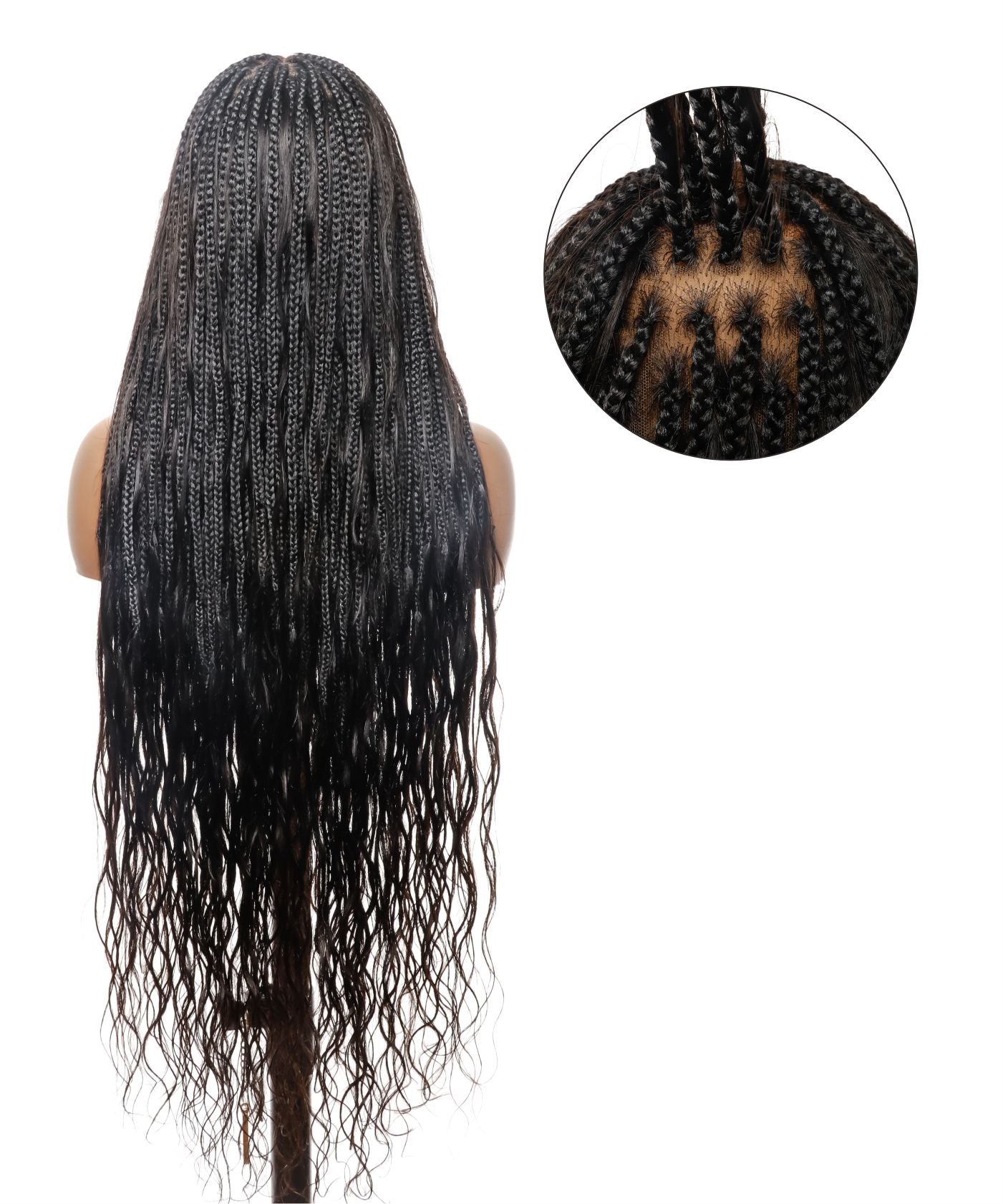
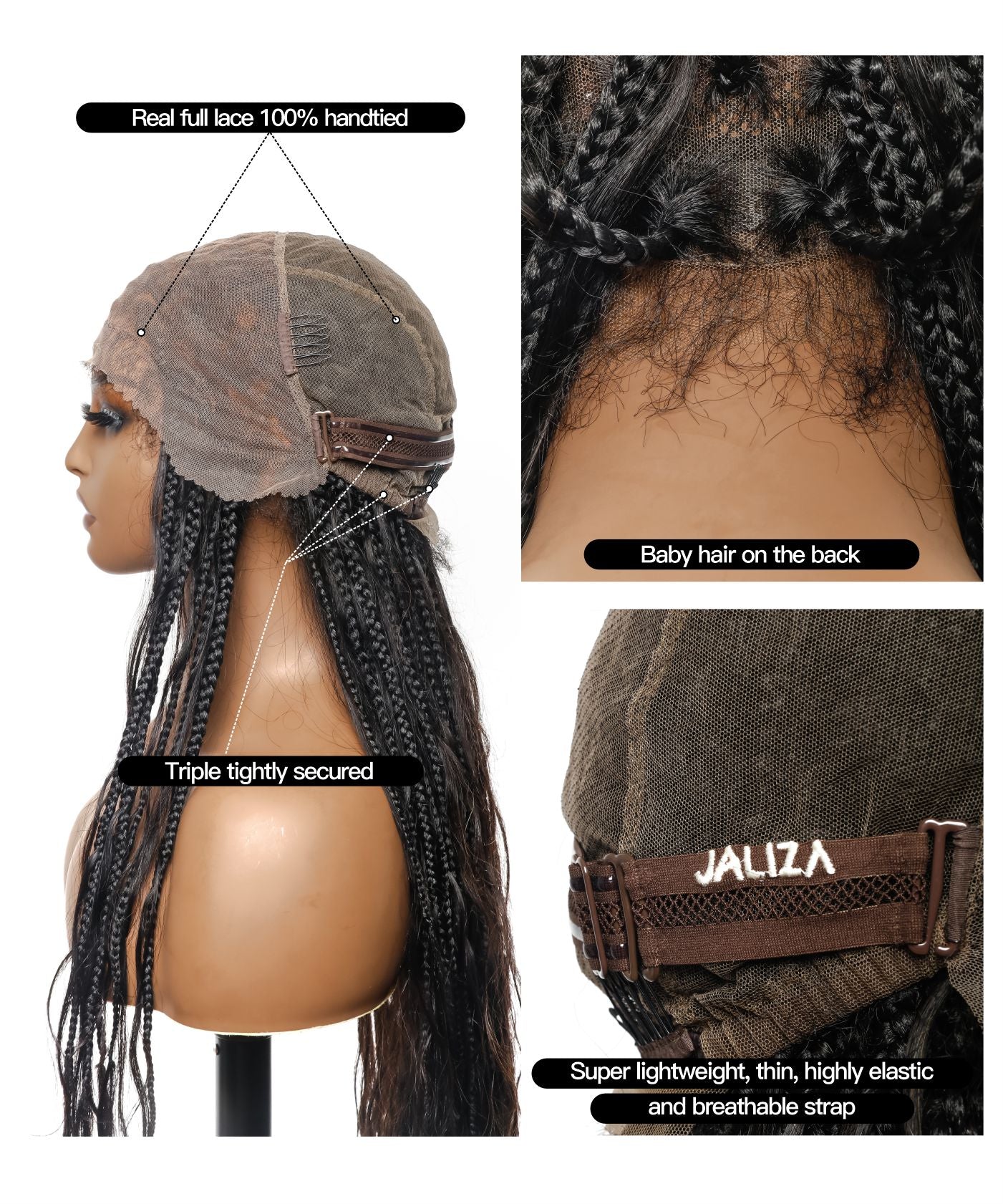
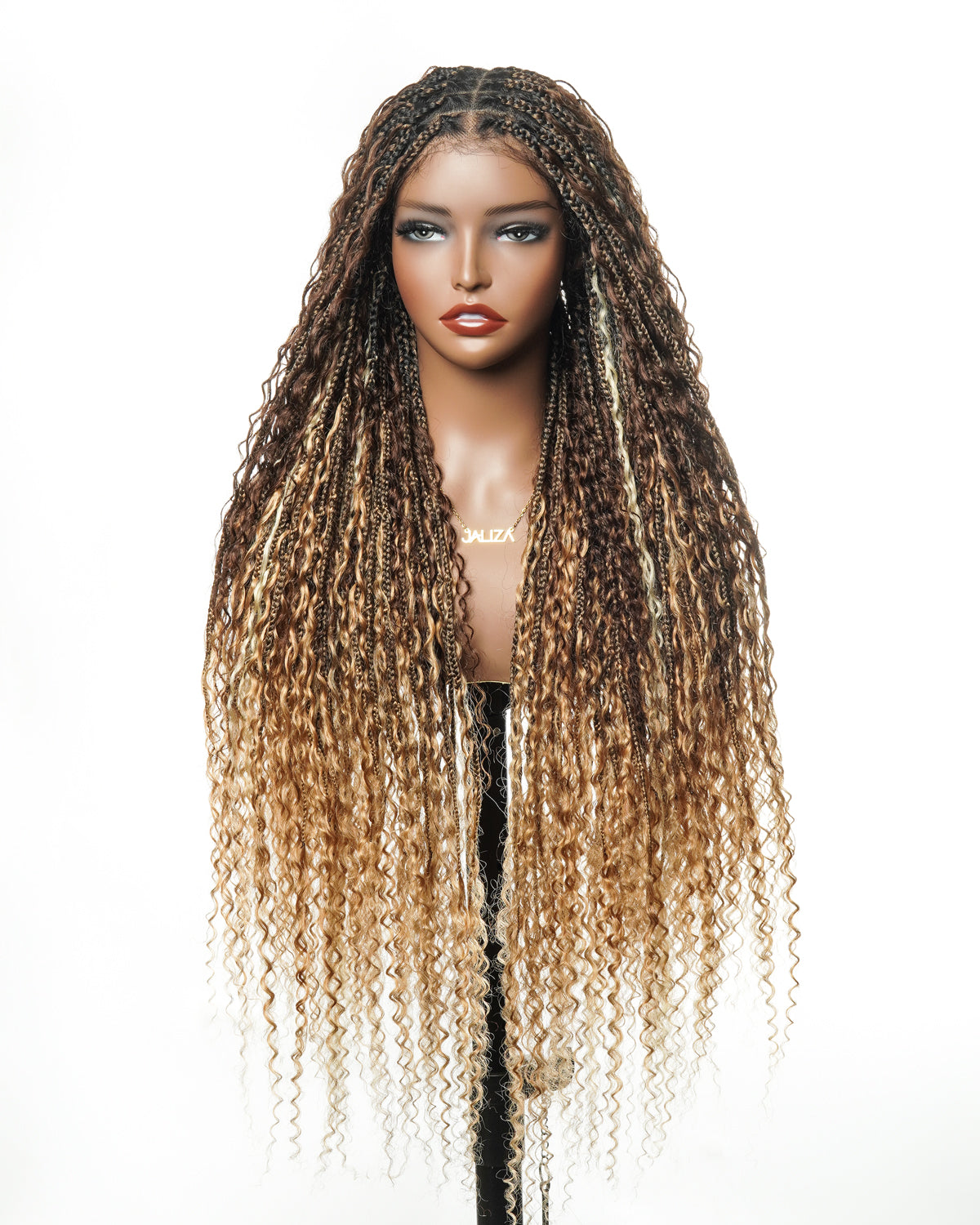
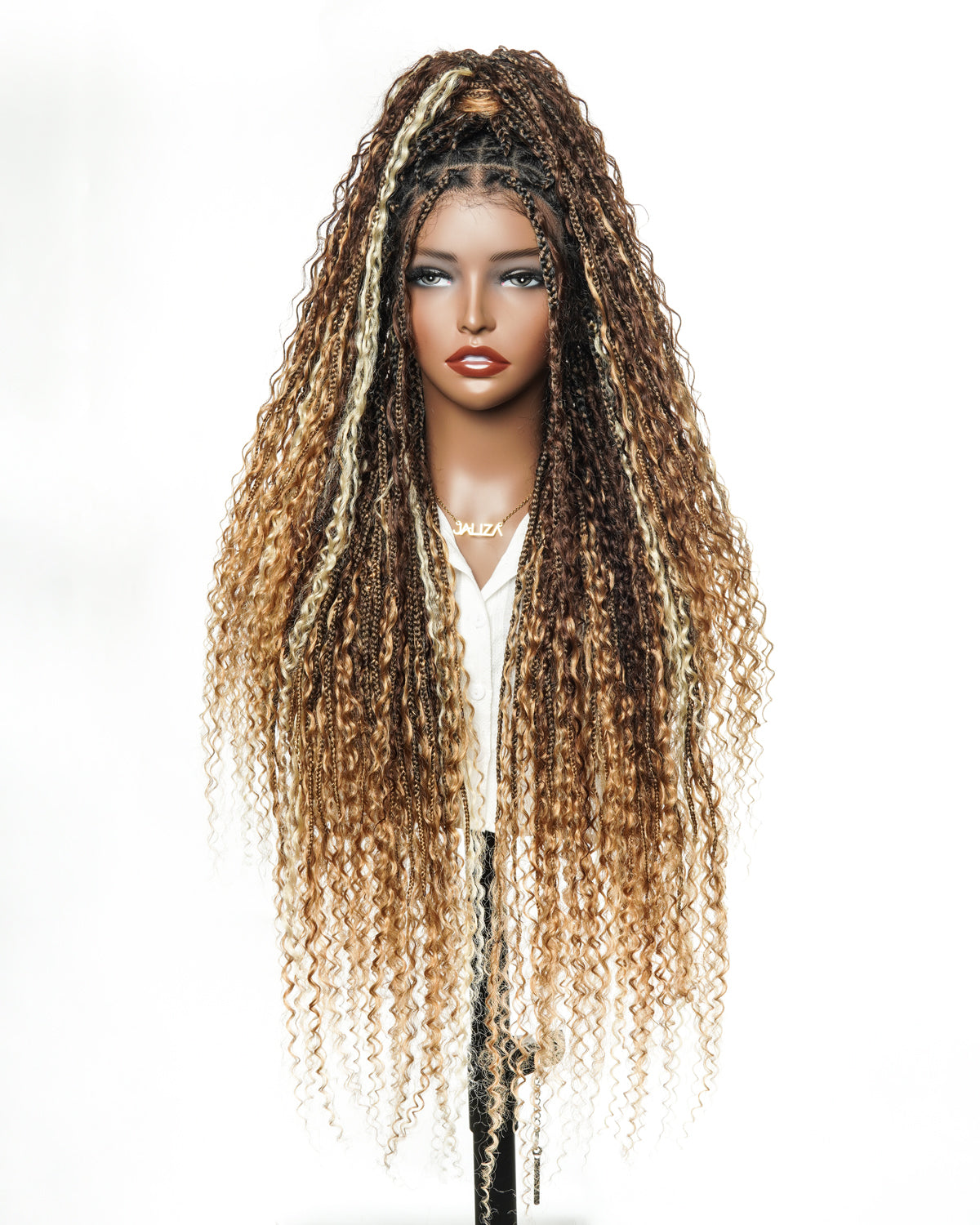
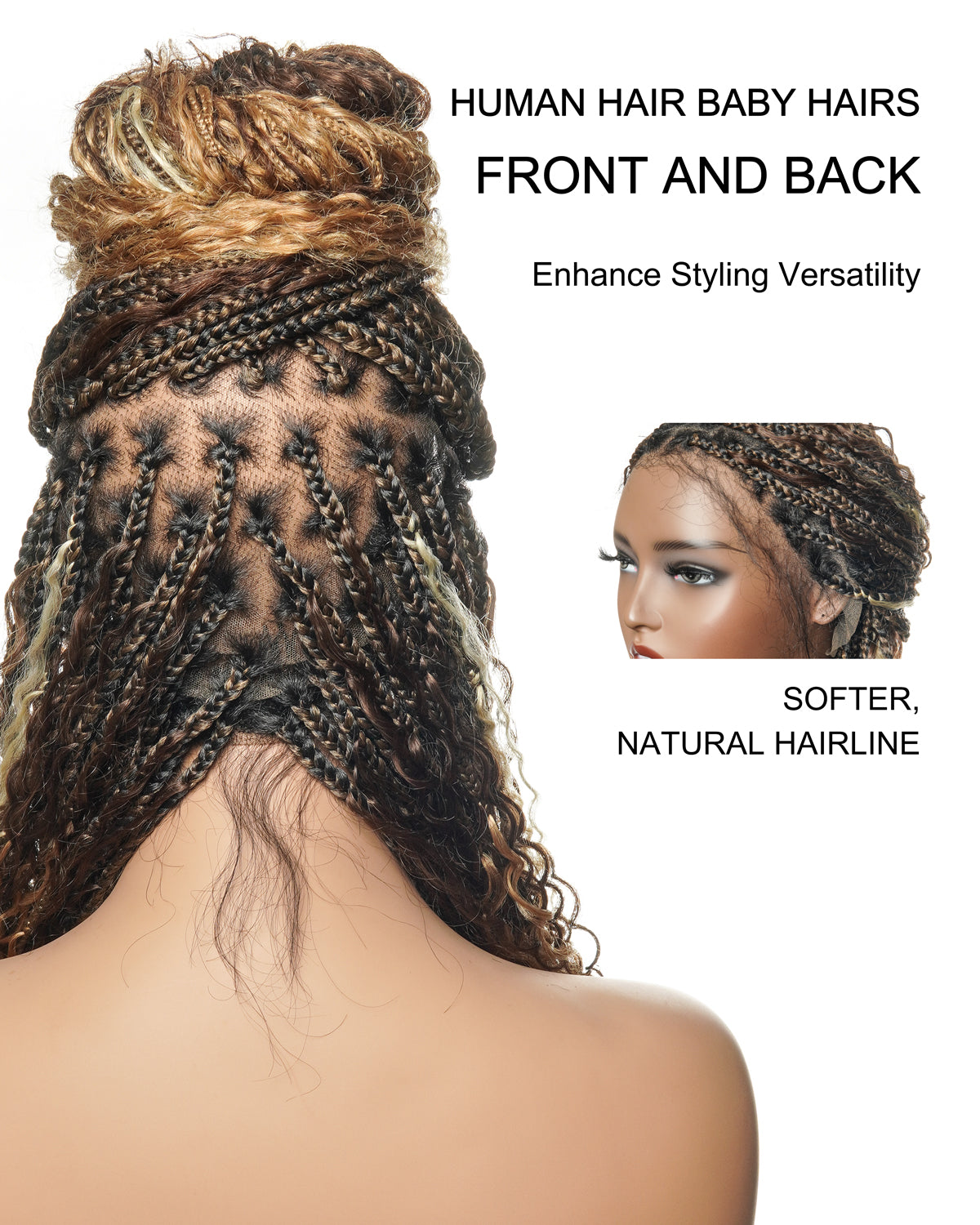
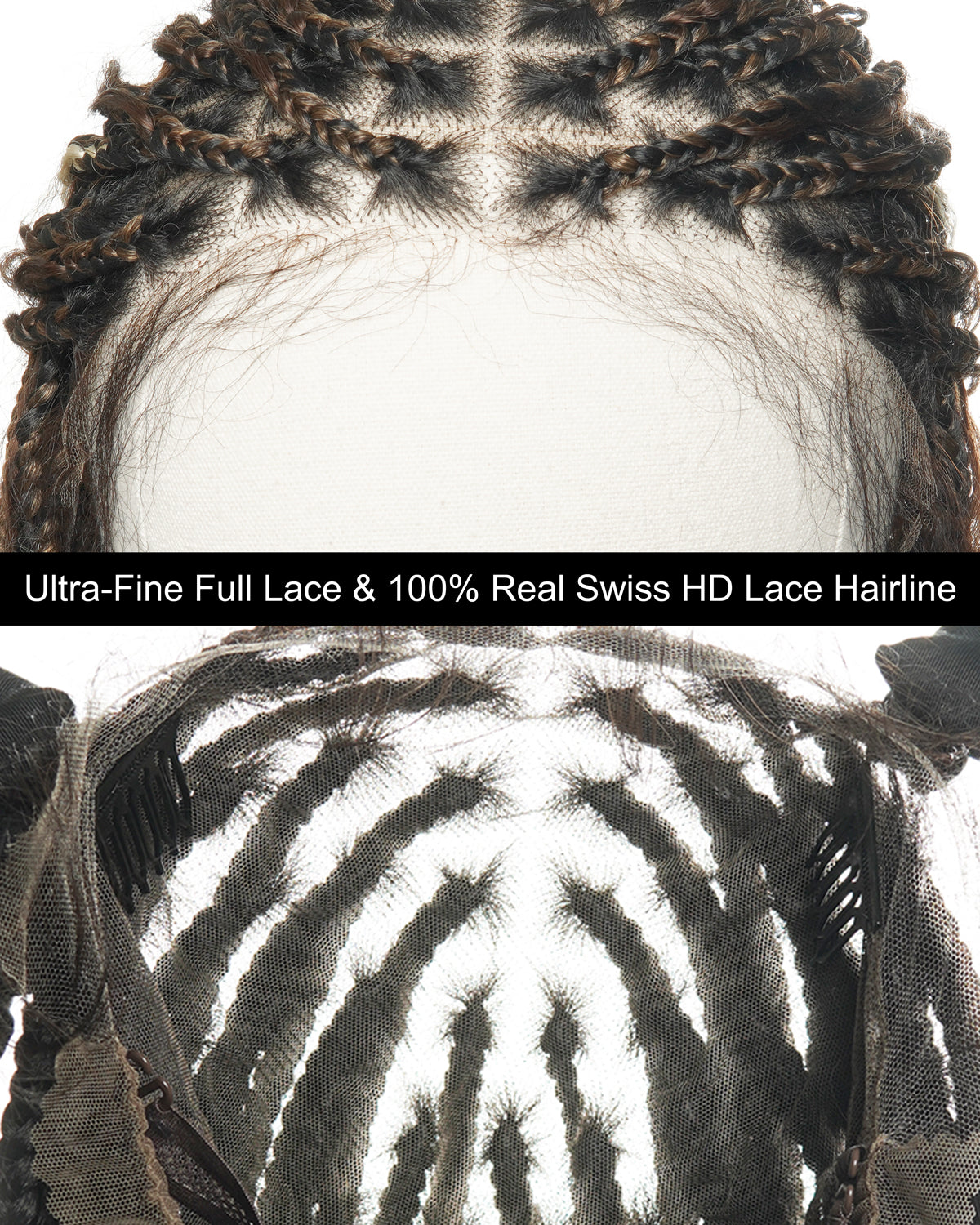
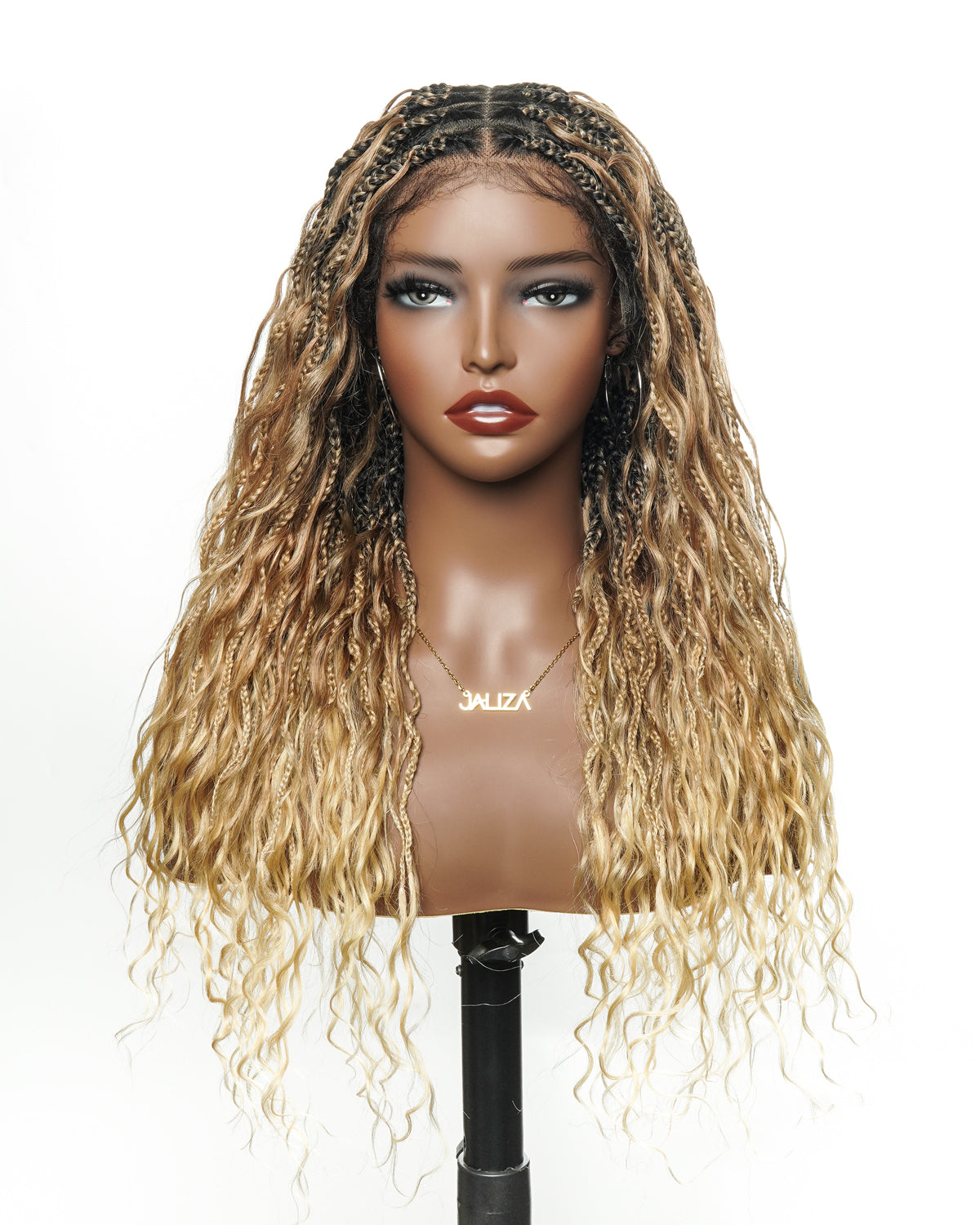

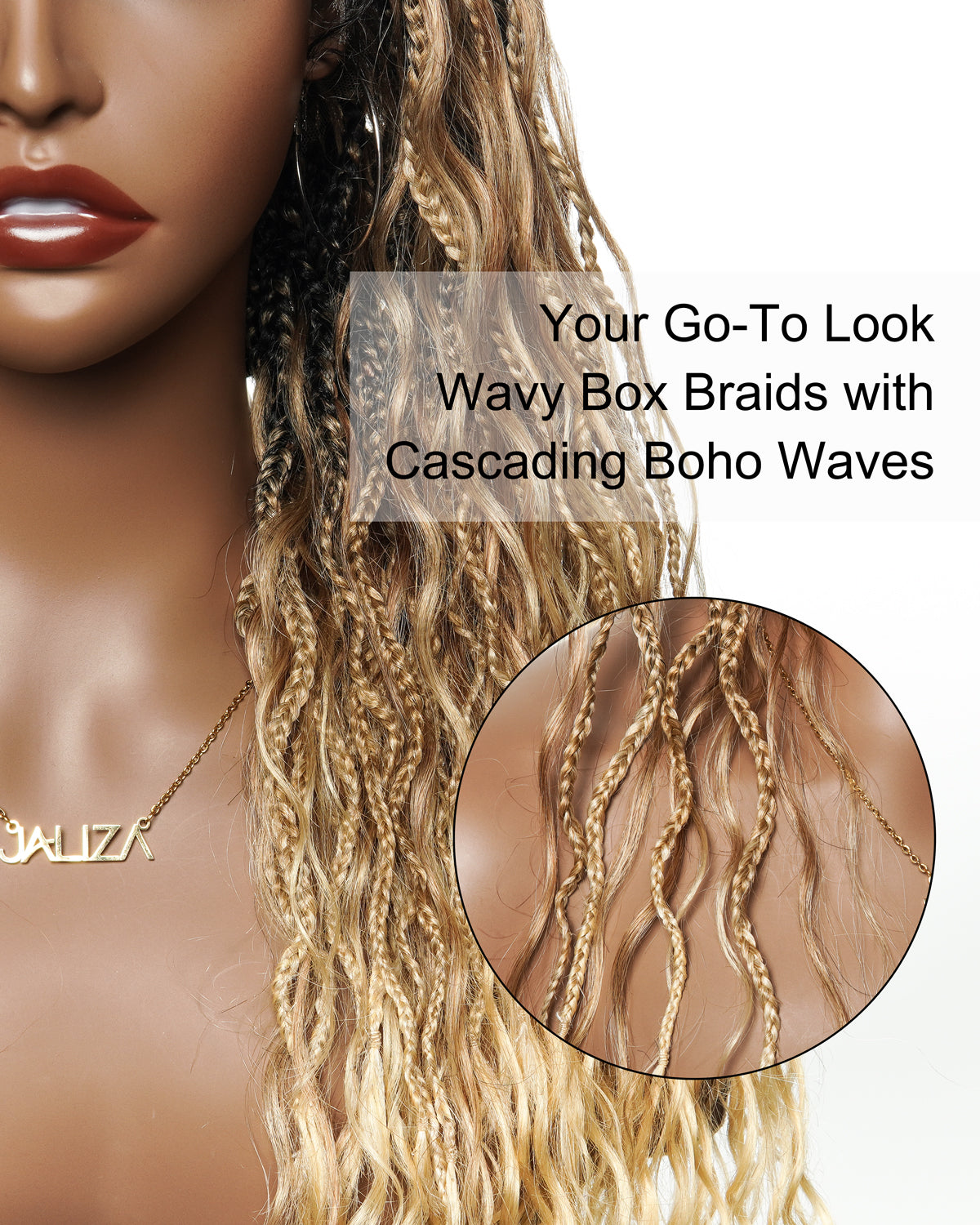
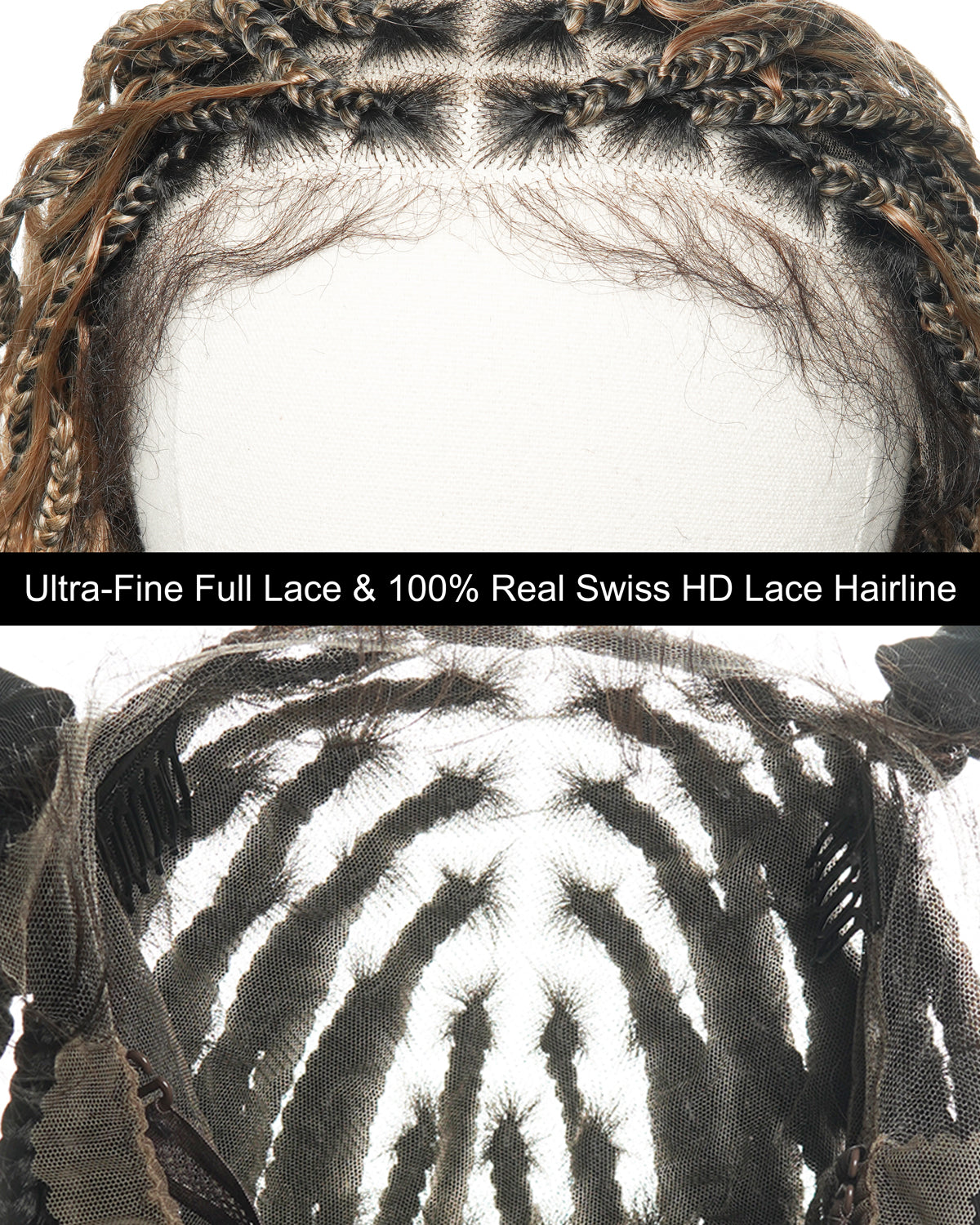
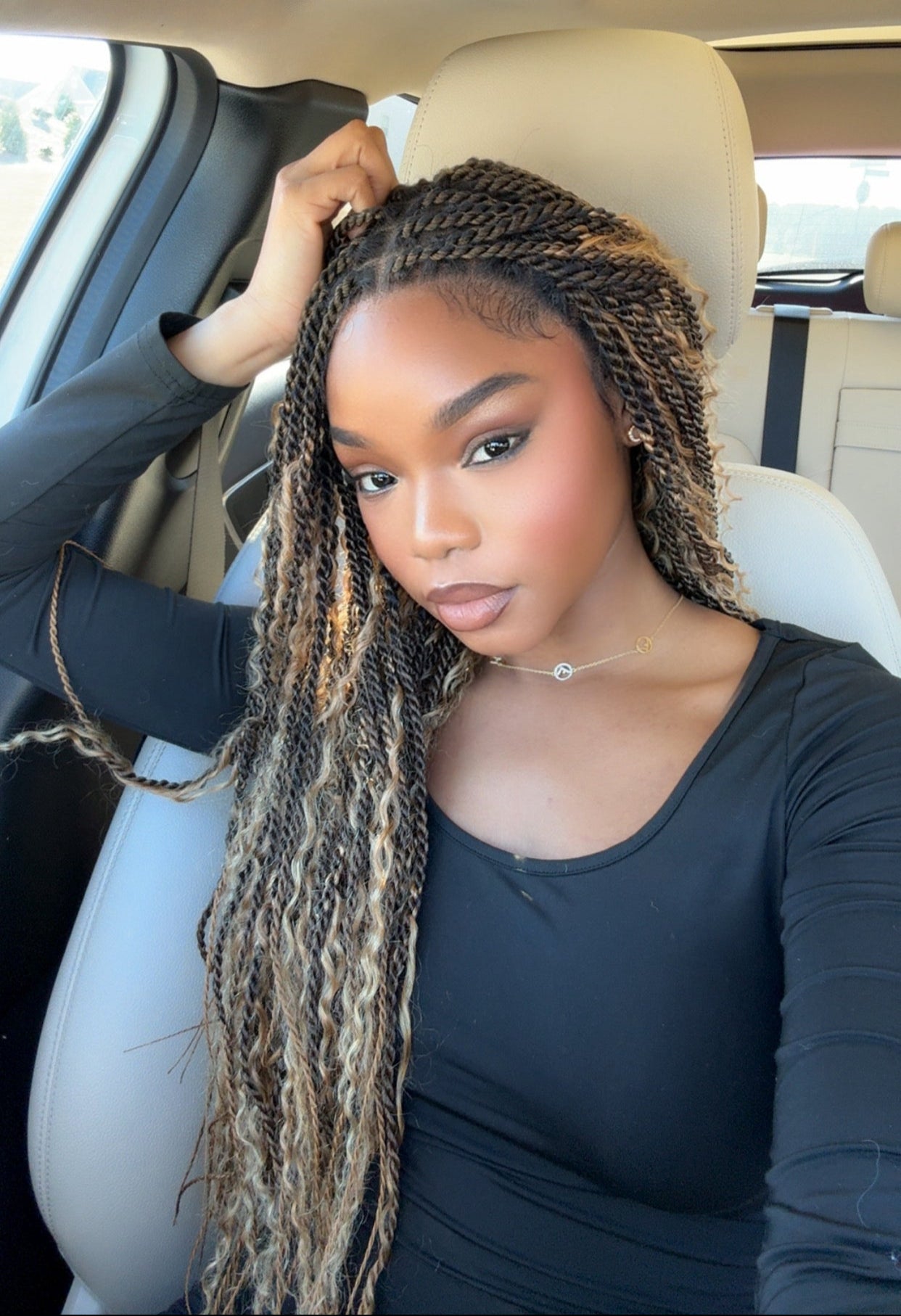

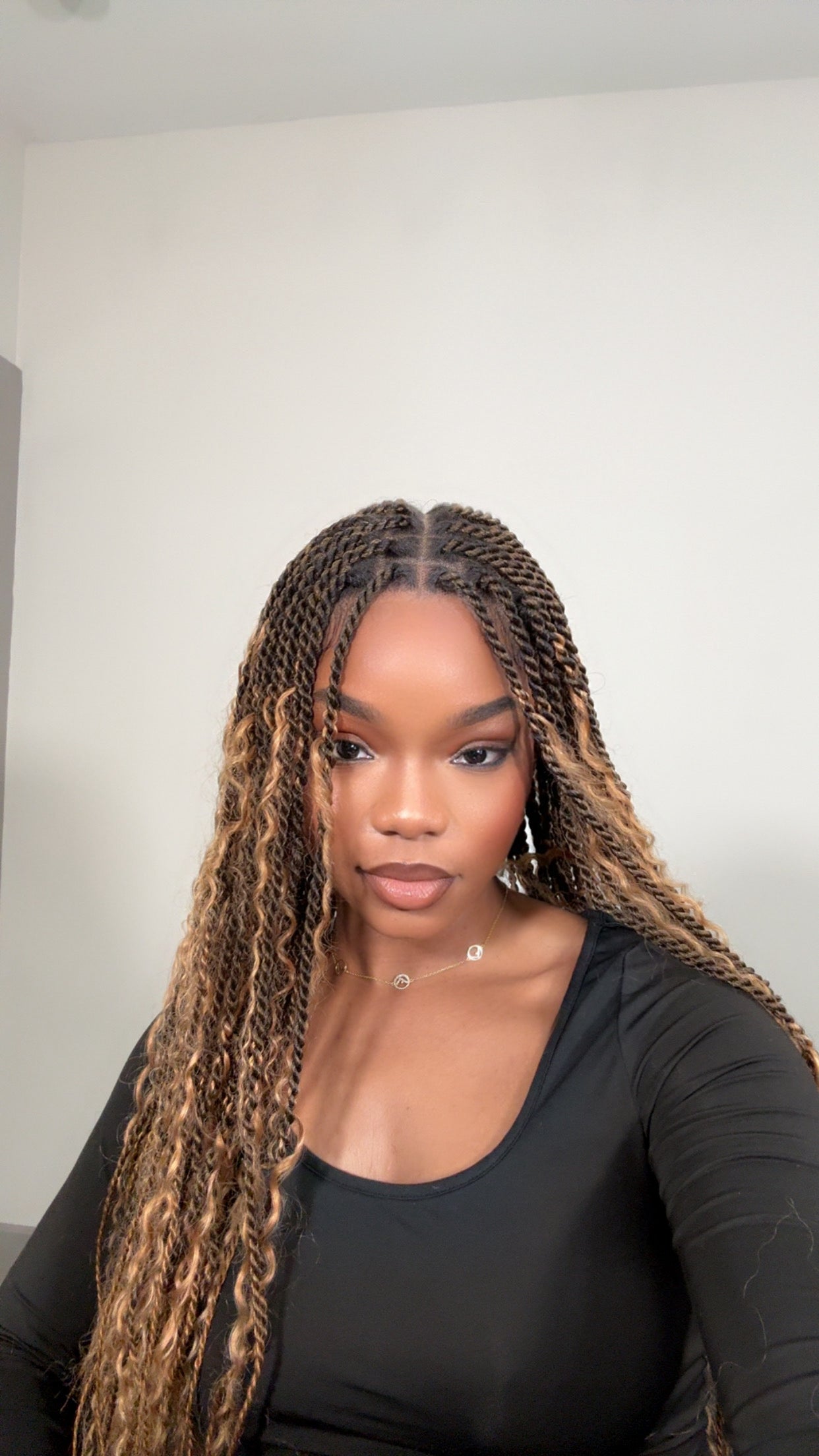

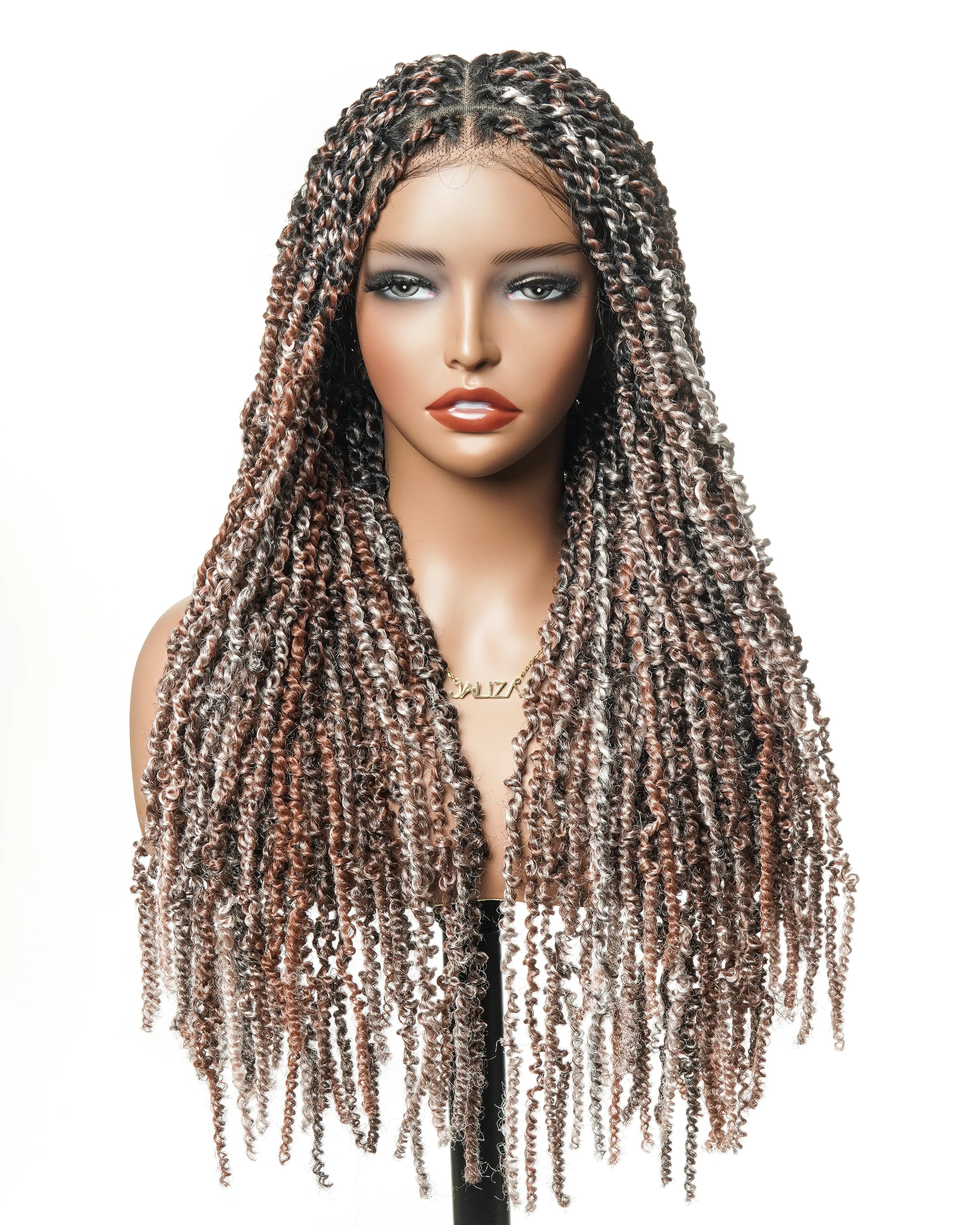
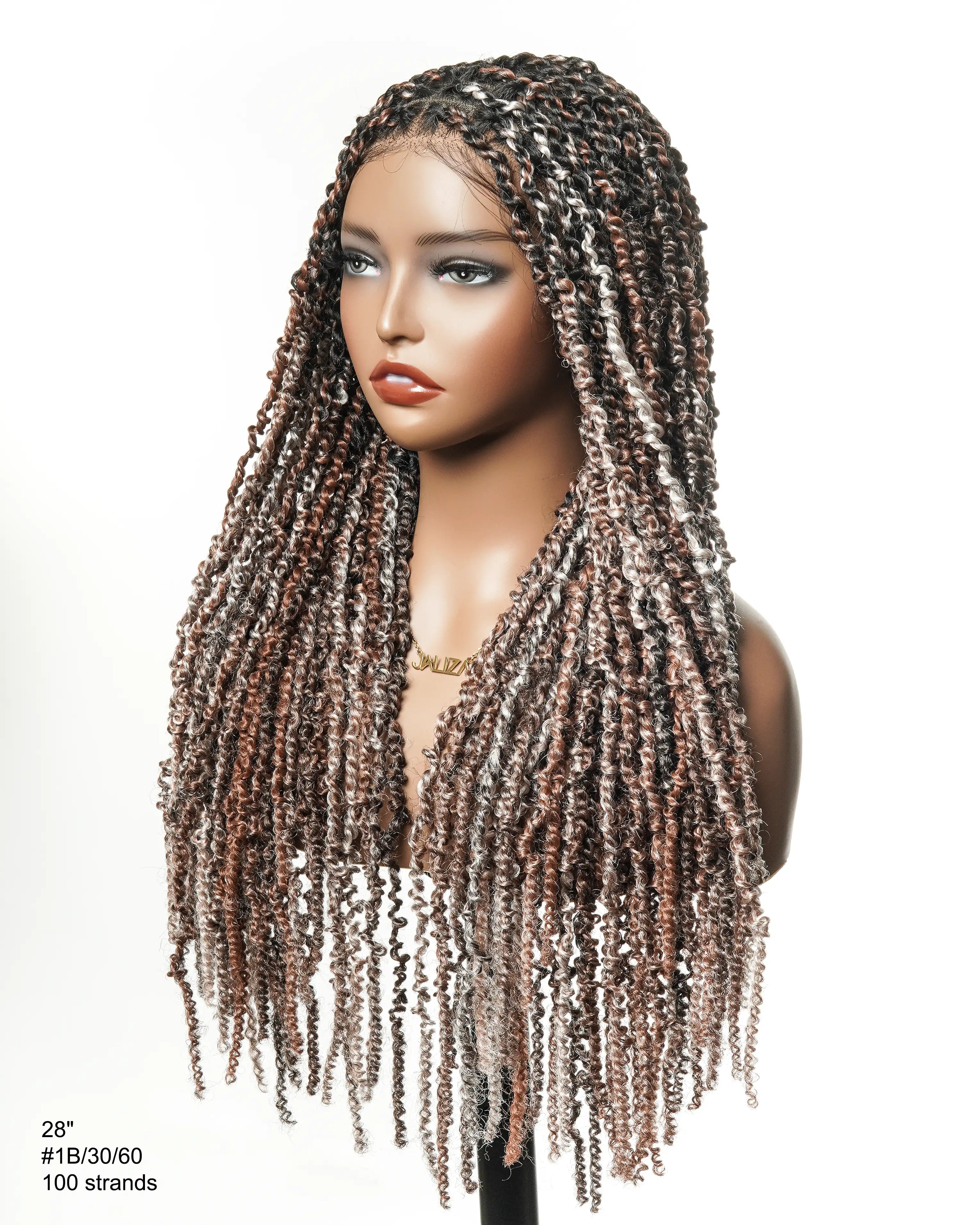
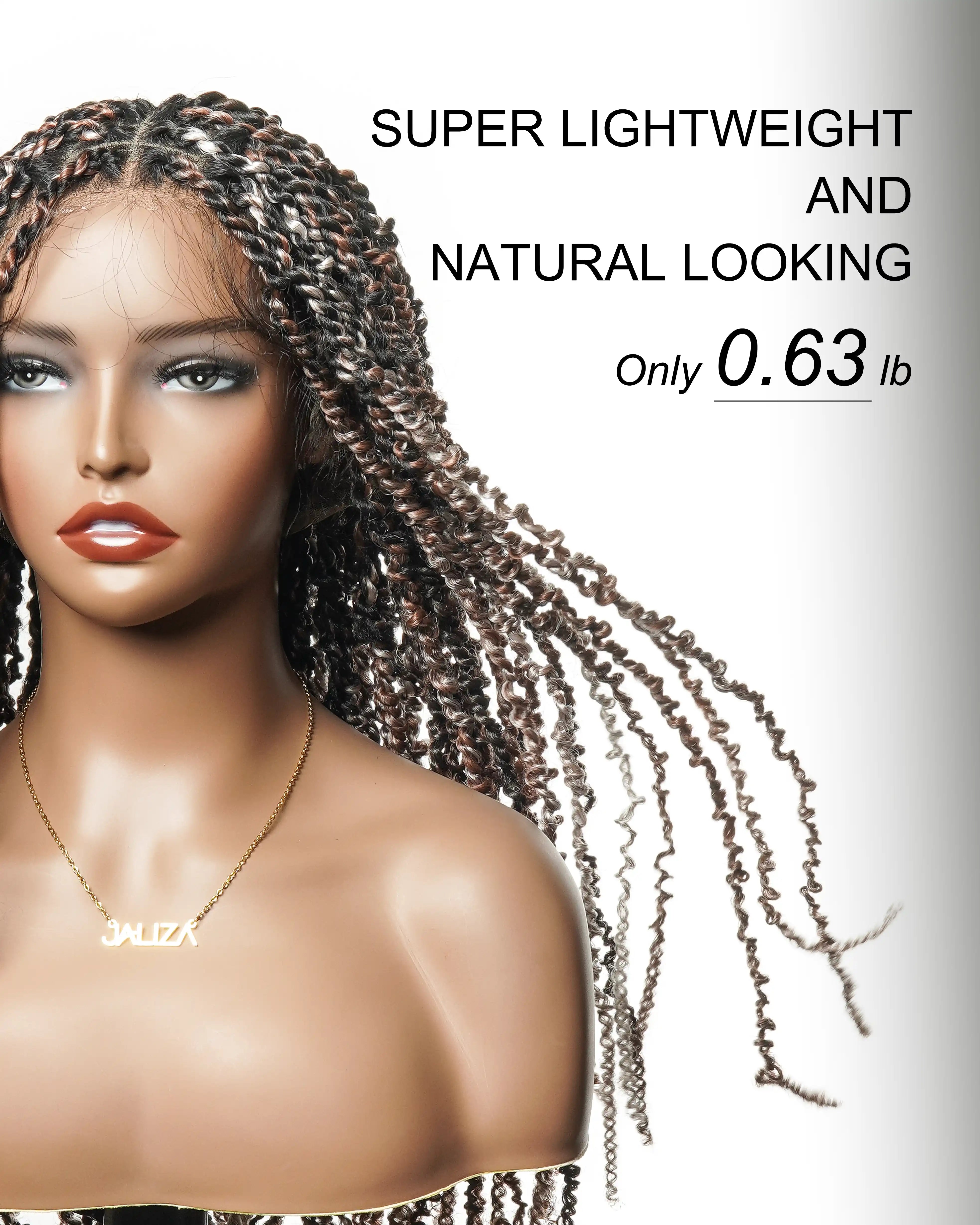
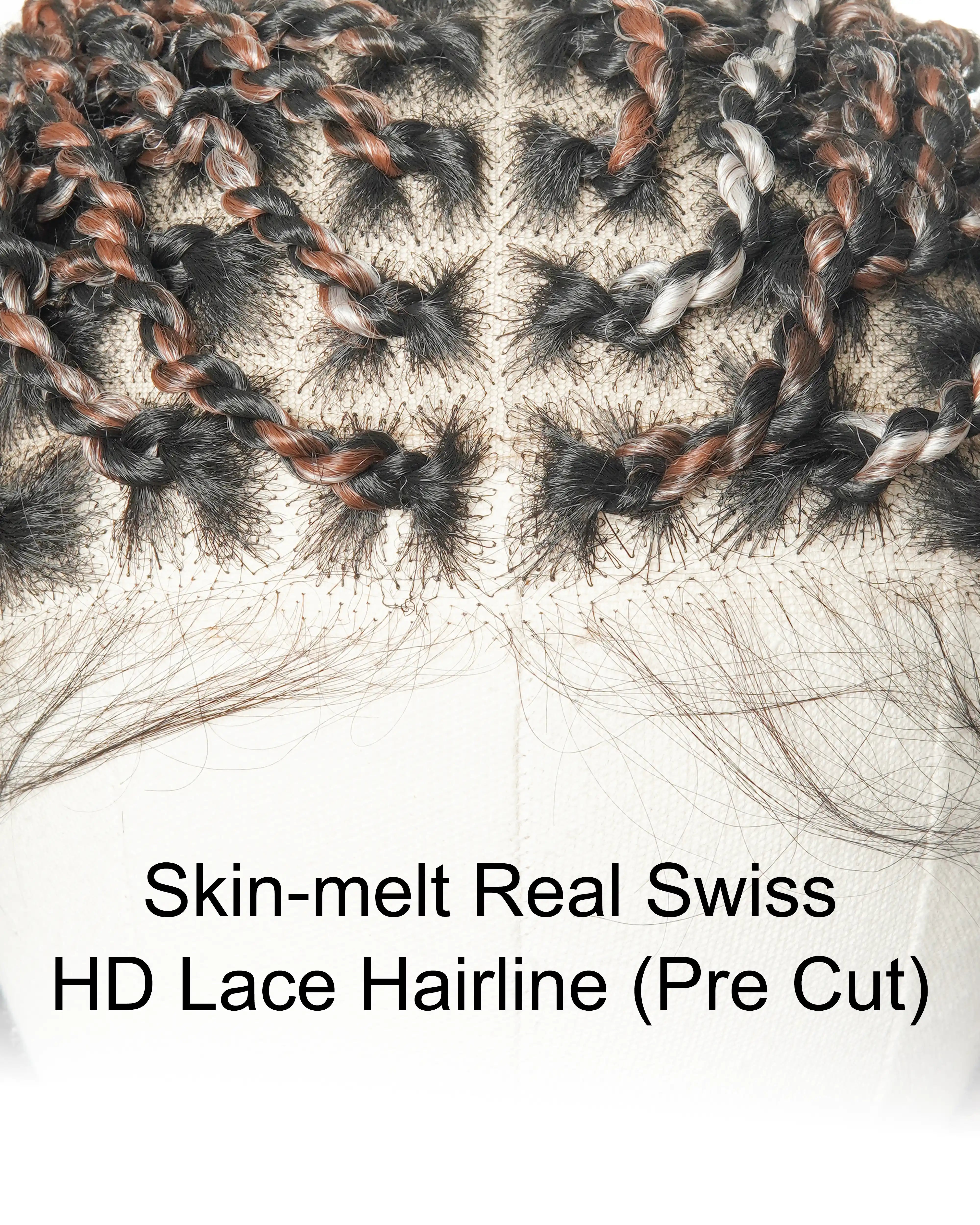
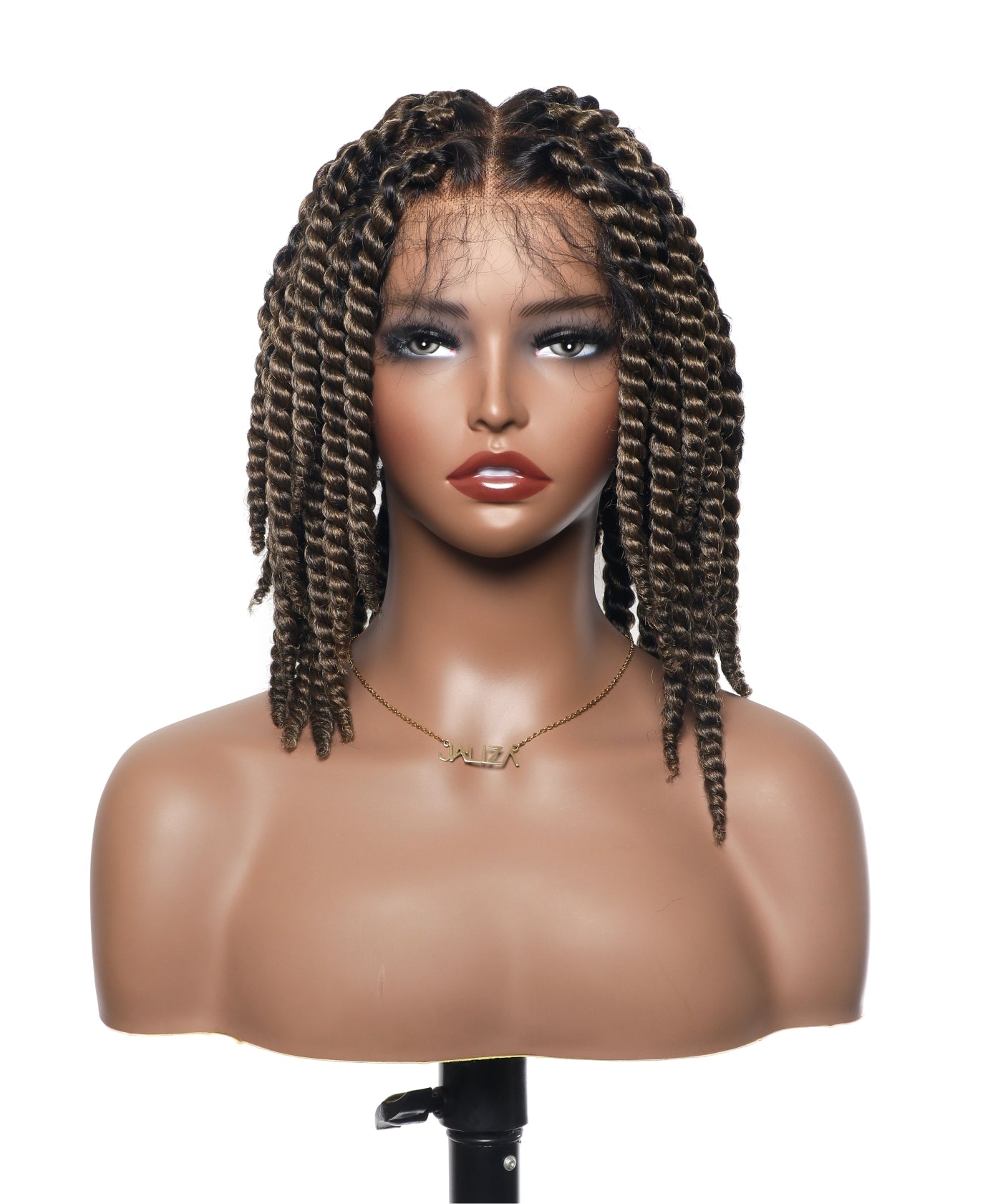
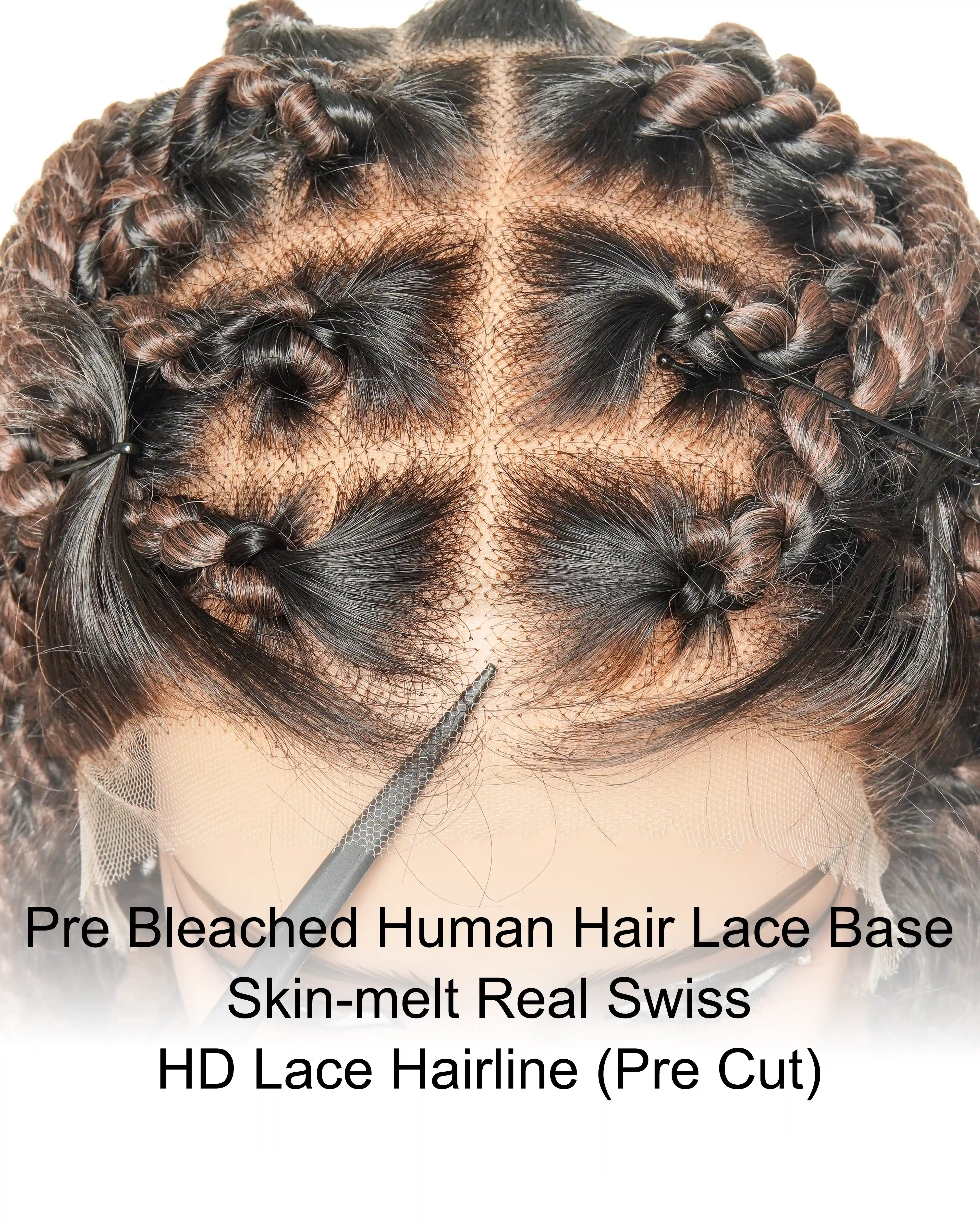
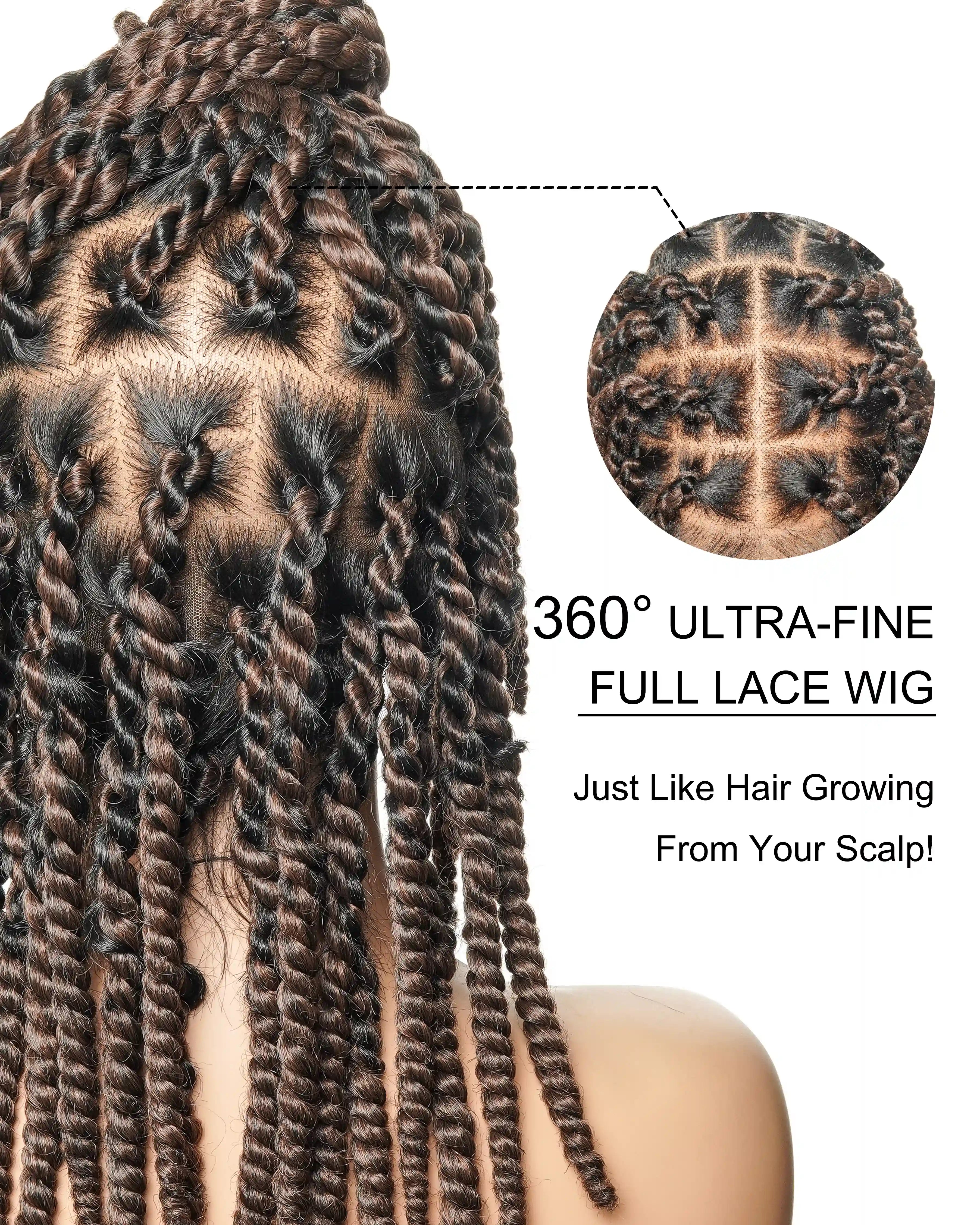
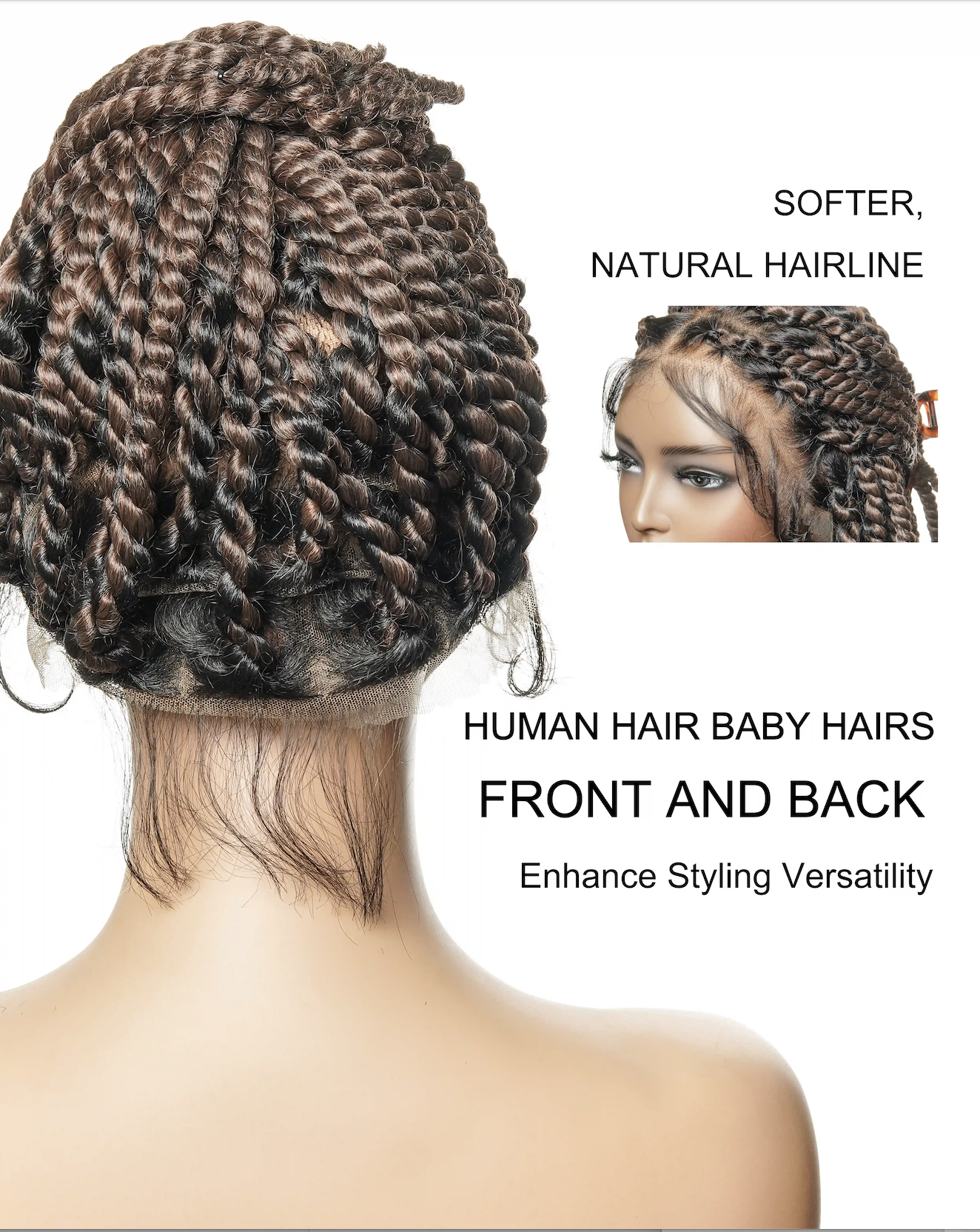
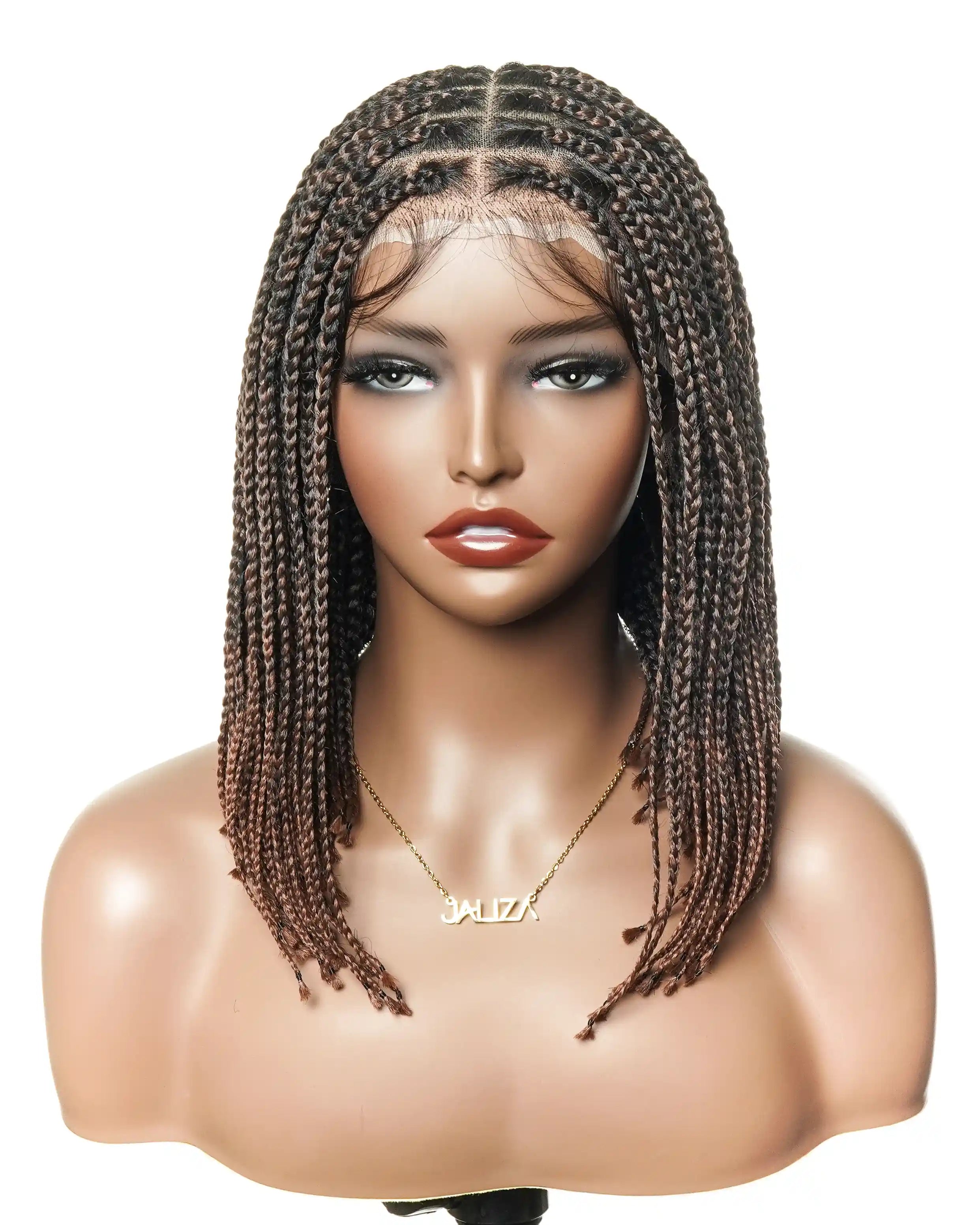
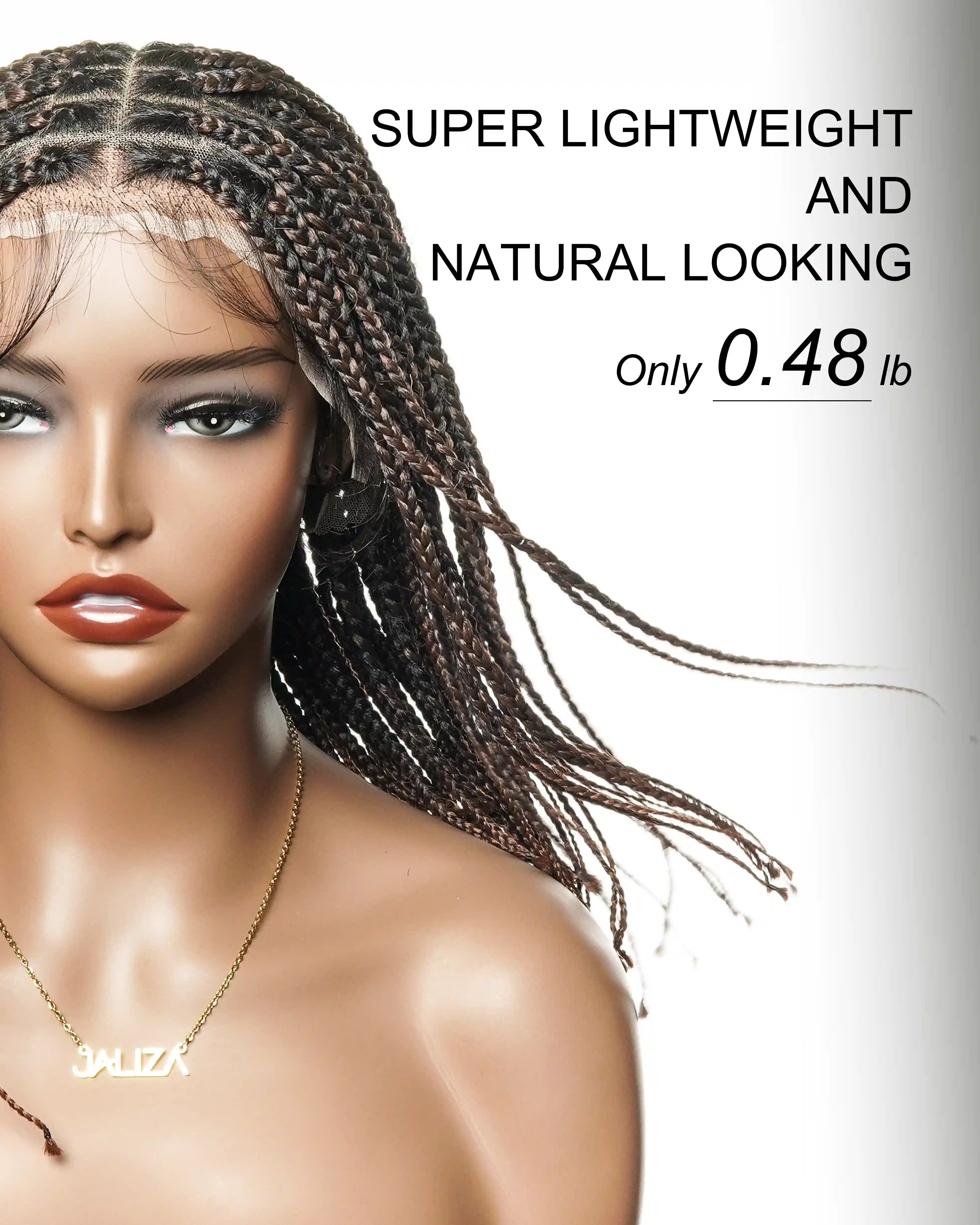
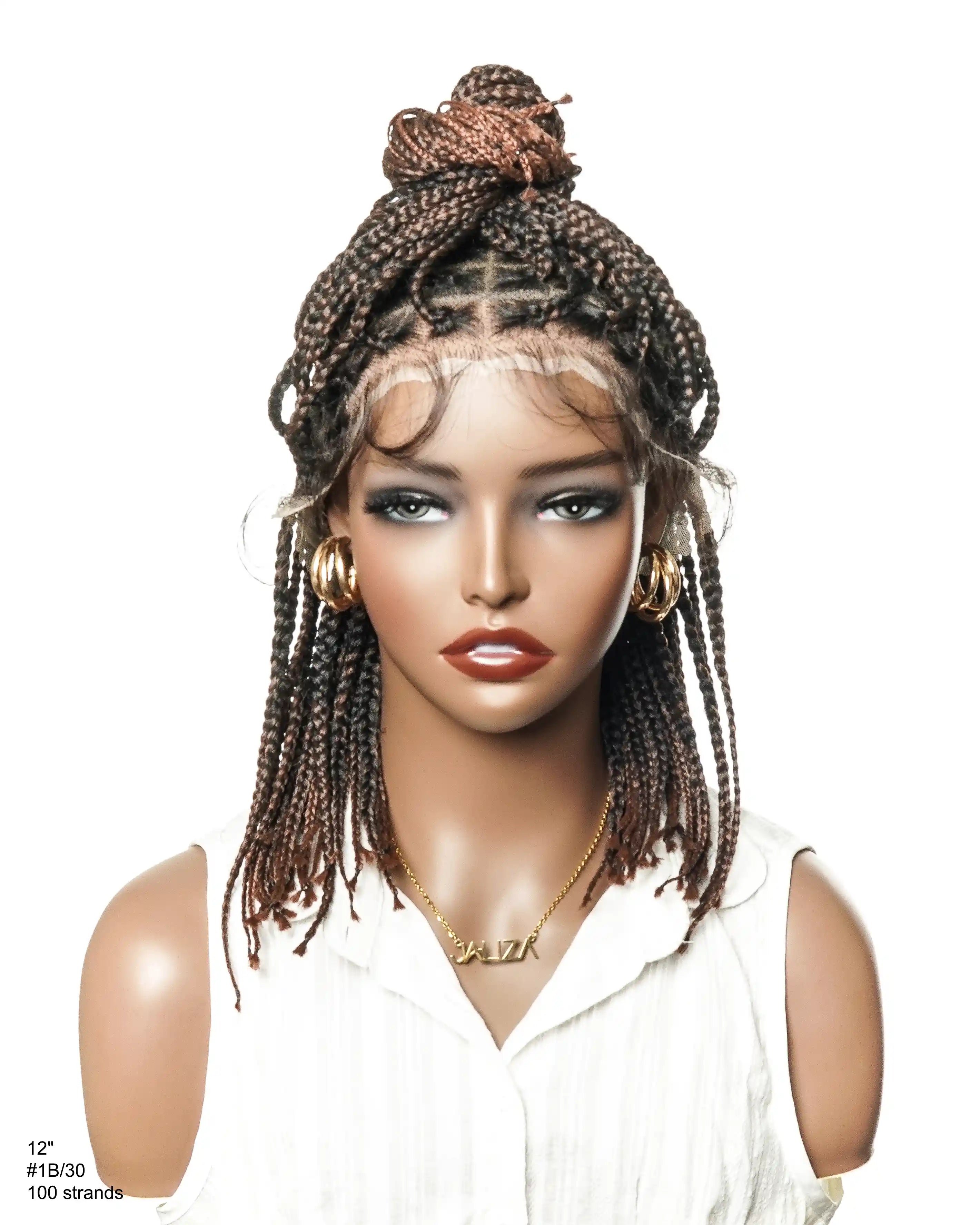
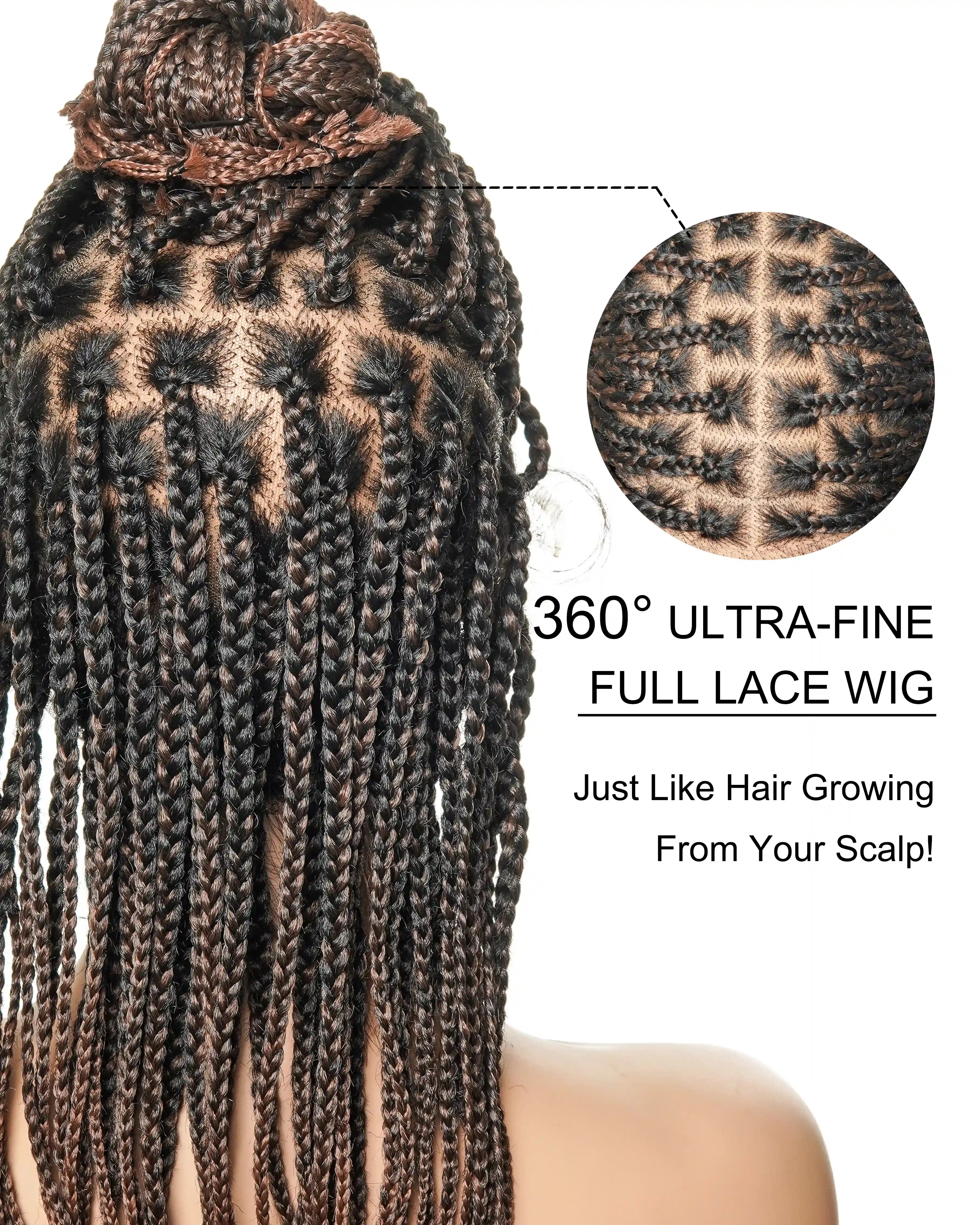
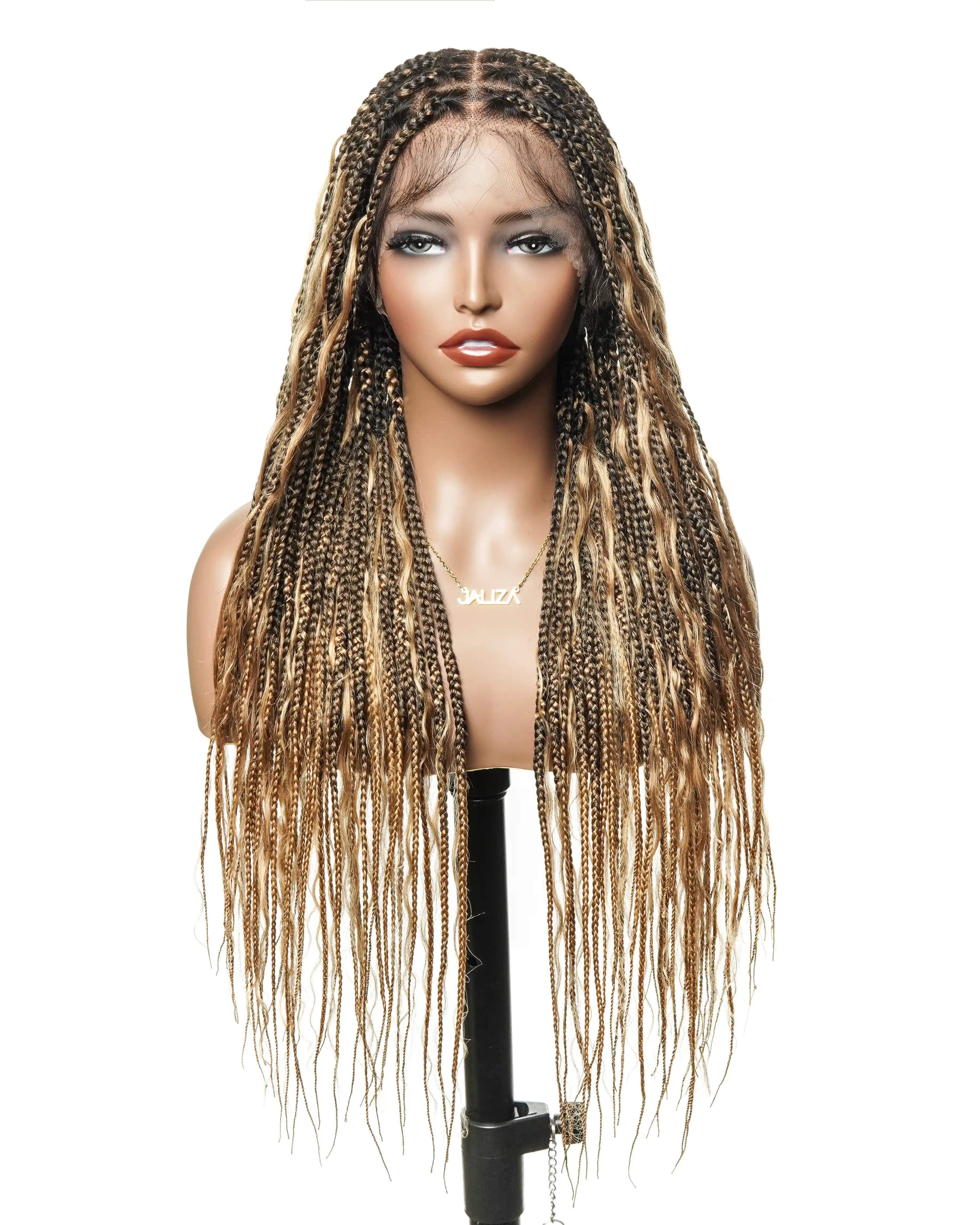
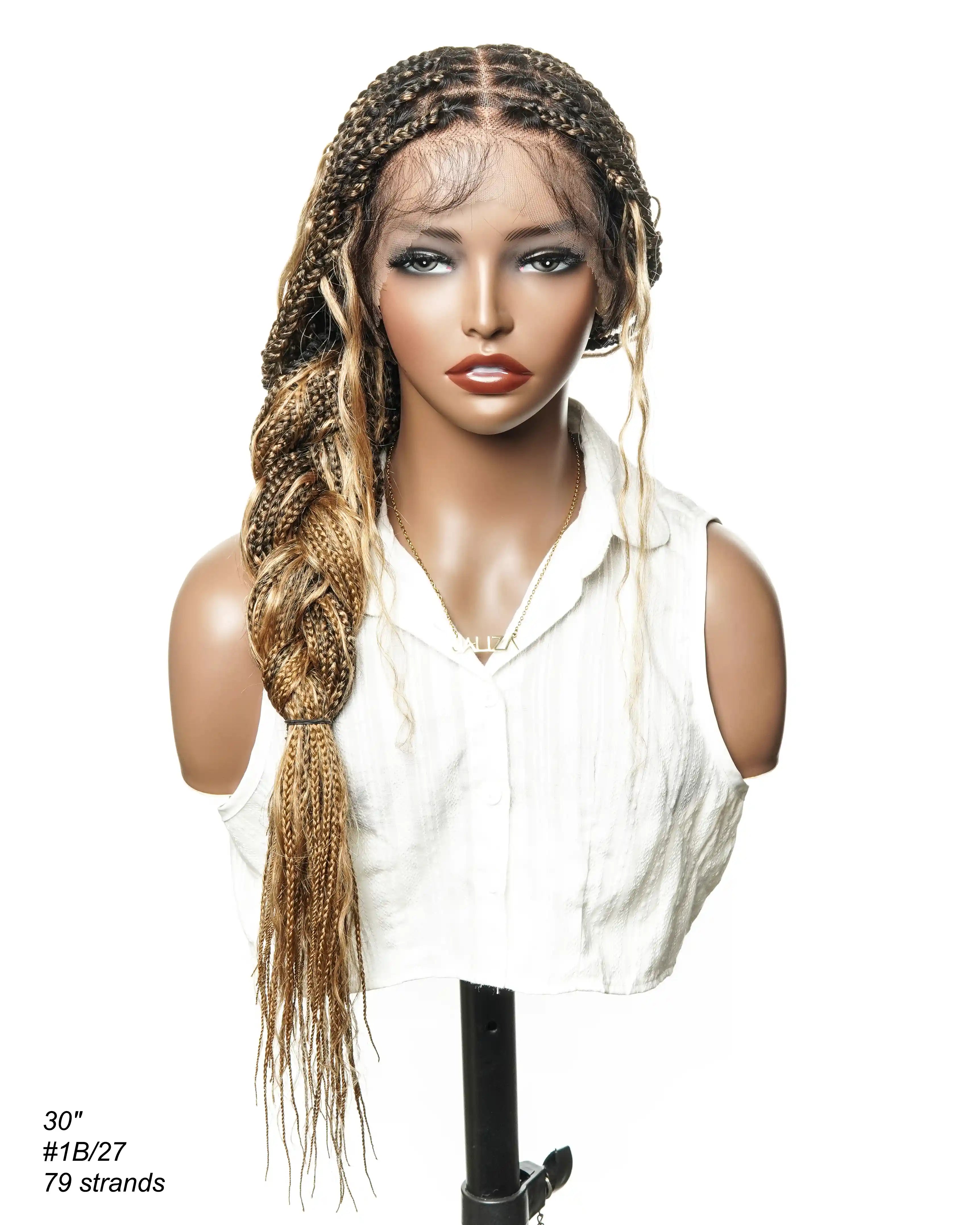
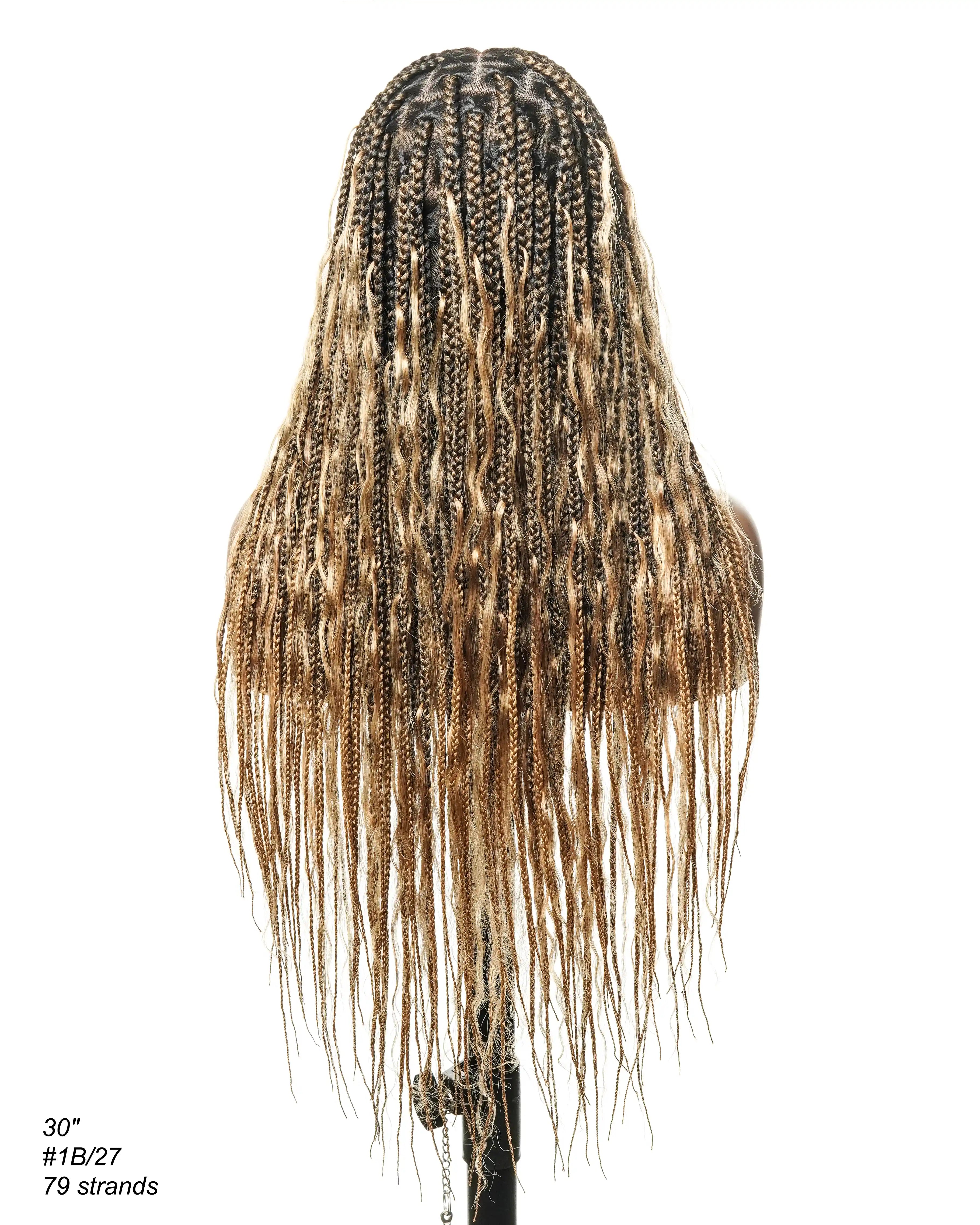
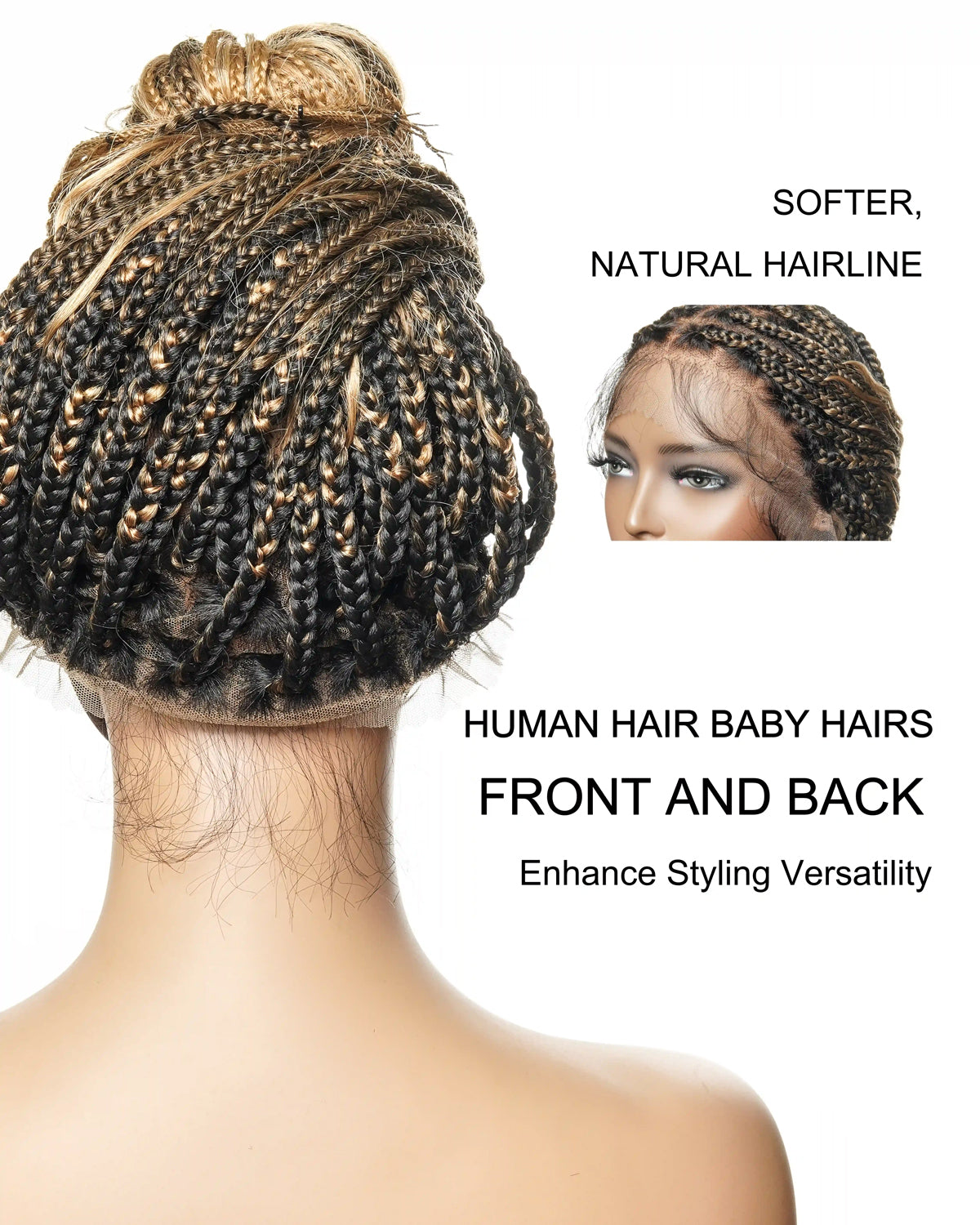
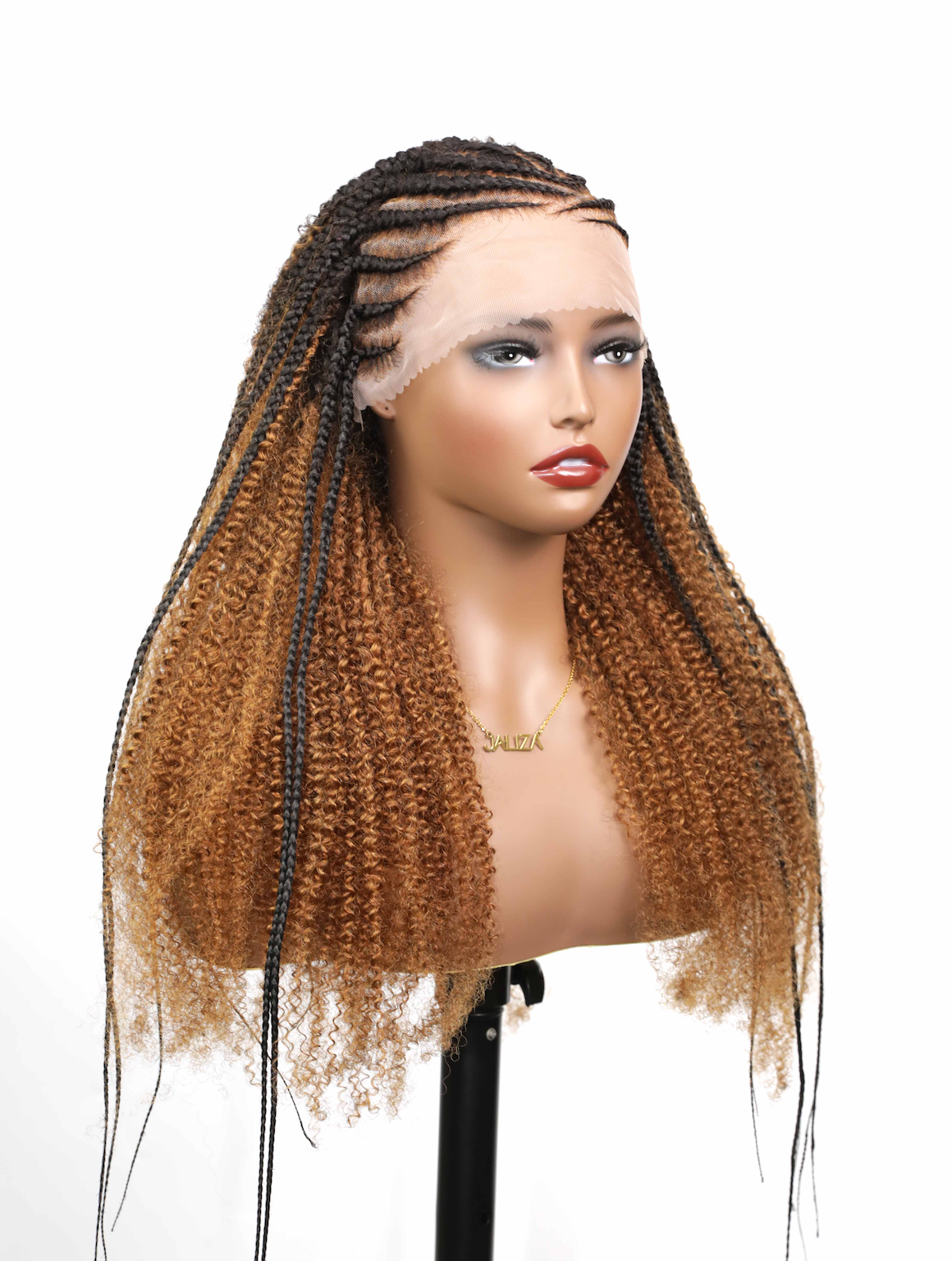
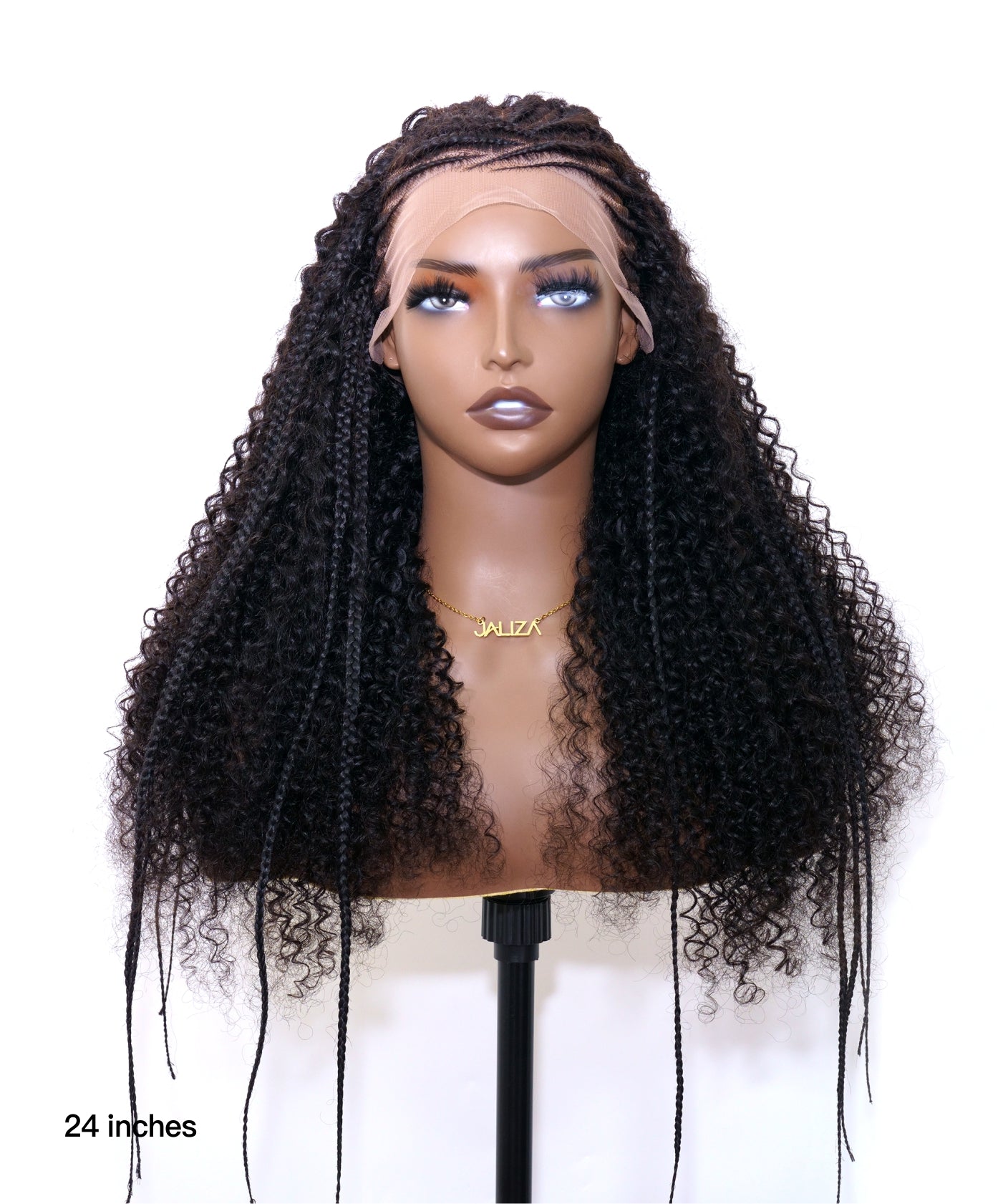
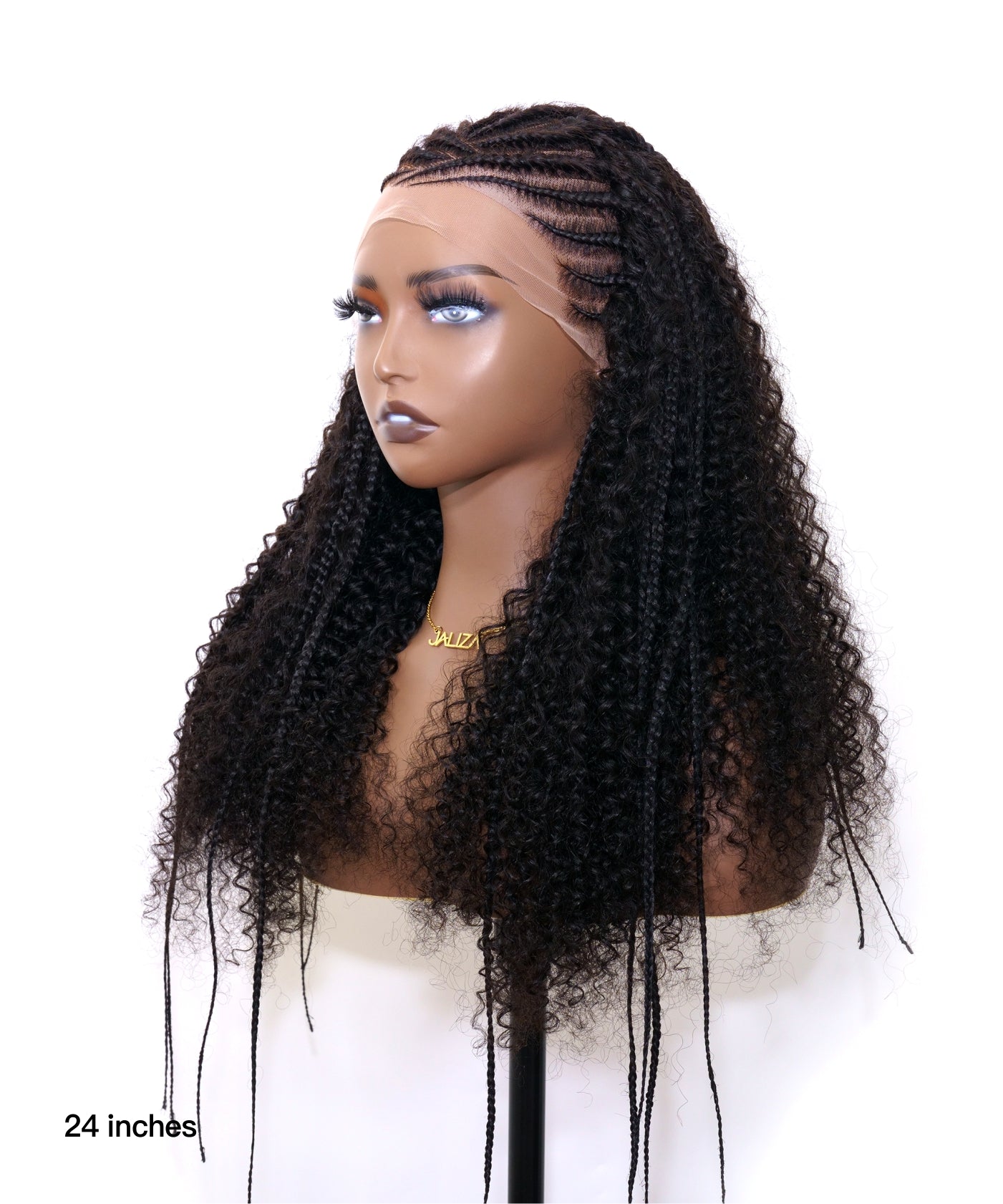
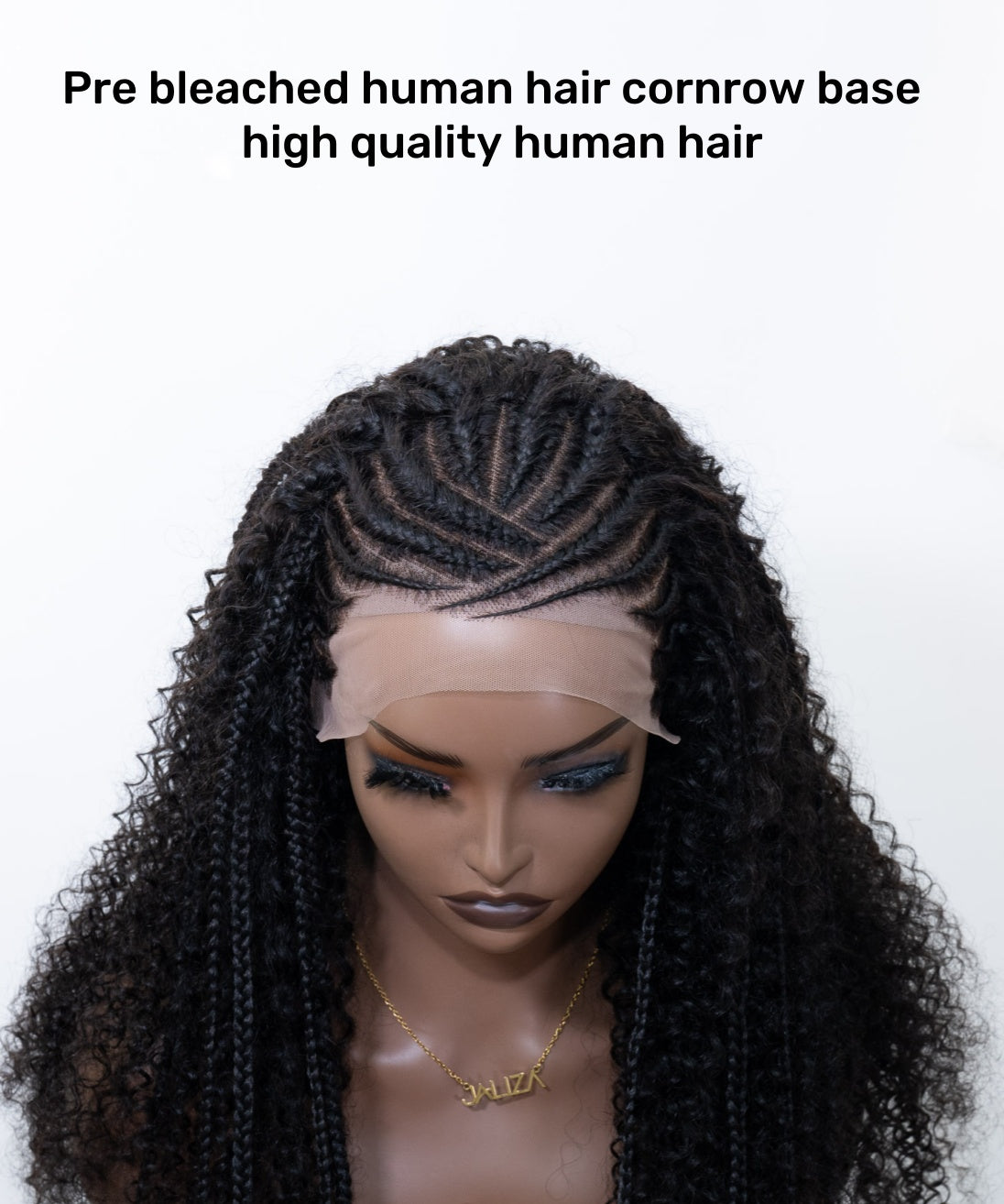
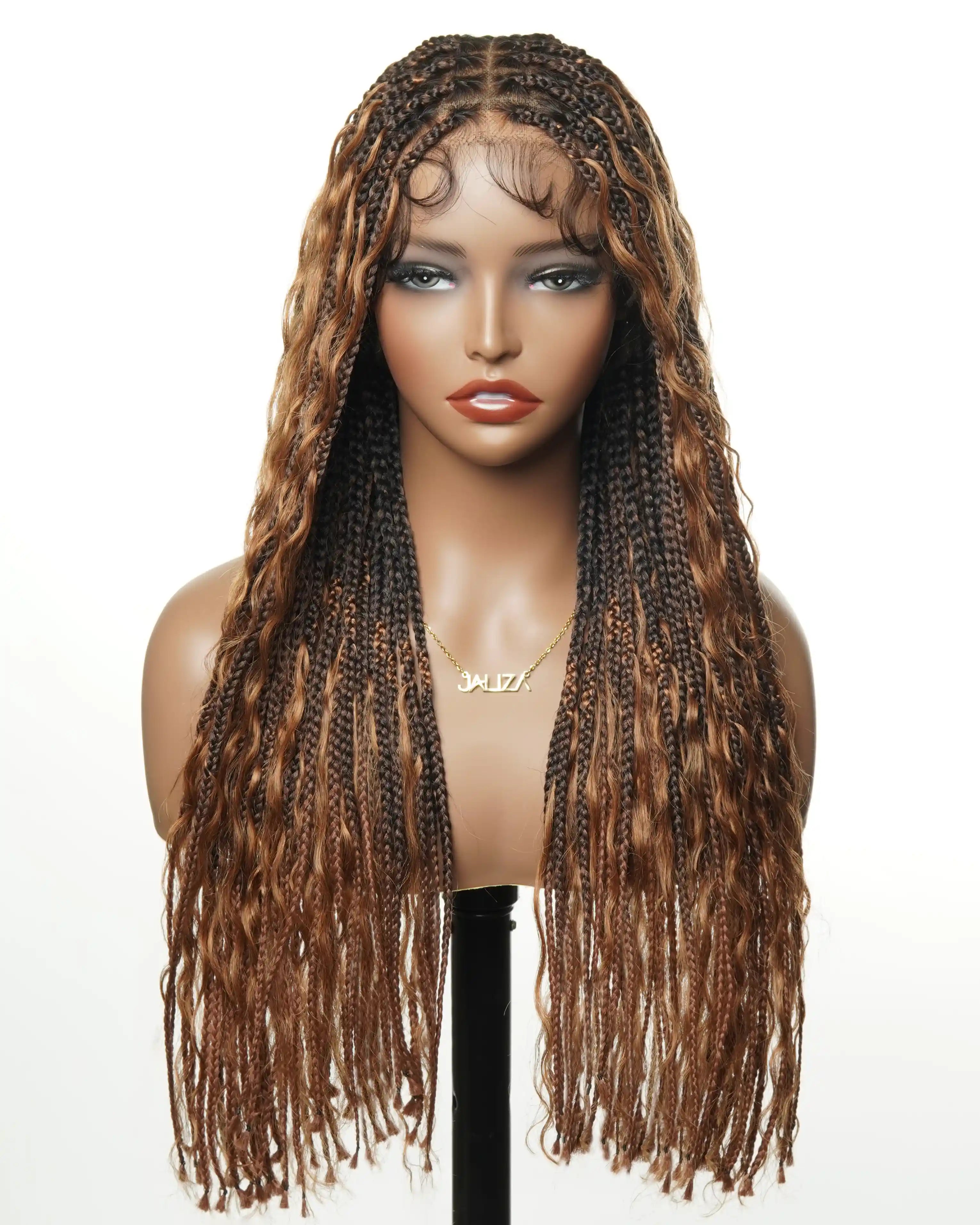
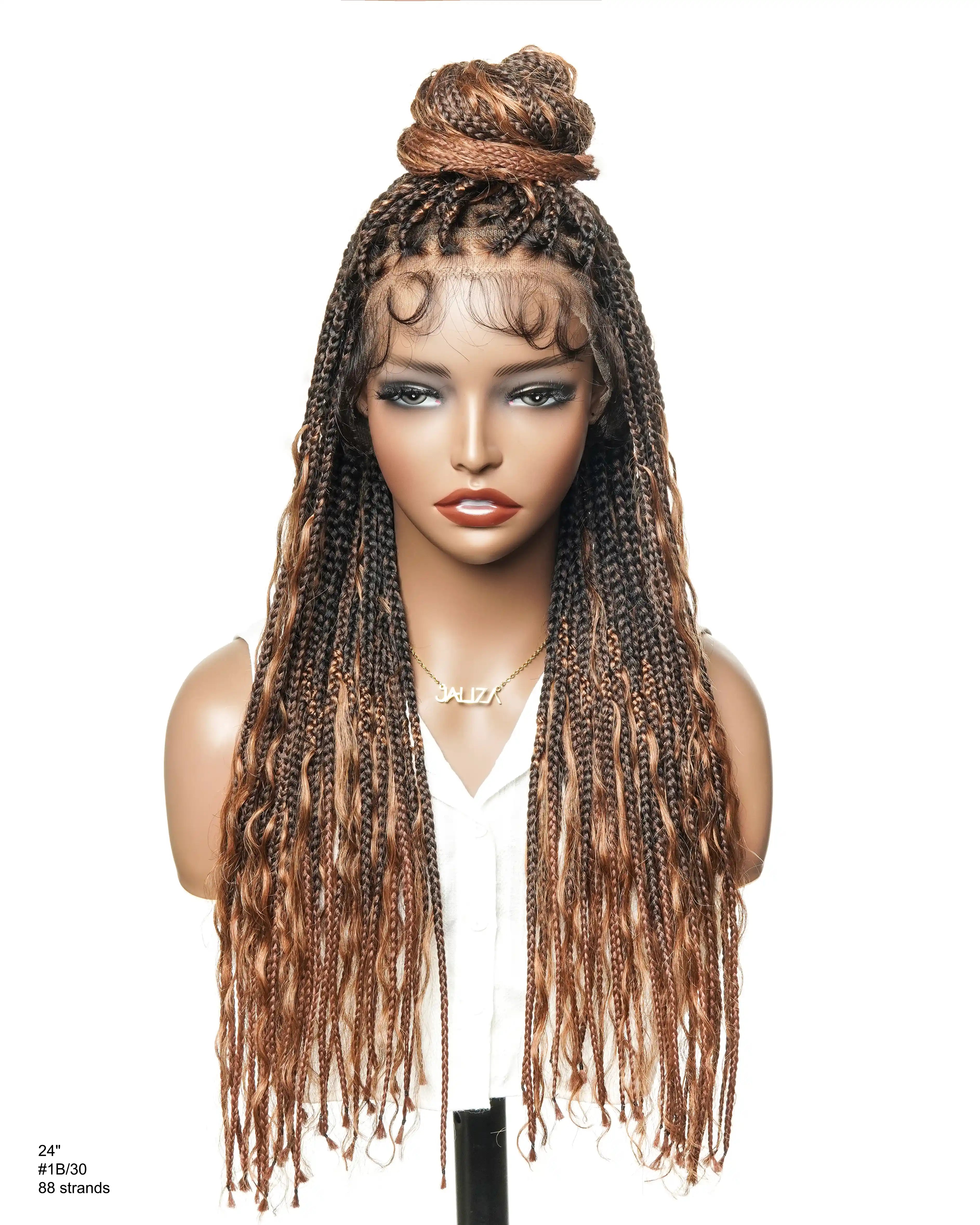
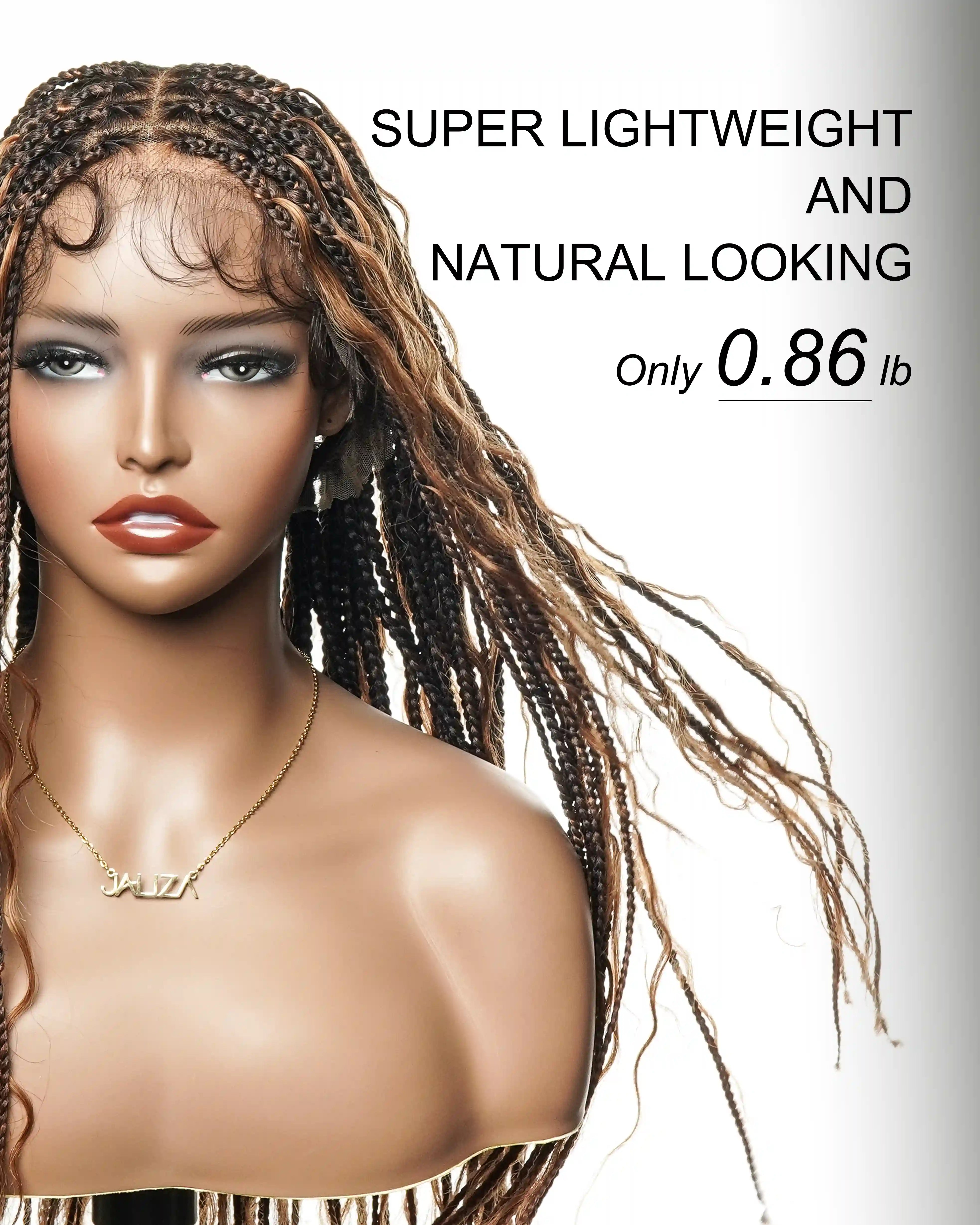
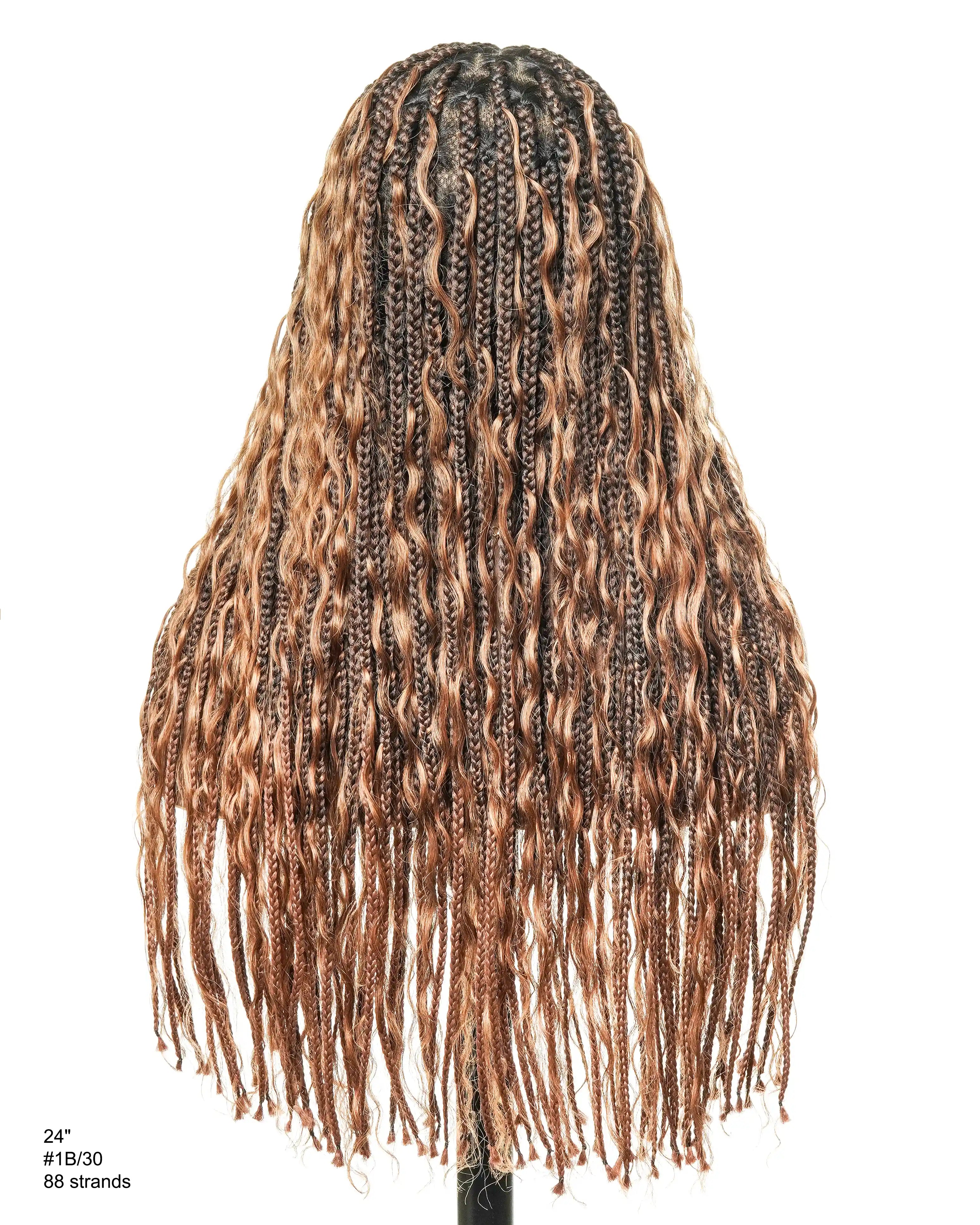
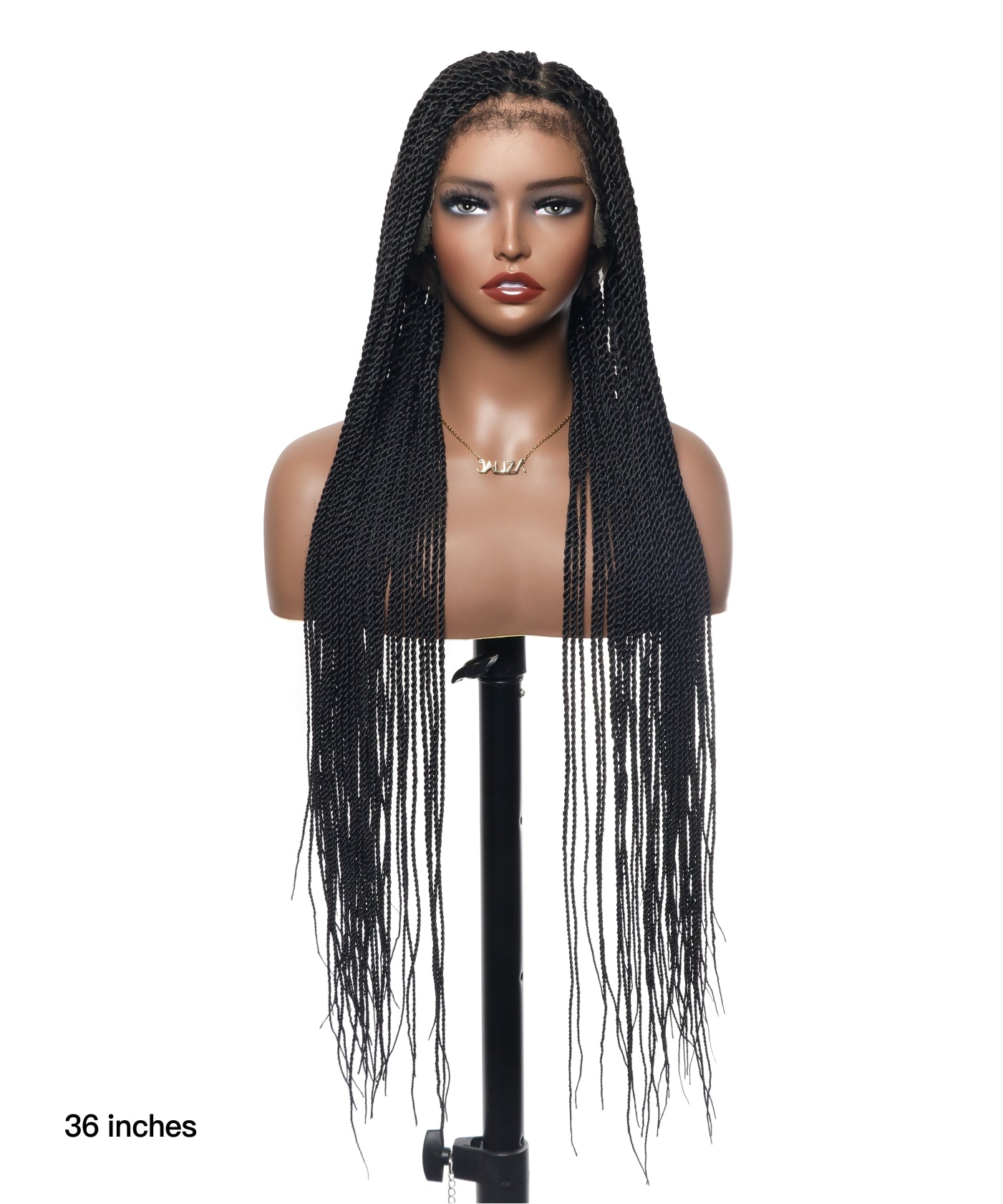
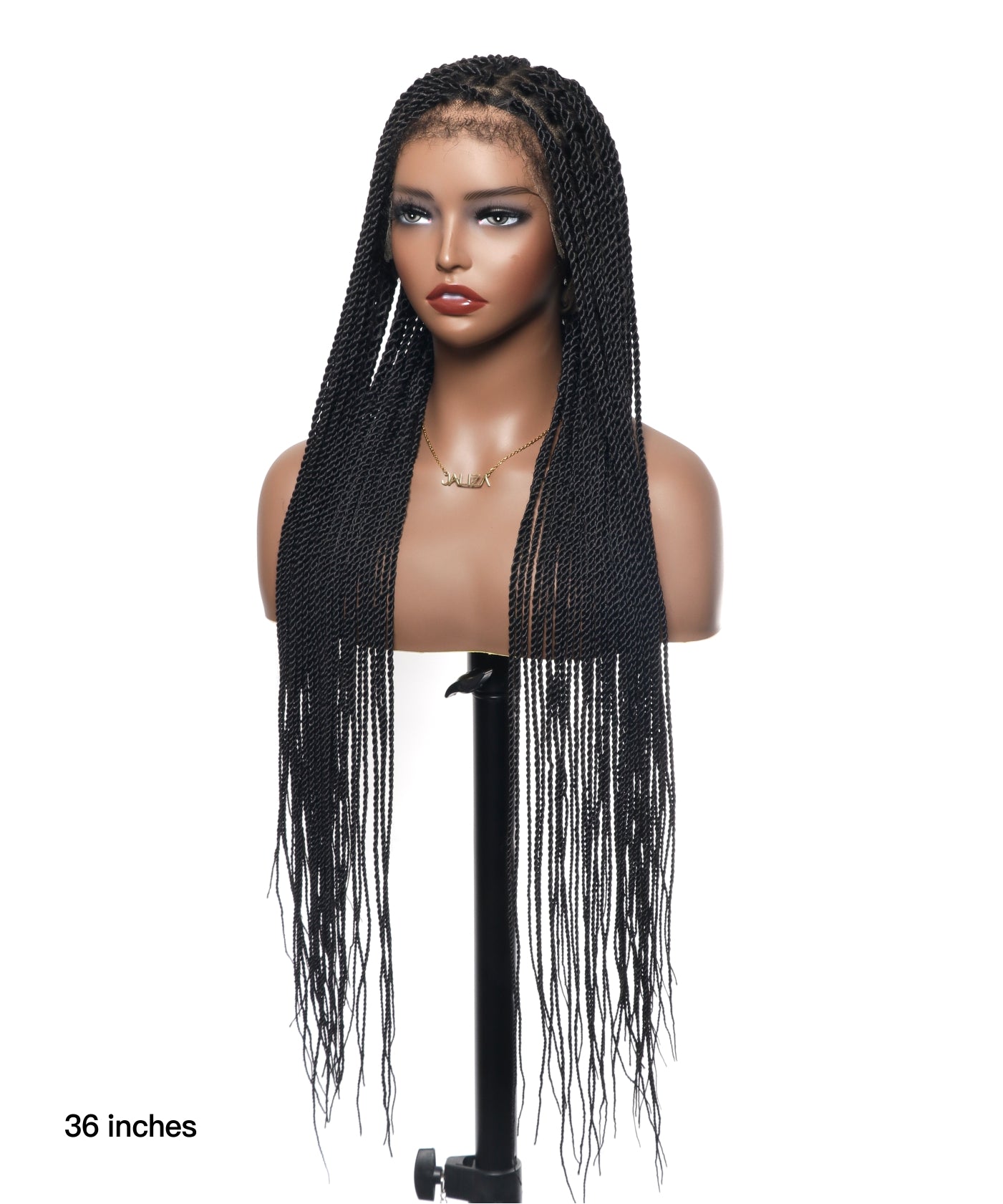
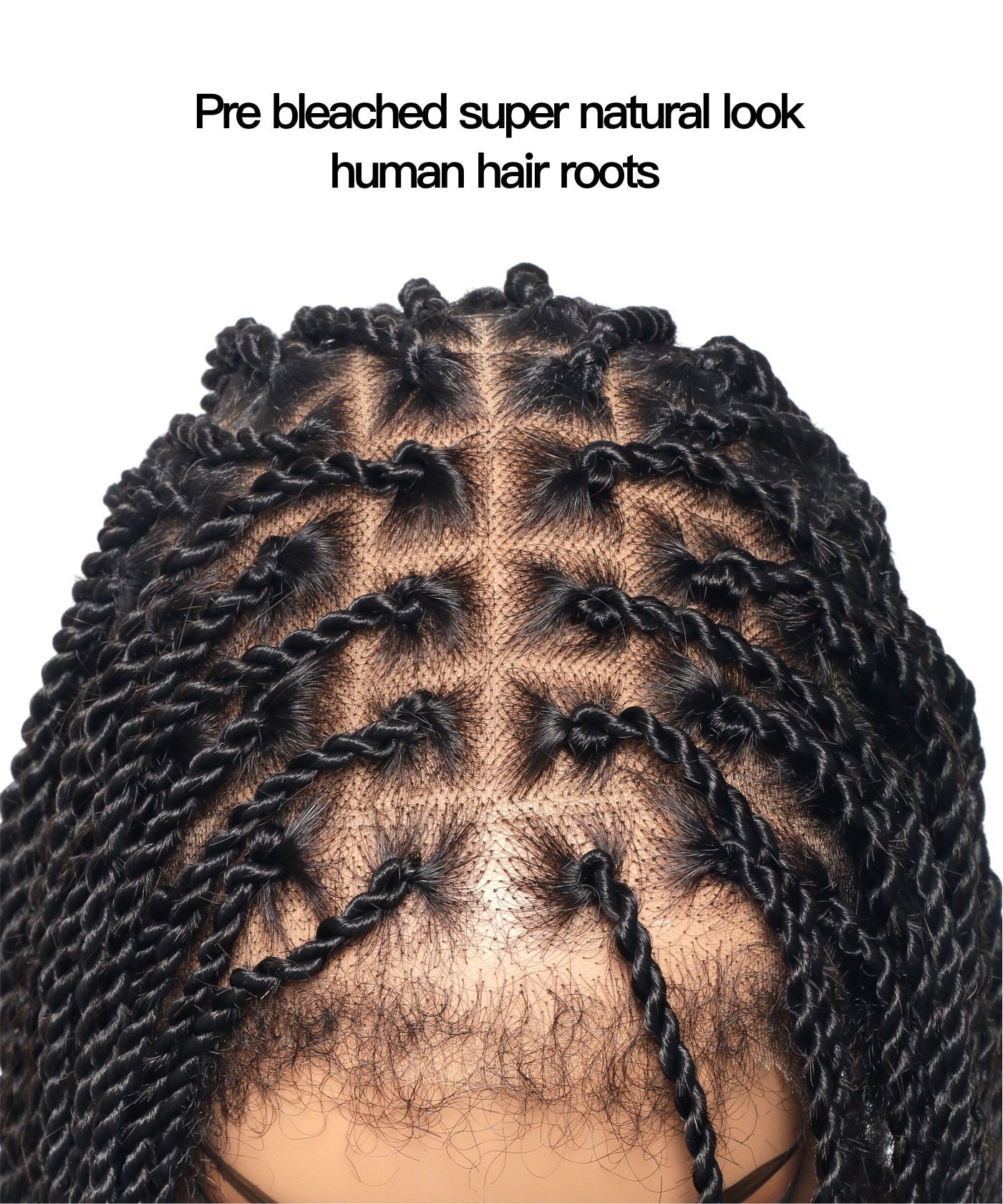
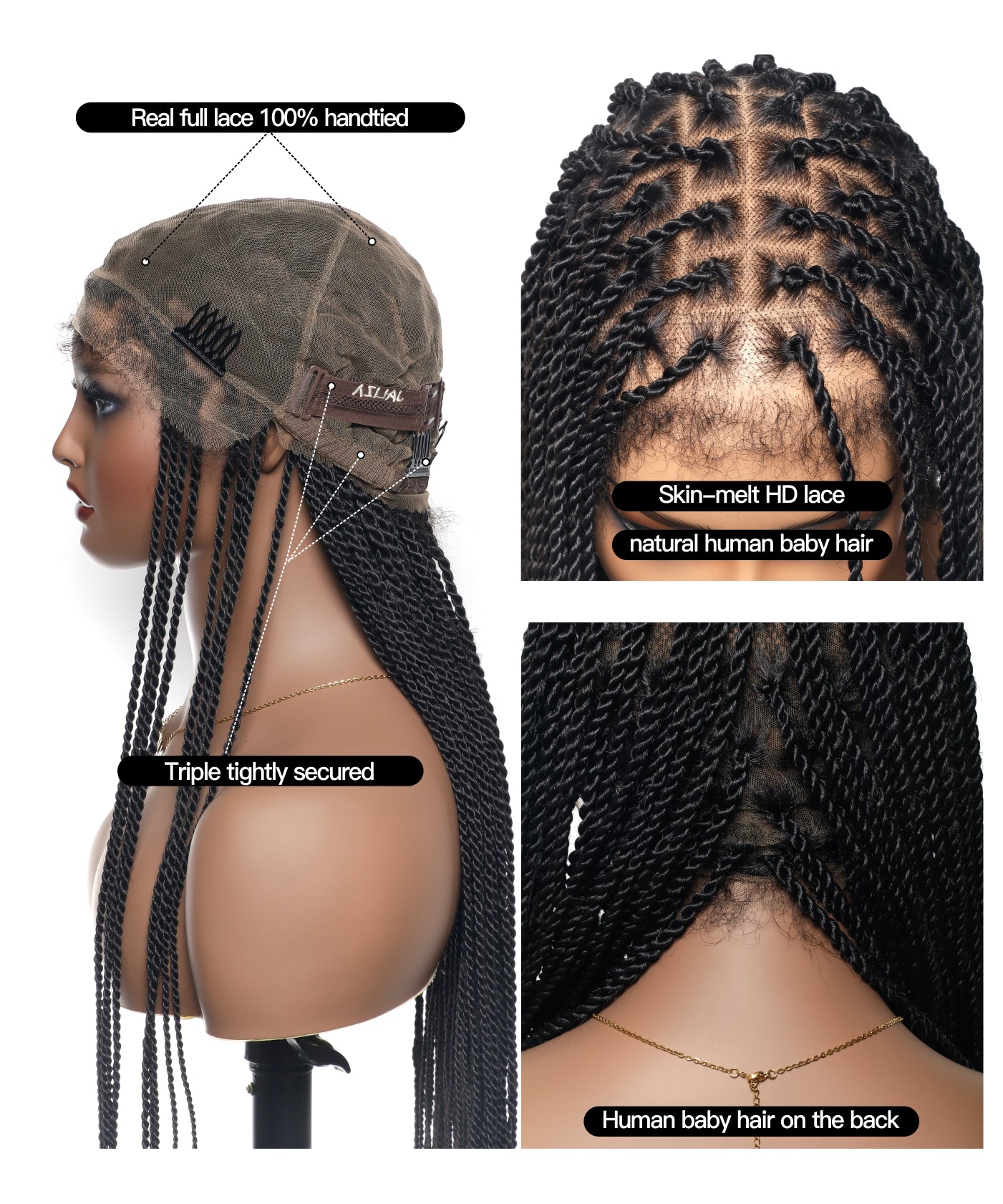
Share:
Box Braids and Knotless Braids: A Longevity Struggle
Cornrows: Unraveling the Protective Qualities of a Time-Honored Hairstyle